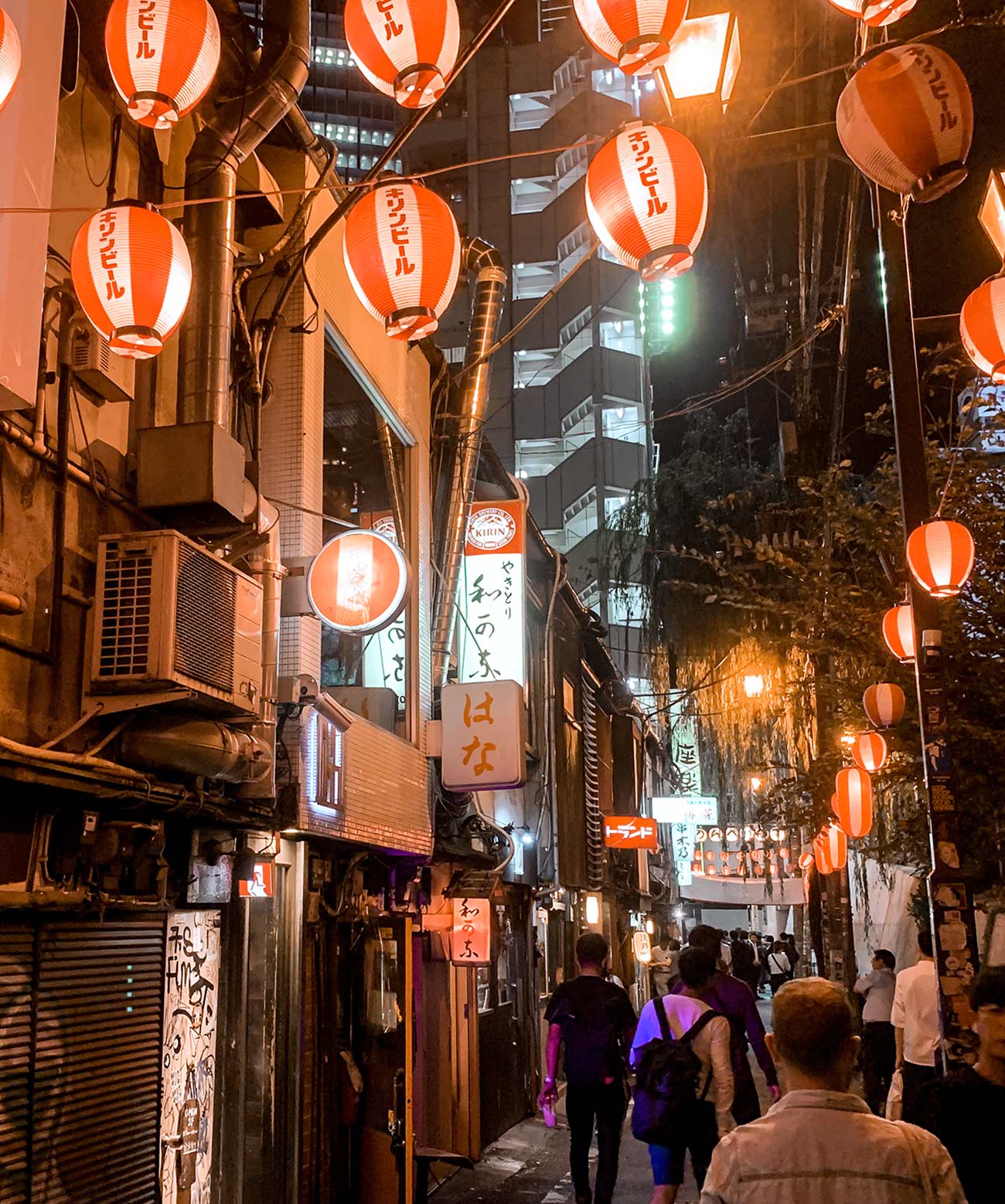
I don’t know if you’re ready for this 5-day Tokyo itinerary. Is it curated and balanced to perfection? Yes. Organized by neighbourhood for maximum efficiency? You betcha. Is it bursting with the best places to eat in Tokyo? Silly question, next.*
But this Tokyo guide is also intense AF. Like, you may perish half-way through. At the very least, you will need to invest in stretchy pants.
But if you’re visiting Tokyo for the first time, it will also ensure that your introduction to Japan’s thriving capital city is a thorough one. Think of it as a handshake on steroids.
From epic sushi feasts to sumo wrestling and robot shows to austere shrines and temples — this guide has it all.
*Duh. Do you even know me?
RELATED READING:
➳ How To Plan For The Most Culturally Authentic Trip To Japan
➳ Essential Tips Every First-Timer Should Know To Plan A Trip To Japan
➳ Where To Eat In Tokyo for 8 Kinds of Foodies
Please note: This page contains affiliate links, meaning I may earn a commission if you make a purchase by clicking a link (at no extra cost to you)
Is 5 days enough for Tokyo?
Honestly? A month wouldn’t even be enough. Once you touch down in Japan’s traditional yet ultramodern capital city, you’ll never want to leave. It was like wandering into an alternate universe where the toilets sing to you and luscious slices of sashimi arrive before you as if on a magic carpet.
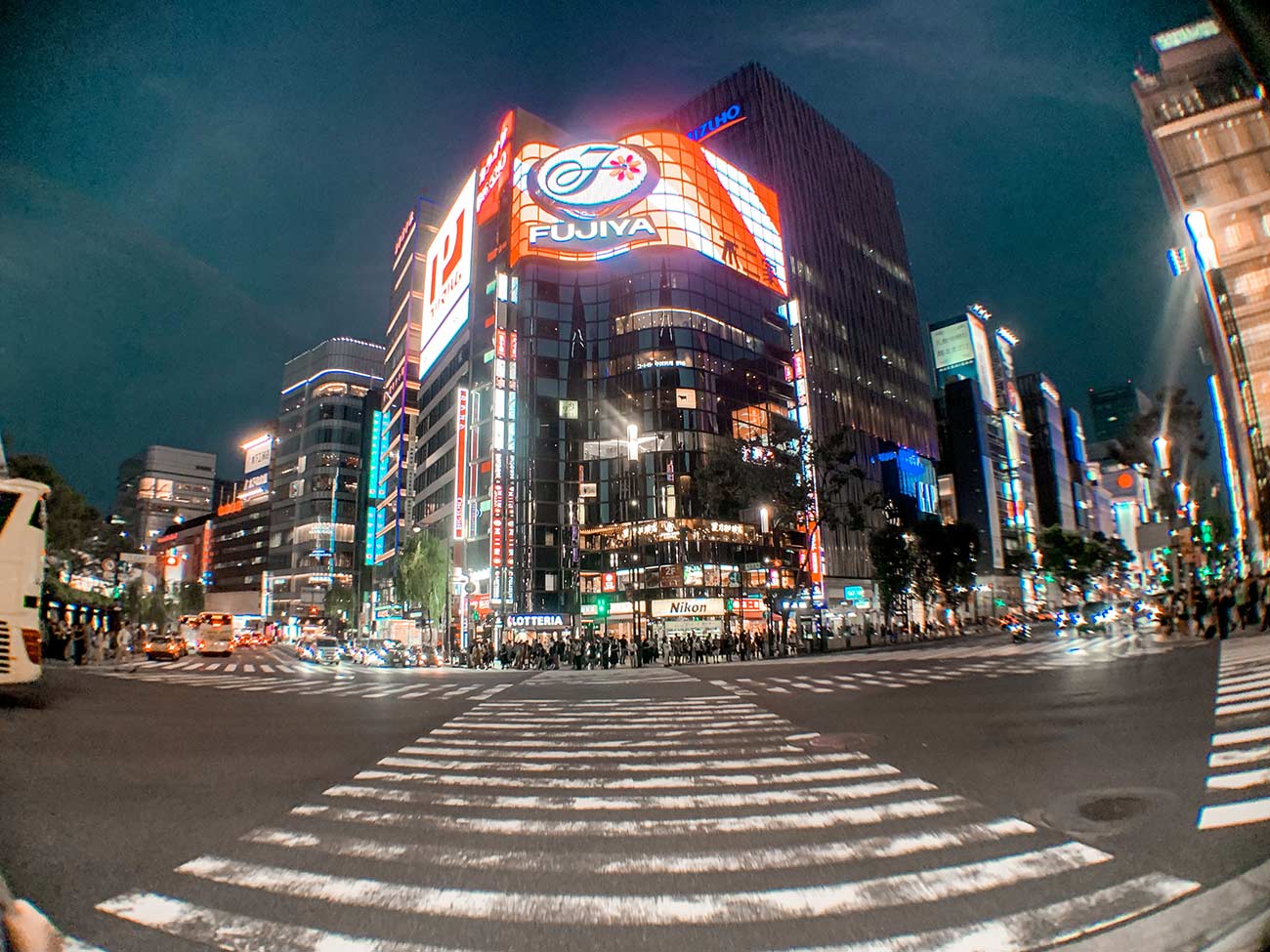
As you’ll soon discover in this Tokyo guide, there are endless sights to see, food to eat, and things to do across the 23 wards and 26 cities, towns and villages that make up this expansive metropolis so 5 days is the bare minimum.
As I flew in/out of Tokyo, I sandwiched my Japan trip with Tokyo — 2 days at the beginning and 3 days at the end.
What Should I Pack For Tokyo?
-
-
-
To Stay Connected: For two or more people or devices, renting a pocket wi-fi for Japan will save your life! Access to the internet is invaluable when it comes to navigating Tokyo, from finding hidden restaurants to using Google Maps or NaviTime to plot your route around the city. If you’re travelling alone, a prepaid 4G SIM card is also a convenient and cost-effective option for data.
-
-
-
-
-
To Get Around: Before you leave for your trip, buy a pre-paid Suica card online and pick it up upon arrival at the airport. You’ll need it immediately if you’re using local transit to commute from the airport into the city. Note: Most trains stop running at midnight and cabs are expensive so aim to be at a station for 11:30pm.
-
-
-
-
-
To Travel Outside of Tokyo: If you’re planning on travelling to other cities across Japan, purchasing a JR Pass is crucial. The Japan Rail Pass is cost-effective means of unlimited long distance travel for 7, 14, or 21 days, valid for all JR trains. You can even use it to travel locally to save your Suica card balance. Note: Visitors must buy a pass outside of Japan (it’ll 10 – 20% cheaper) and it must be activated it once you arrive in the country.
- Cash is King: As advanced as Japan is as a whole, it’s also very traditional with an abundance of tiny, family-owned establishments where dollar bills (yen bills?) do the talking. Have no fear though, most accommodations and higher-end restaurants accept card unless stated otherwise.
-
-
-
-
-
Other Essential Items: A portable battery charger for when your tech needs a power boost; a travel raincoat to stay dry during sudden showers; a collapsible tote bag to carry souvenirs you pick up along the way; a universal travel adapter to get plugged in; antibacterial hand wipes to stay germ-free; a collapsible water bottle because you gotta stay hydrated.
-
-
There’s no such thing as being over-prepared, especially if it’s your first time travelling to Japan. For more essential tips to help you plan for your trip to Tokyo, check out this post.
Which Tokyo airport should I fly into?
-
-
- Haneda Airport (HND) – Wondering which Tokyo airport is closer to the city? Haneda Airport’s proximity to the city means that you can simply hop aboard a local train (using a Suica pass) for a short commute (30 minutes to Shibuya). If you’re arriving to Tokyo in off hours or prefer a seamless trip in, consider opting for a private transfer to-and-from Haneda.
- Narita Airport (NRT) – As Narita Airport is a much larger hub for international flights, this might be the cheaper option so you might experience a transfer that is a bit more difficult and time-consuming. If you have a JR Pass, you can ride into the city for free on the swift and reliable Narita Express. Otherwise the Tokyo Keisei Skyliner is a high-speed train that will get you downtown in 40 minutes.
-
Where to Stay In Tokyo
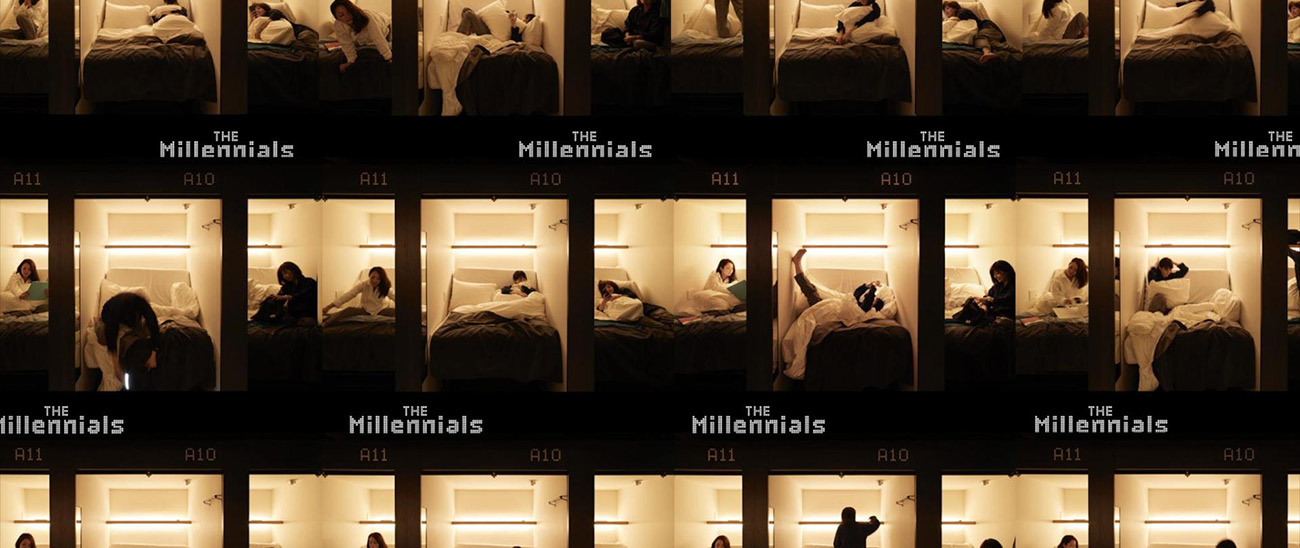
(Photo via The Millennials Shibuya)
The Millennials Shibuya (from $85) – If you’re searching for where to stay in Tokyo on a budget, this sleek, modern capsule hotel will make the perfect home base for your 5-day Tokyo itinerary! A short walk from the infamous Scramble Crossing, they offer free breakfast, wifi, and cozy, private units in mixed or single gender dorms.
BnA Studio Akihabara (from $105) – Every room in this quirky art hotel in Tokyo’s Electric Town was curated and designed by an artist. The result is an ecclectic collection of rooms that range from industrial to kitschy to traditional in decor.
Park Hyatt Tokyo (from $376) – Live your “Lost in Translation” fantasy with a lavish stay at this luxurious Shinjuku hotel that boasts 360-degree views of Tokyo and an epic afternoon tea service.
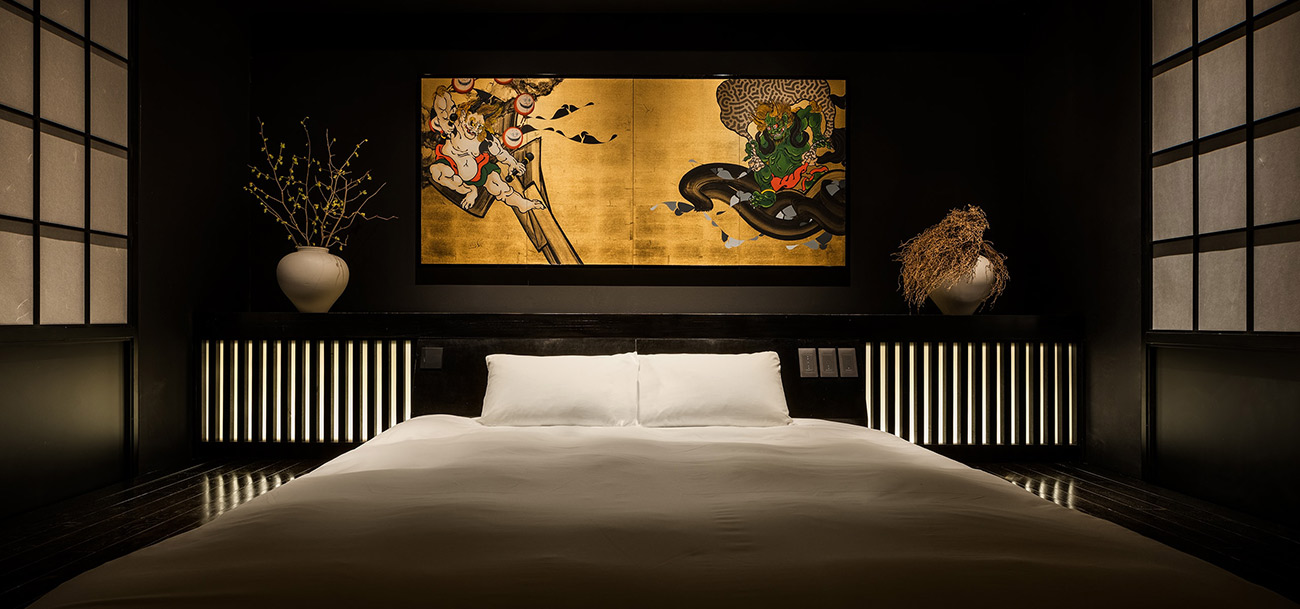
Hailer room by 81 Bastards artist collective (Photo via BnA Studio Akhibara)
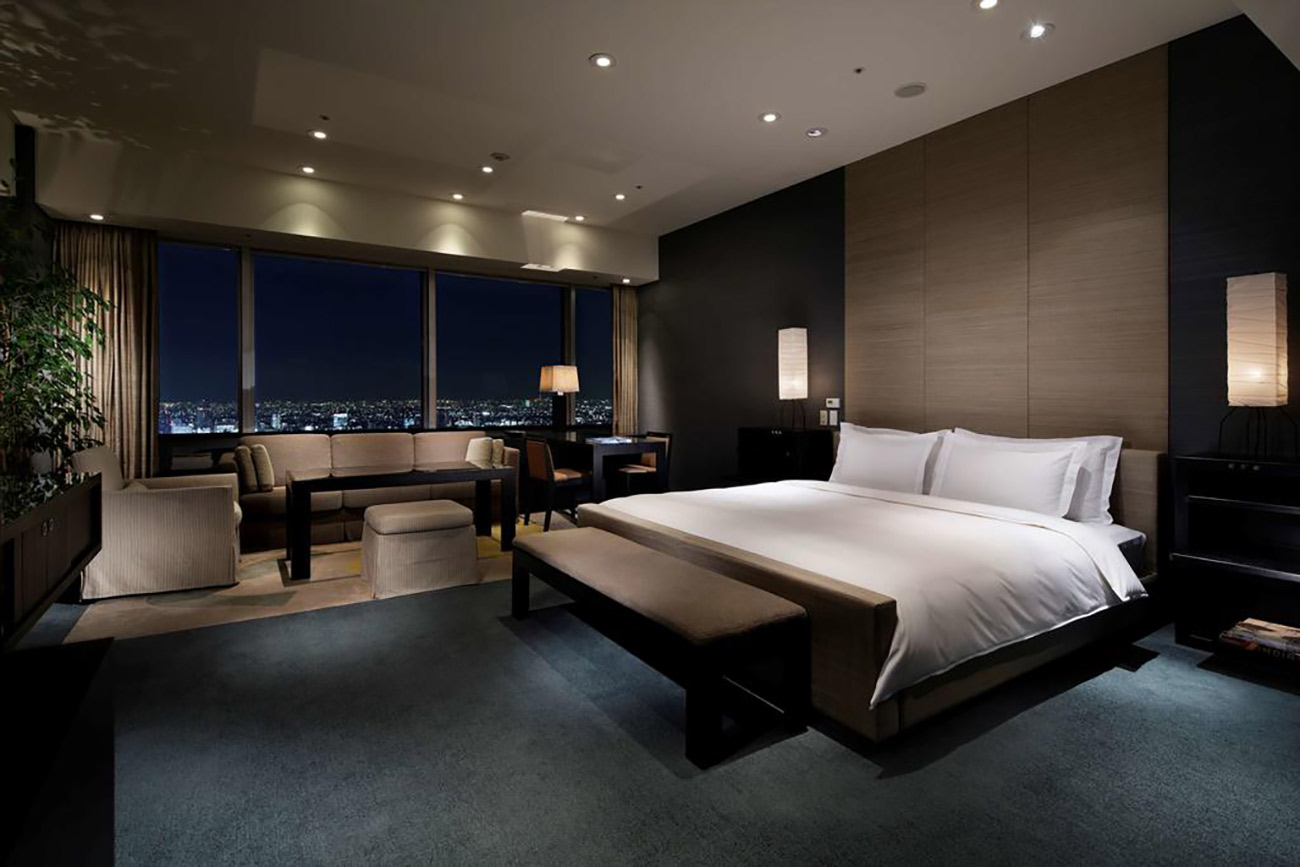
Park Hyatt Tokyo (Photo via Booking.com)
The goal of this 5-day Tokyo itinerary was not to dictate a militant schedule for you to follow to the letter. It was to provide options; to arm you with possibilities — places to visit around Tokyo, things to do in each district and what and where to eat— so you can let your mood and personal tastes lead you.
Let’s get crackin’!
5-Day Tokyo Itinerary
If you want to jump ahead to certain things to do or neighbourhoods in Tokyo, use these quick links:
Day 1: Tsukiji Fish Market, teamLab Exhibit, Omakase, Ginza Cocktails
Day 2: Daikanyama, Shibuya, Souvenir Shopping, Nonbei Yokocho
Day 3: Ghibli Museum, Harajuku, Robot Show, Shinjuku
Day 4: Sumo Wrestling, Asakusa, Akihabara, Kaiseki Dinner
Day 5: Totoro Cream Puffs, Mario Go-Karting, Roppongi
Day 1
Tsukiji Fish Market
Capitalize on your jet lag and kick your 5-day Tokyo itinerary off by witnessing the infamous pre-sunrise tuna auction at the Toyoso Market 🐟 Follow the early morning spectacle up with some of the most luscious sashimi of your life at Sushi Daiwa…because who doesn’t crave raw fish for breakfast 🍣
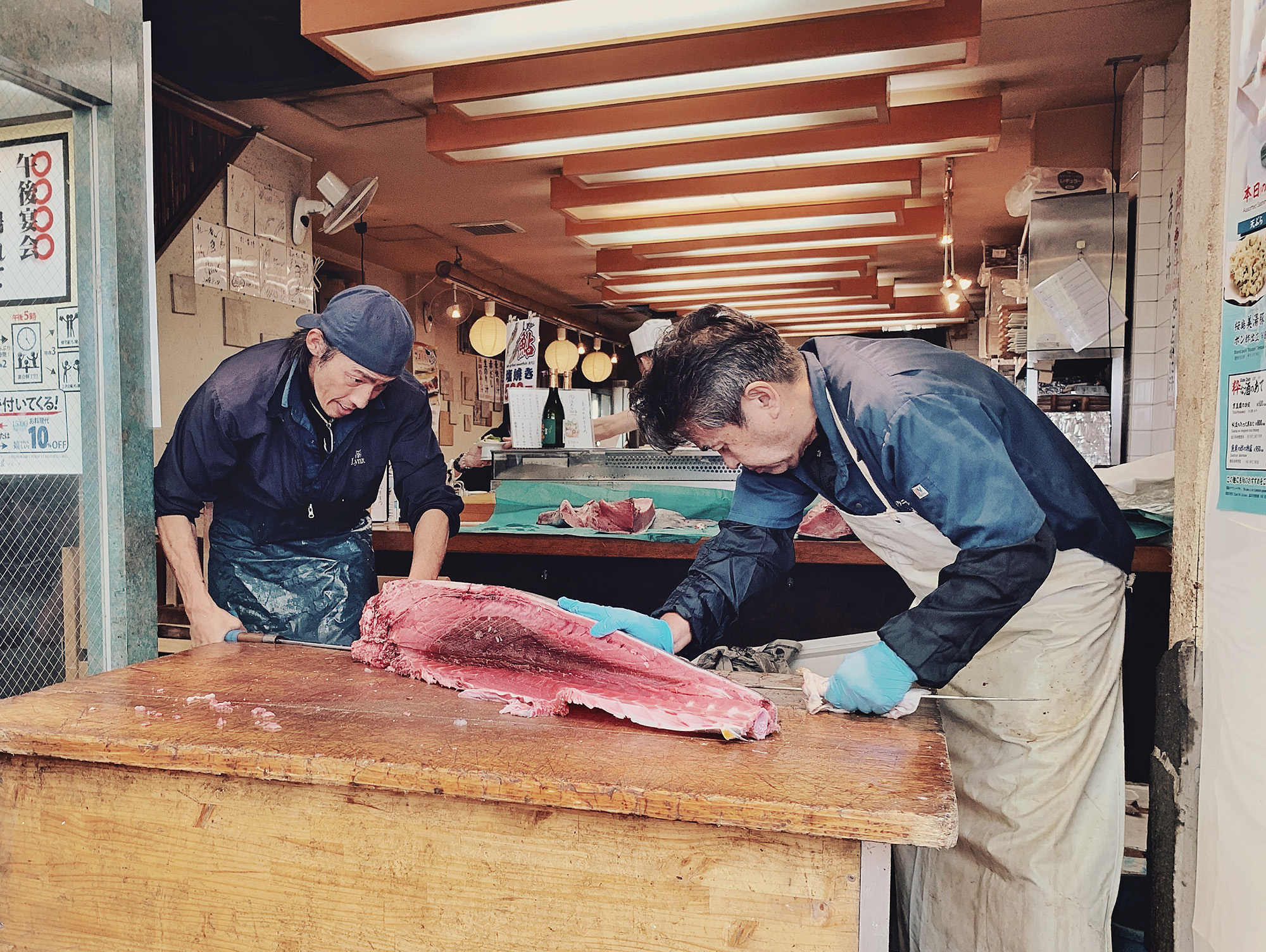
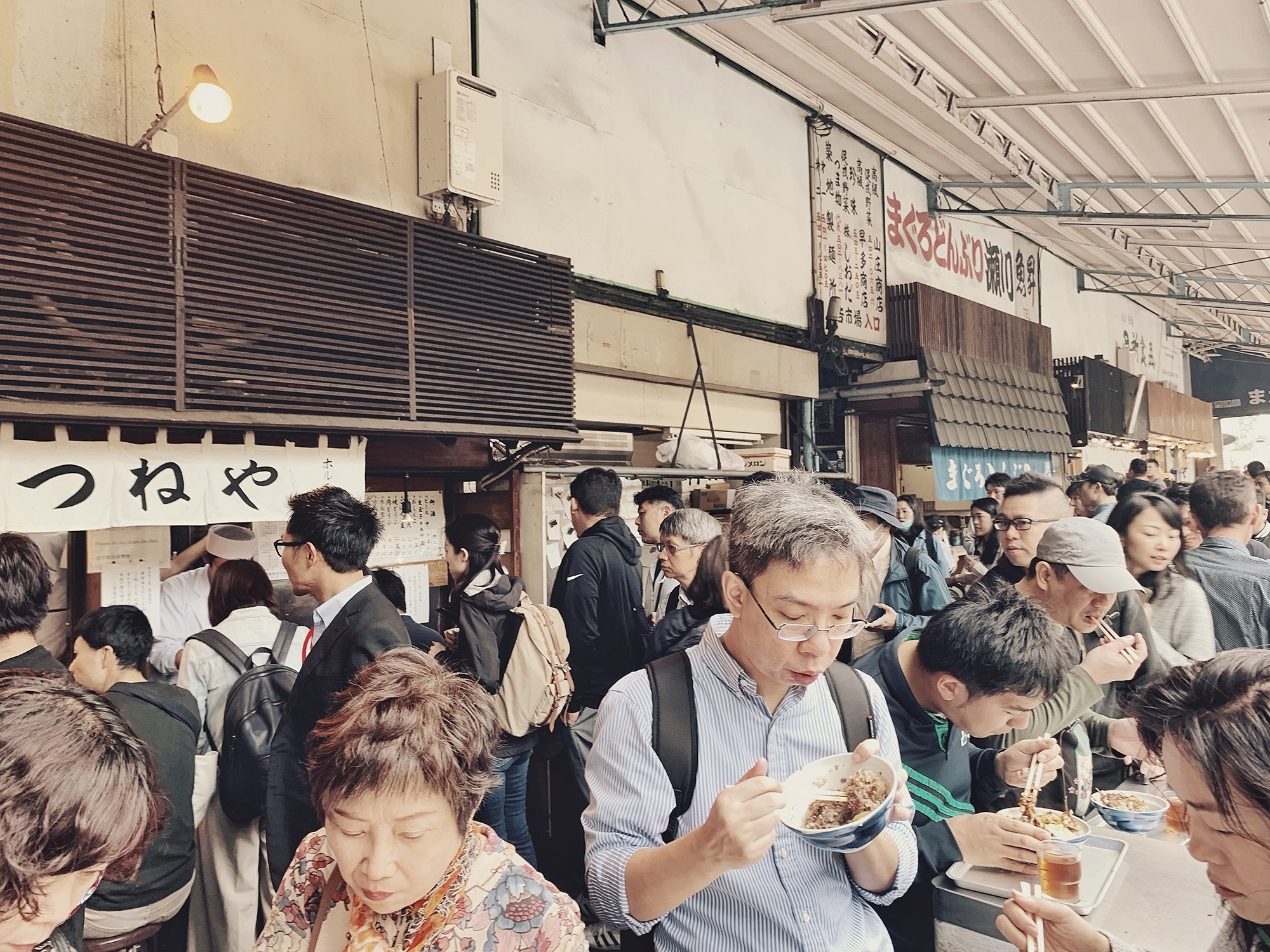

Shells filled with bits of differents kinds of seafood *drool*
Continue you culinary tour a mere 2km away and eat your way through the Tsukiji Outer Market (a must-visit in Tokyo!) from as early as 6am.
Comprised of over 300 stalls and restaurants, meander along narrow alleyways rickety wooden shacks. Take your time browsing all of the gustatory delights, from fresh AF slices to fatty tuna to steaming bowls of ramen to charcoal uni buns.
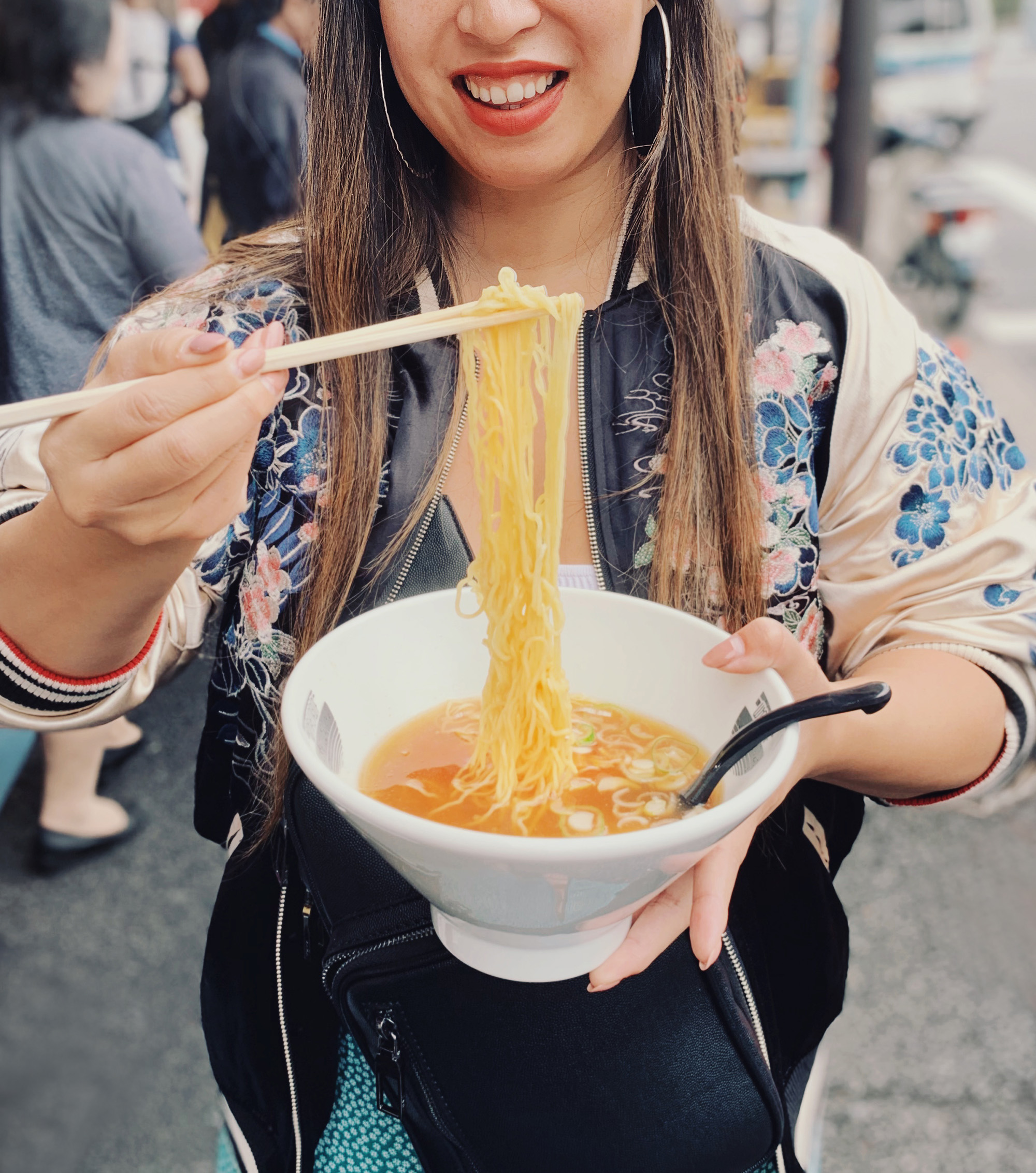
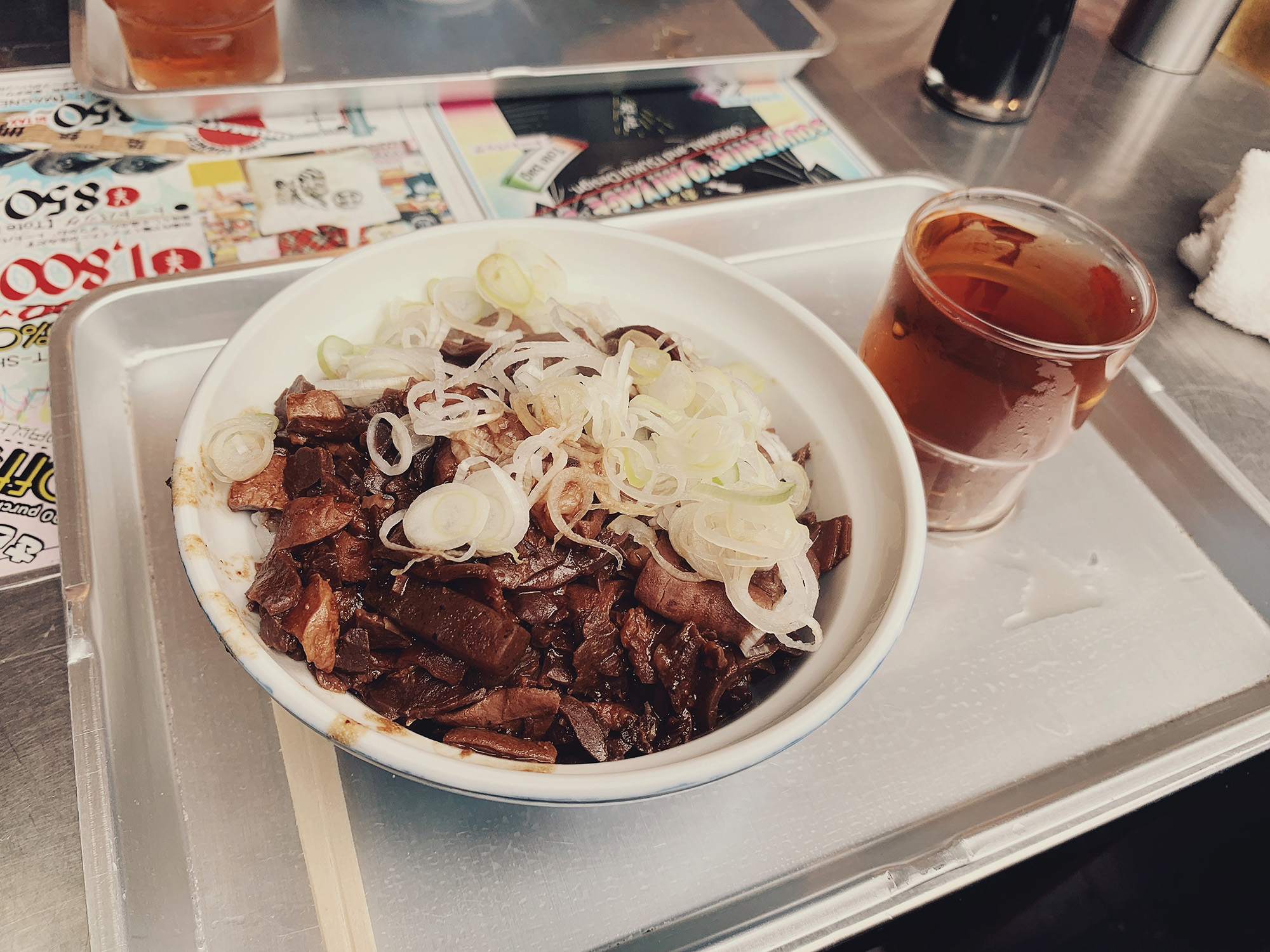
Organ stew from Kitsuneya in Tsukiji Market
where TO EAT AT THE TSUKIJI OUTER MARKET:
-
-
-
Kitsuneya – A heaping bowl of organ stew may not sound appetizing but it’s legendary — stewed in miso till they are melt-in-your mouth delicious, served over rice and topped with shredded leeks.
-
-
-
-
-
Wakaba – It’s mesmerizing to watch the chef meticulously craft bowl after bowl of ramen with a simple yet flavourful shoyu broth topped with fatty slices of chasu pork, green onion and bamboo.
-
-
-
-
-
Onigiriya Marutoyo – Swing by this shop early to snag comforting onigiri rice balls stuffed with various fillings like a jammy soft-boiled egg (bakudan) or ikura (marinated cod roe, my fav).
-
-
-
-
-
Nisshin Tasuke – Get decadent grilled eel as a skewer or served over rice.
-
-
-
-
-
Maguroya Kurogin – Grab a seat at this spot for some indulgent fatty tuna rolls that will melt in your mouth like butter.
-
-
-
-
-
Matcha Stand Maruni – Visit this shop for an iced matcha latte made with the highest quality matcha you’ll ever taste.
-
-
For everything you need to know about where and what to eat in the Tsukiji Outer Market, check out this full guide.
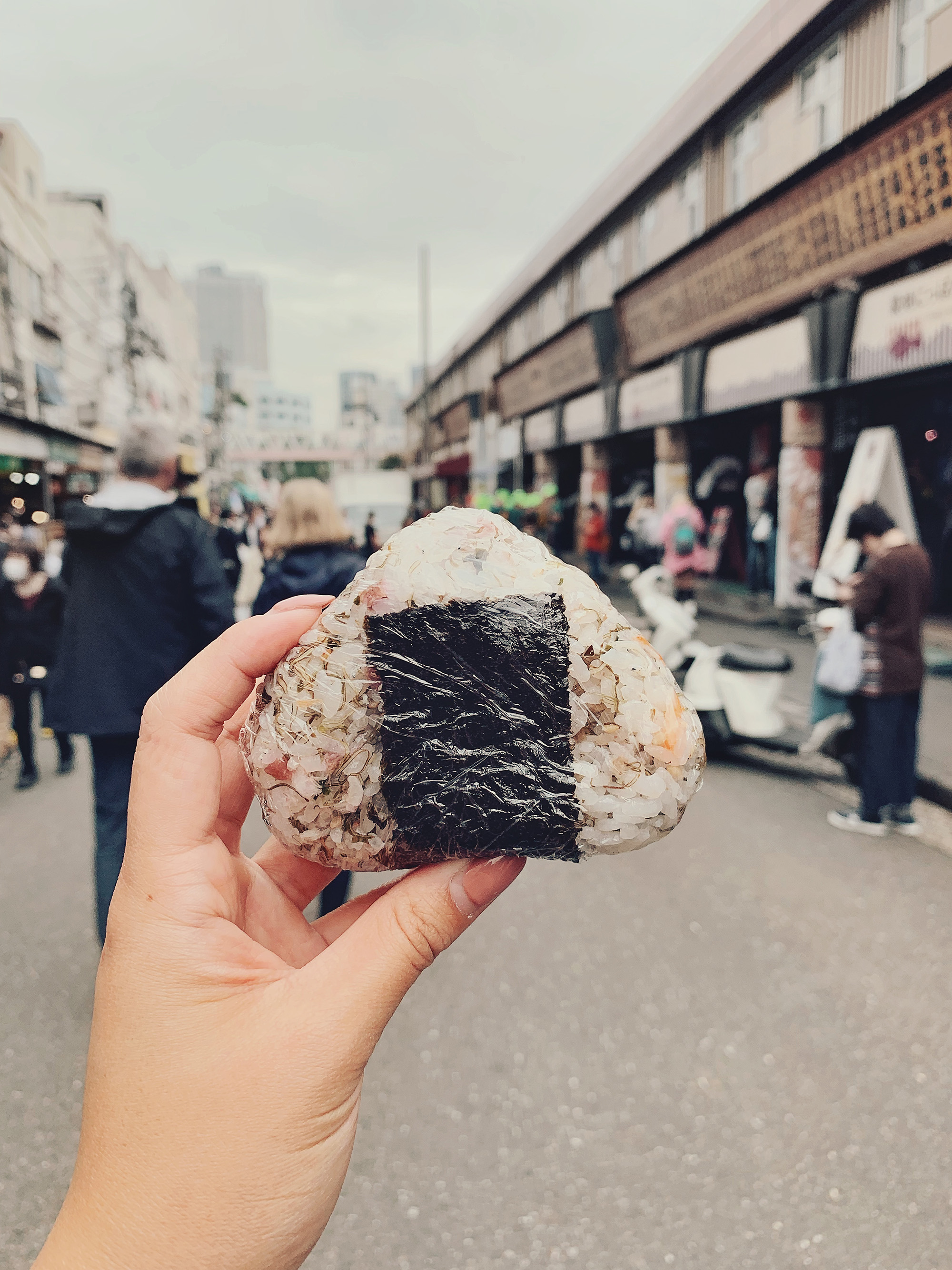
Top-rated Tsukiji Market Tours:
-
-
- Classic Tsukiji Food Tour (from $175)
- 3-Hour Food & Drink Walking Tour (from $87)
- Tsukiji and Toyosu Fish Market and Tuna Auction Tour (from $84)
- Tsukiji Market Walking Tour & Rolled Sushi Class (from $95)
-
teamLab Borderless or teamLab Planets
Lose yourself at teamLab Borderless or teamLab Planets, fantastical immersive exhibitions and futuristic art installations that will challenge the boundaries of your imagination.
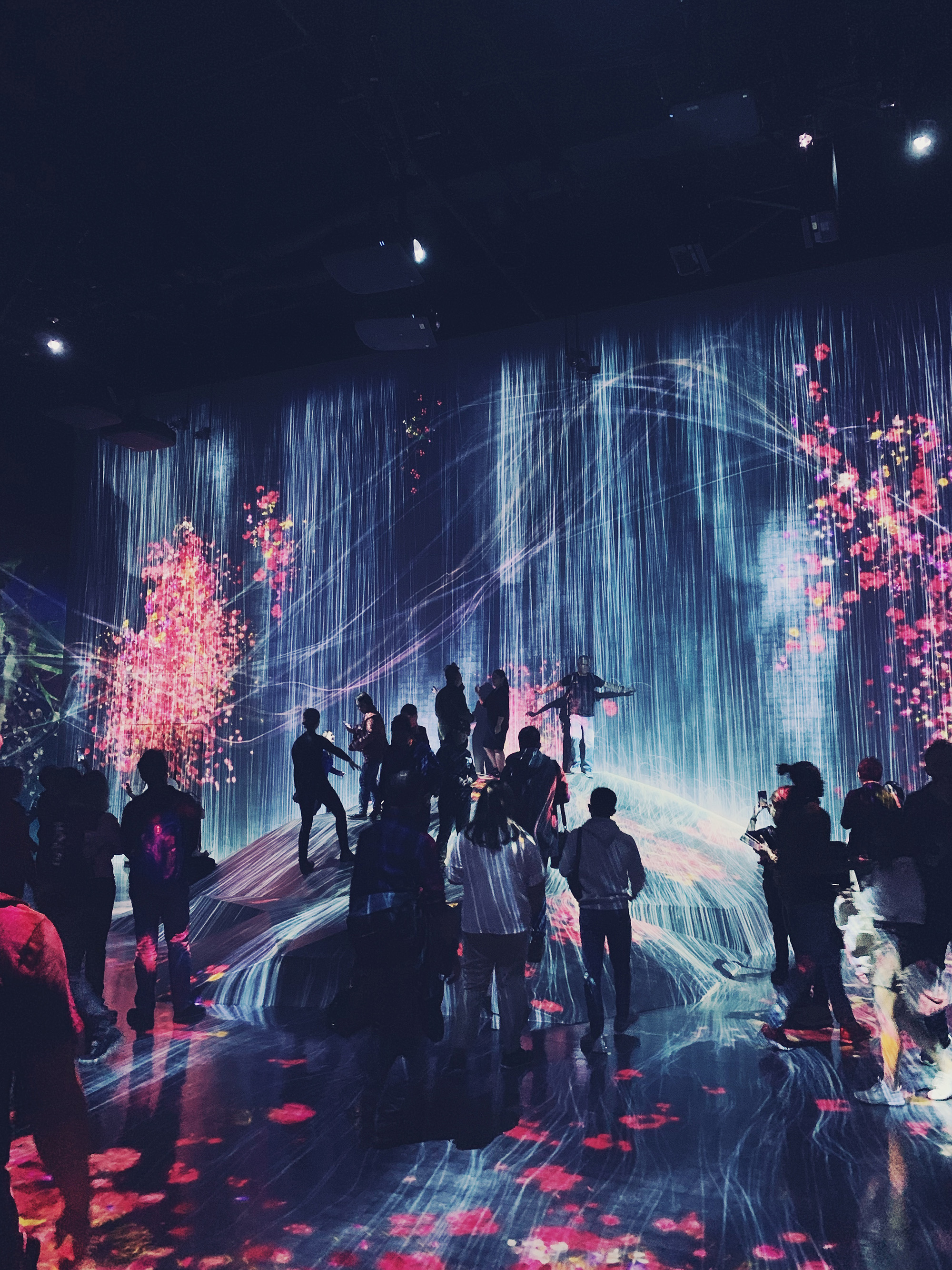
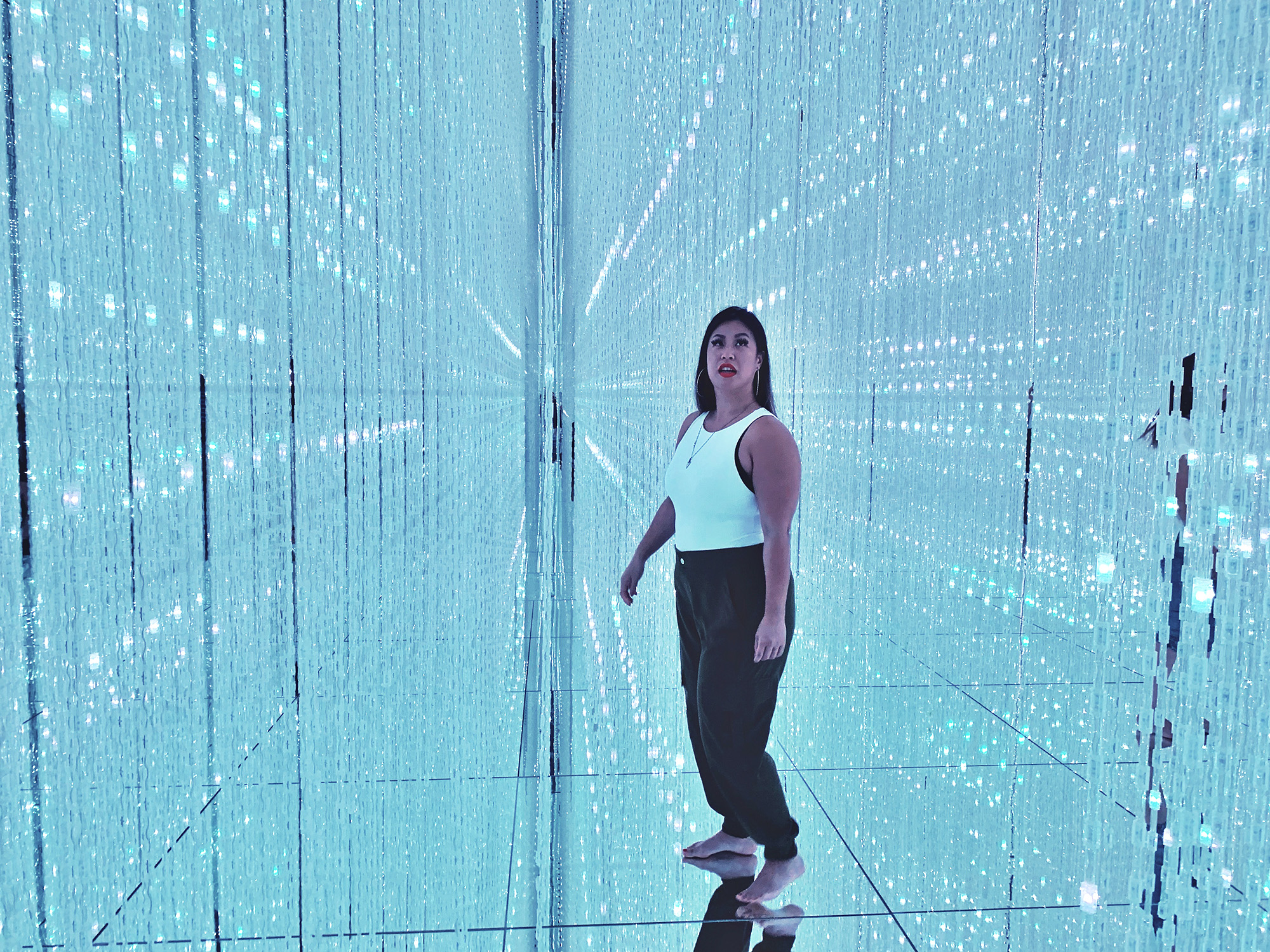
Every sense you possess will be stimulated. You’ll come across interactive projections of waterfalls and rooms streaming with strings of LED lights. Watch in wonder as koi fish swimming around your legs and flowers bloom within cups tea. Enter rooms of wall-to-wall mirrors or brimming with giant, plush, bouncy balls…
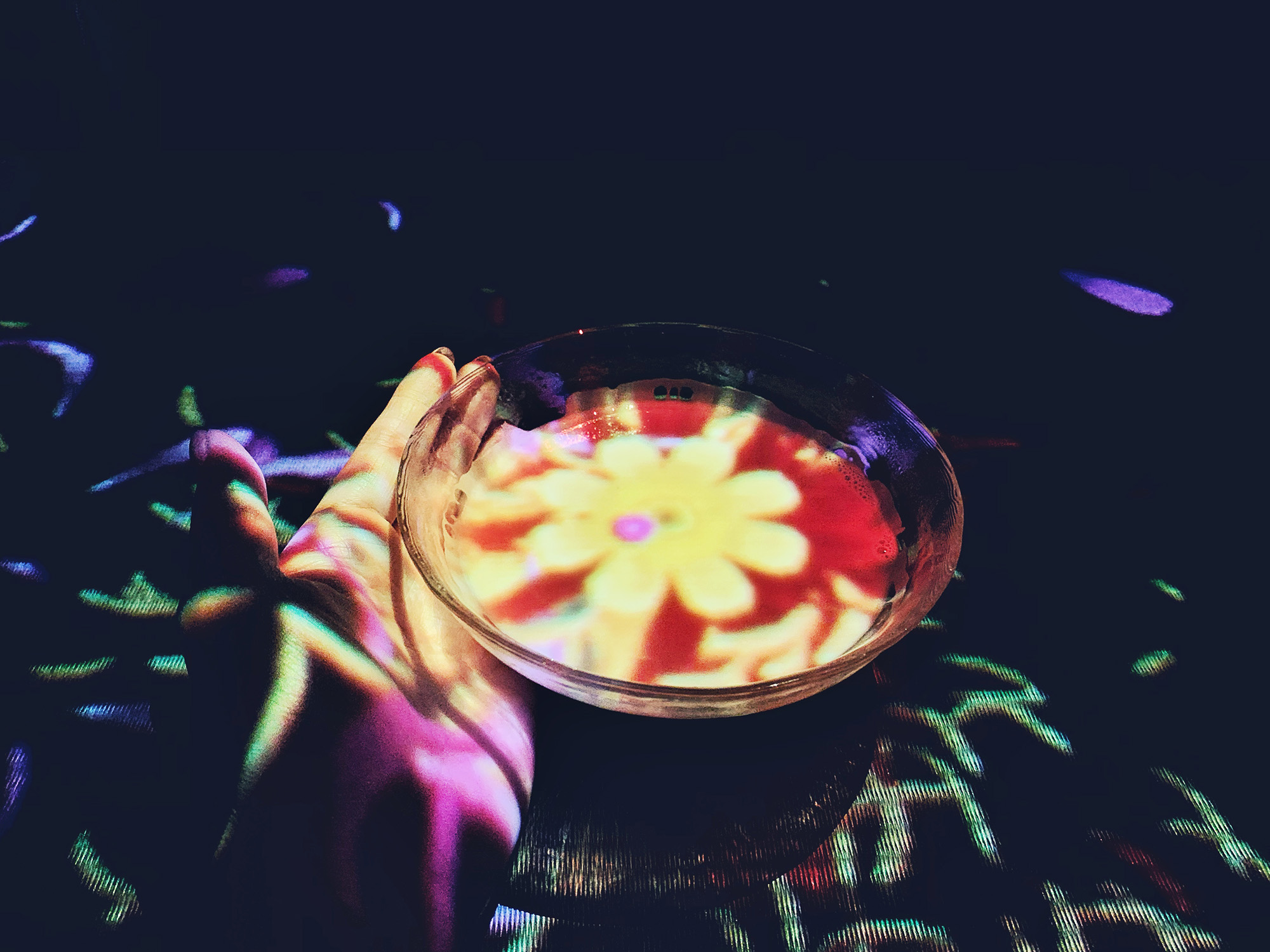
Keep some change in your pocket for a drink at the En Tea House and watch a flower bloom right in your cup!

Now for the questions that’s on everyone’s mind: What’s the difference between teamLab Planets and Borderless? Which is better?
Well, it depends on your personal preferences and what you want the pace of your 5-day Tokyo Itinerary to be.
teamLab Borderless vs. teamLab Planets:
-
-
- teamLab Borderless – Made up of fifty installations divided into five sections, this permanent exhibit revolves around discovering and will take at least 2-3 hours to explore. It’s very busy so it’s best to arrive just as it opens or outside of peak times. Check out this blog post everything you need to know about teamLab Borderless. You can book your tickets up to two months in advance.
- teamLab Planets – This temporary exhibit focuses on feeling. It’s perfect if you’re short on time as it can be explored in about an hour at a leisurely pace. When you book your ticket, you can pick a time slot, which means it’ll be less crowded. Ideal for photo ops! Check out this blog post everything you need to know about teamLab Planets.
-
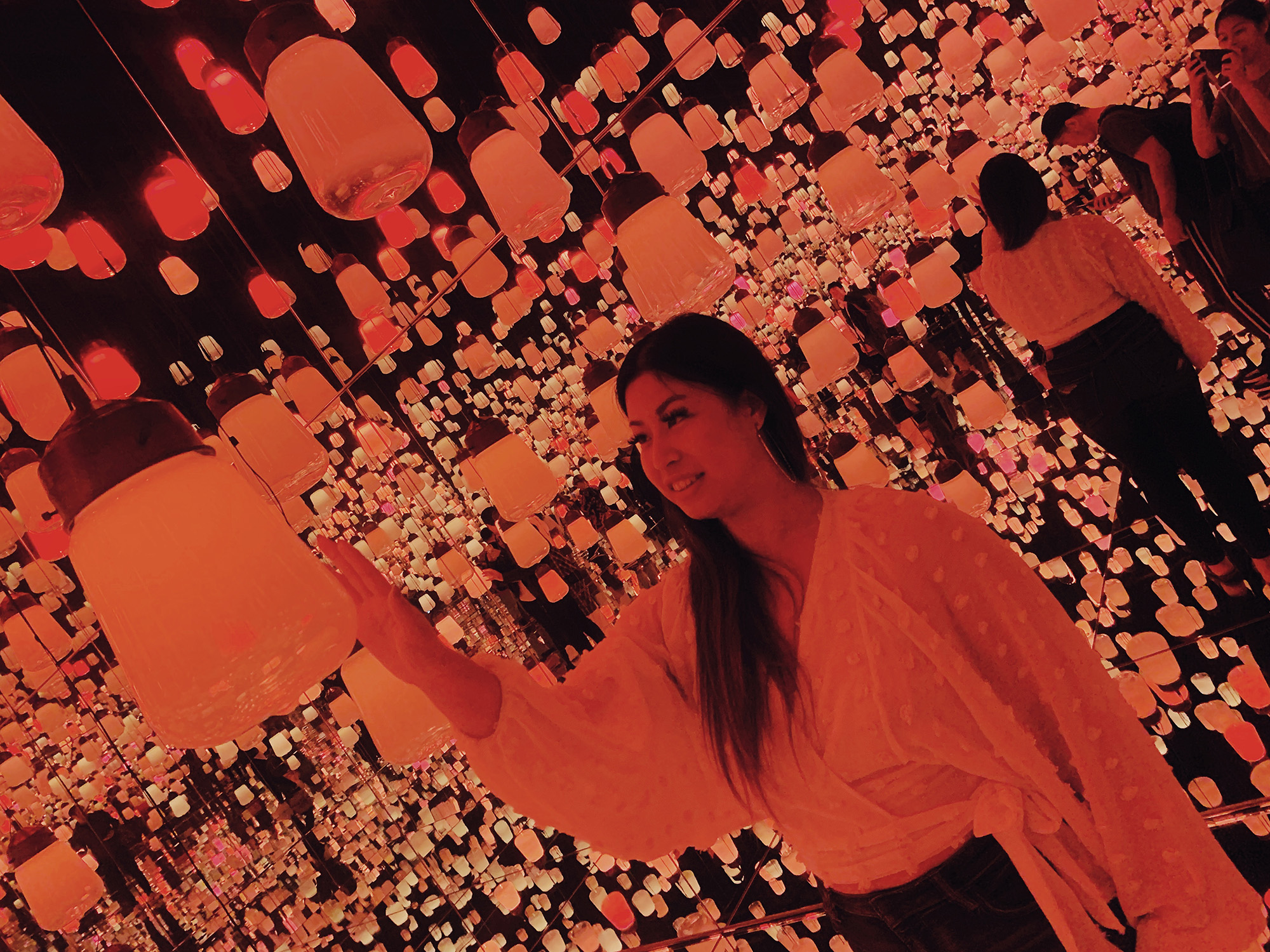
The Forest of Lamps at teamLab Borderless
What did I do? Indecisive creature that I am, I went to both!
Mitsukoshi Ginza
If you’re feeling peckish, pick up a snack at the depachika (food hall) located in the Mitsukoshi depato (department store) in Ginza, the shopping district of Tokyo.
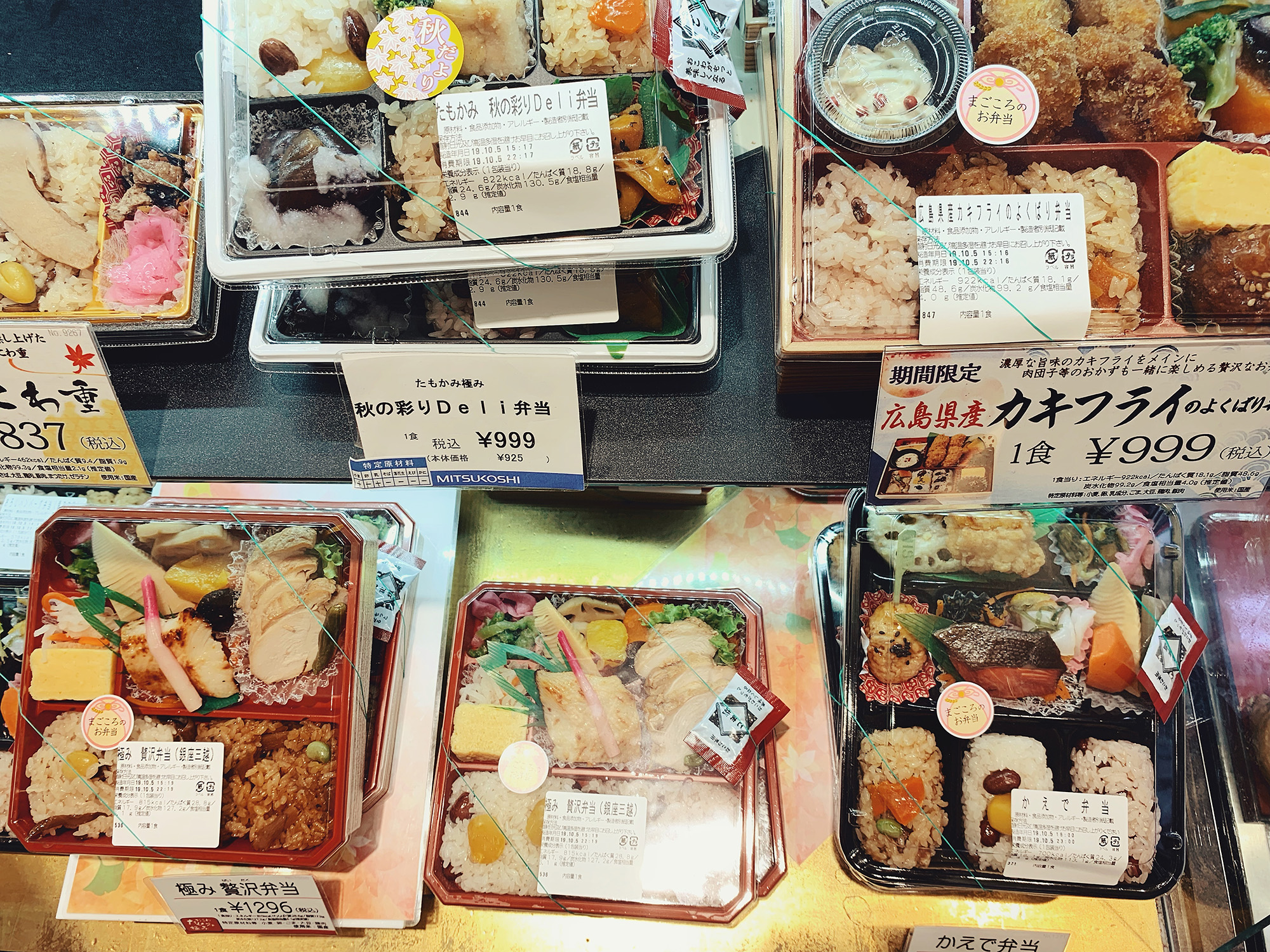
The food halls in Japan are nothing like the dingy mall food courts you’d find at home. It’s a high-end food-browsing experience with every kind of delicacy imaginable — sweets, pastries, fermented vegetables, onigiri, fresh sushi, designer fruit, etc…— on display, immaculately packaged and ready to be consumed.
Note: In Japan, it’s considered a faux pas to eat on-the-go. Instead, head skyward to dine in the rooftop garden.
Omakase Dinner at Kyubey
No 5-day Tokyo itinerary is complete without indulging in an omakase feast, and Kyubey in Ginza is one of the best and most renown sushi restaurants in Japan.
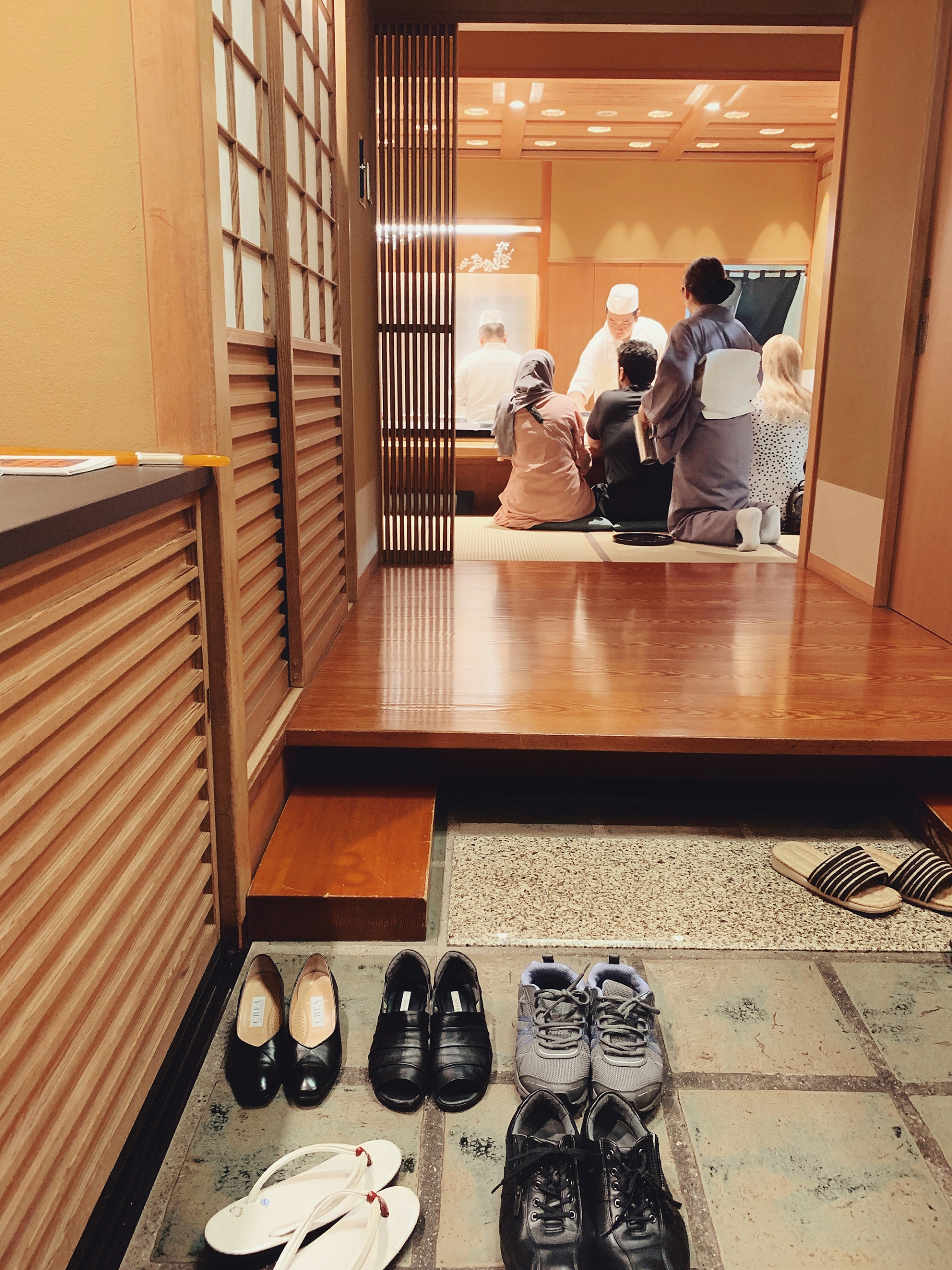
Omakase translates to “respectfully leaving another to decide what is best,” meaning the chef will curate your meal for you.
Park bar-side and watch in wonder as the master meticulously crafts each piece of sushi with premium seafood, from fatty tuna belly to sweet scallops from Hokkaido.
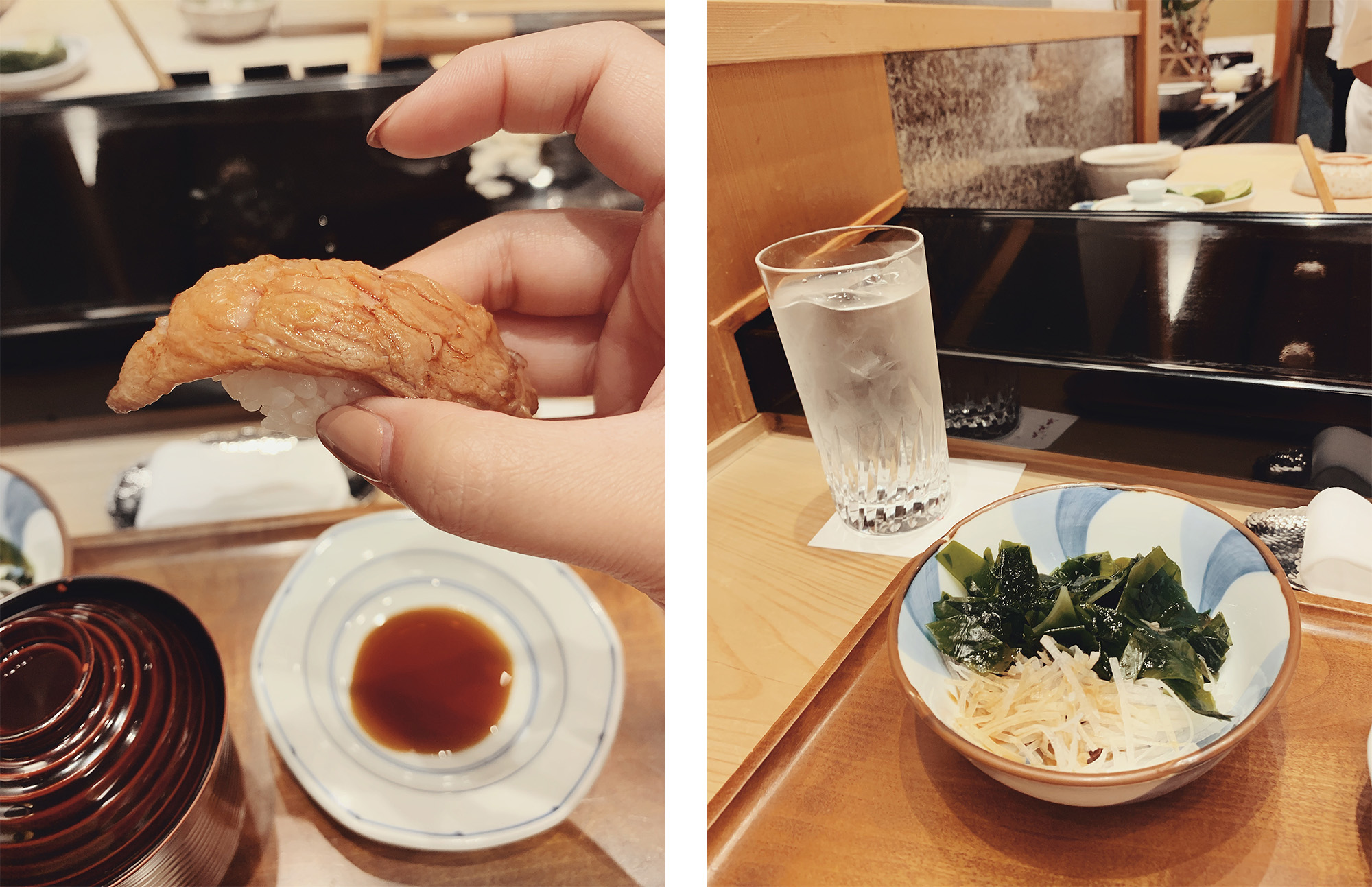
I highly recommend requesting an additional order of the wagyu beef sushi for melt-in-your-mouth goodness!
Cocktail Bar Crawl
Every night of your 5-day Tokyo itinerary, your mission should be to explore the city’s cocktail bars. Mixologists in Japan treat drink preparation with the same reverence and pain-staking care you’d witness at a sacred temple.
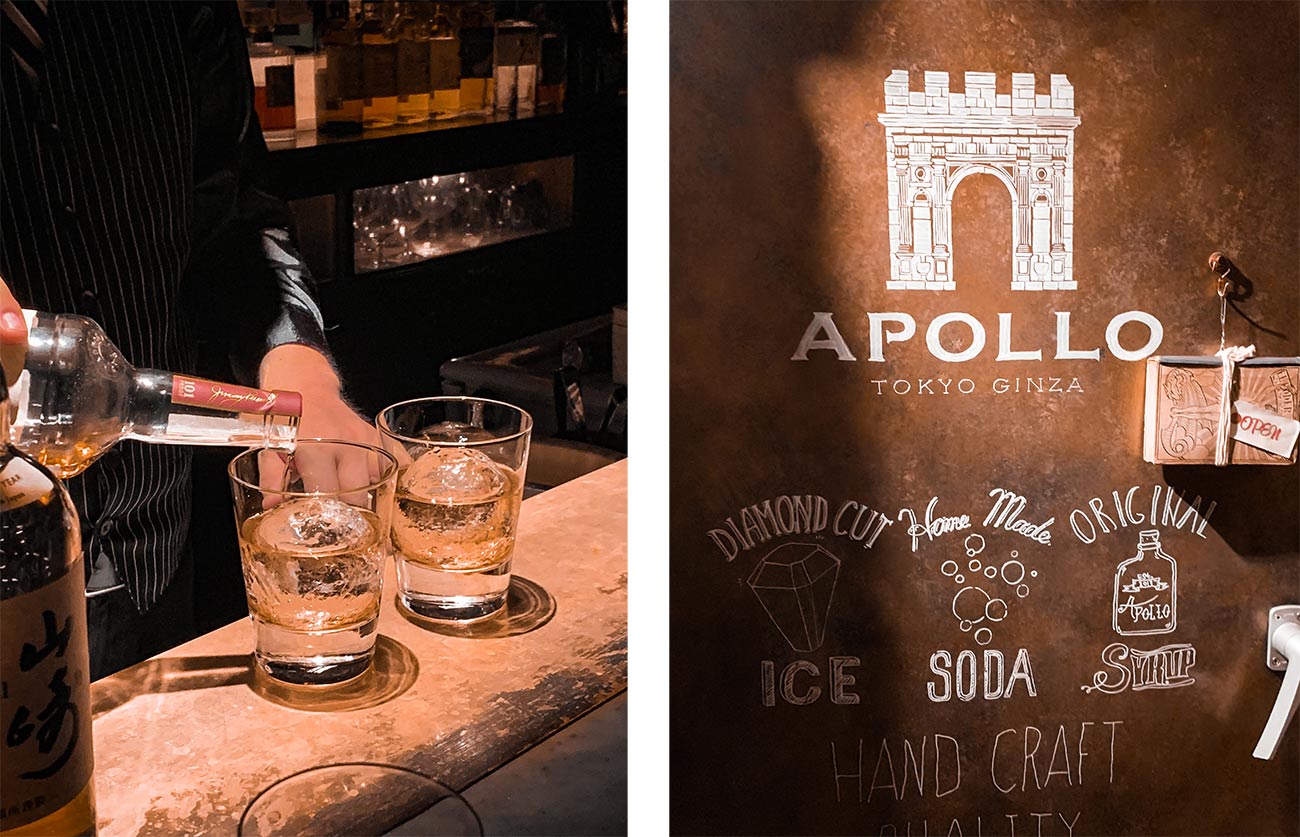
WHERE TO DRINK IN GINZA:
-
-
- Apollo Bar ($$) – Take a short stroll from Kyubey and walk down the stairs of an unassuming building. Grab a seat in the tiny, smoky room and watch the bartender compose a whisky highball under a single, bright spotlight, a stark contrast in the dark space.
- Bar Orchard ($$$) – A hidden gem tucked away on the seventh floor of a building a mere 4-minute walk away. Pick your fruit of choice from the bowl perched on the bar counter and soon you’ll be sipping a refreshing, seasonal concoction.
- Bar High Five ($$$$) – Saving the best (and the priciest) for last, your final stop of the evening will be Bar High Five. You won’t find a menu in this hushed venue. Instead, the mixology master will ask your preferences — Sweet or sour? Vodka or whisky? Fruity or herbal? The resulting concoction will be exactly to your tastes.
-
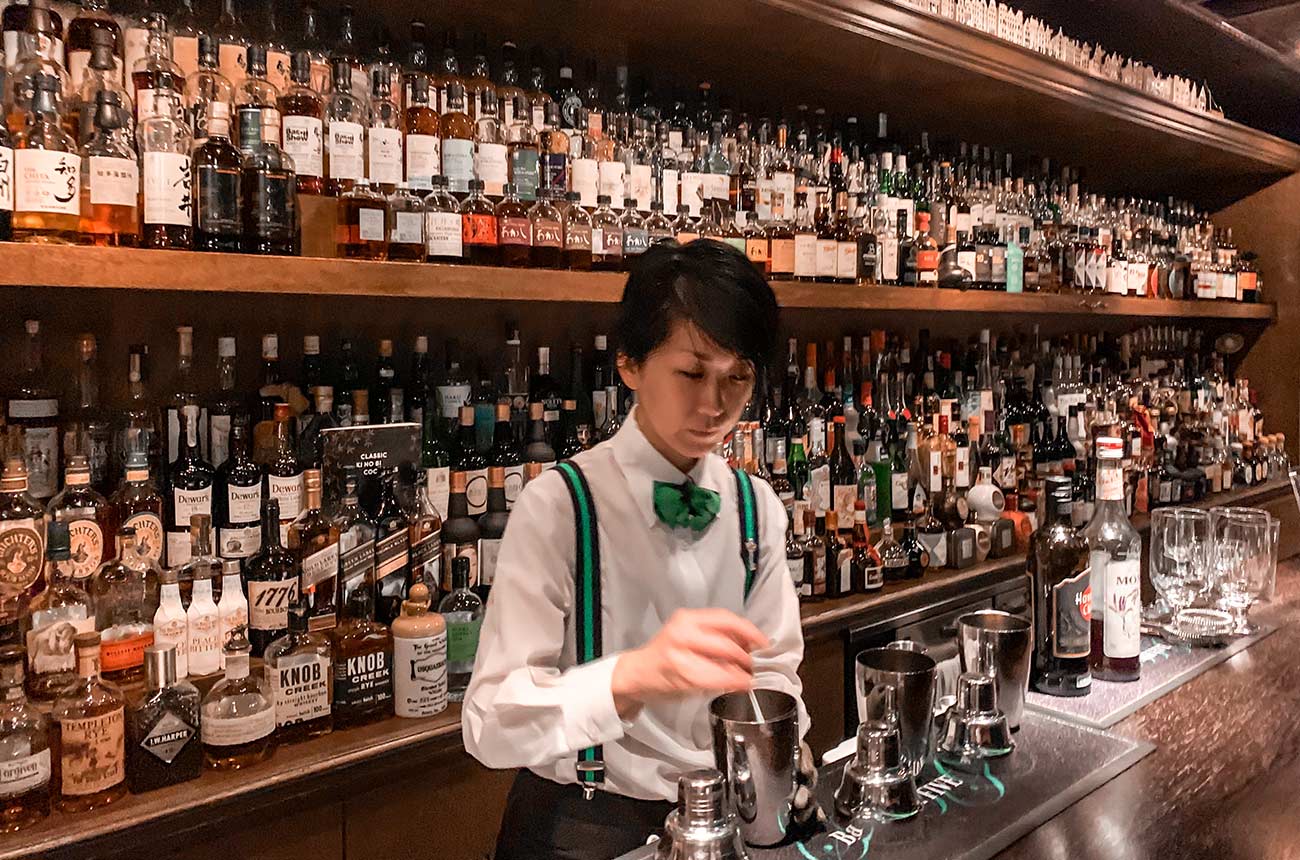
Bar High Five
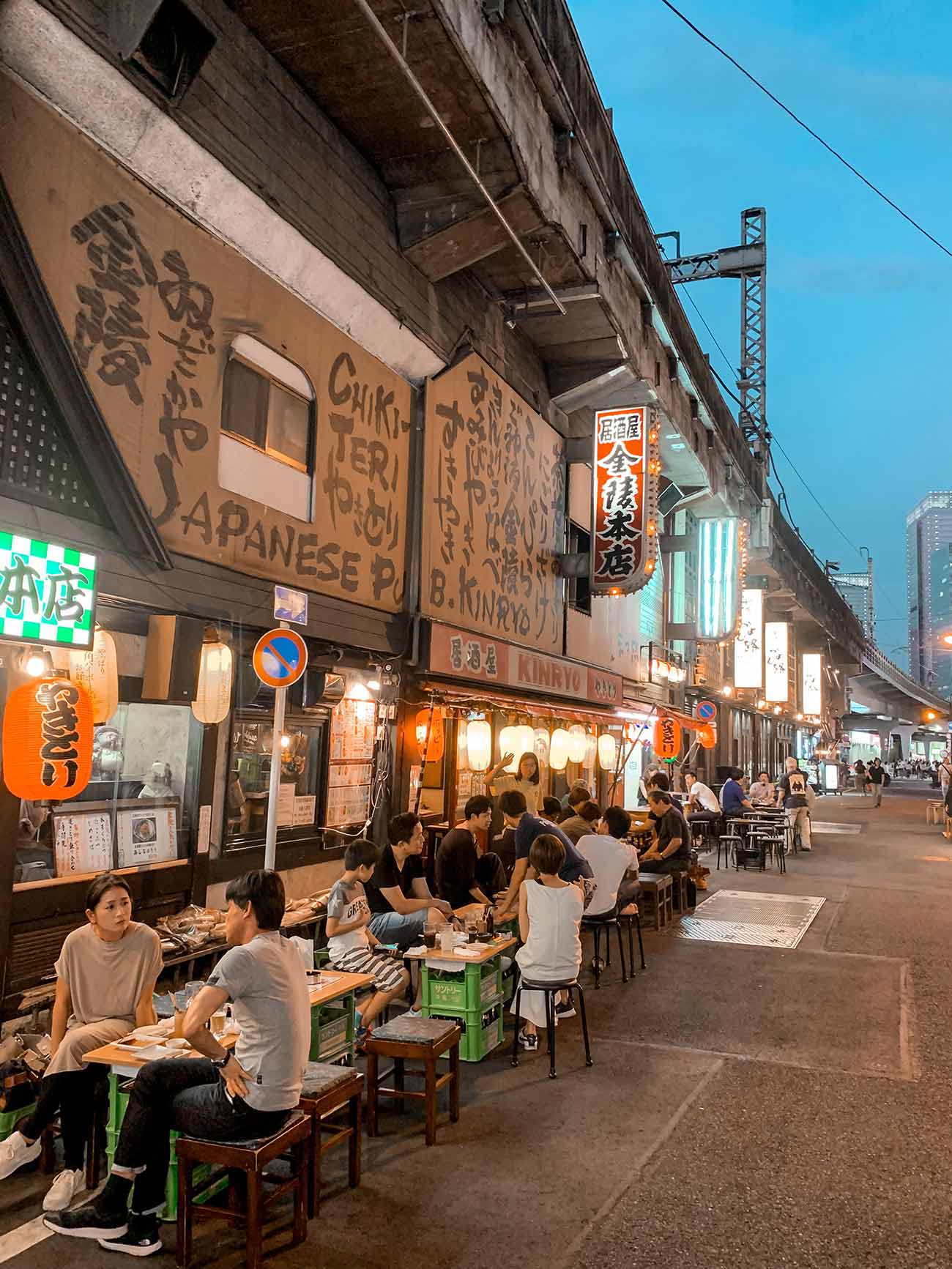
Looking for a late night snack? Try Gado-shita in the Yurakocho district (adjacent to Ginza). Izakayas and yakitori restaurants are built under the brick arches beneath the elevated train tracks of the JR Yamanote Line.
Day 2
Daikanyama
This quaint suburb just outside of Shibuya is perfect if you’re looking to inject some relaxed weekend vibes into your hectic 5-day Tokyo itinerary.
Often called “the Brooklyn of Japan,” Daikanyama is a hidden gem of a neighbourhood with tree-lined pedestrian-only streets, open-air cafés and charming little shops to browse.
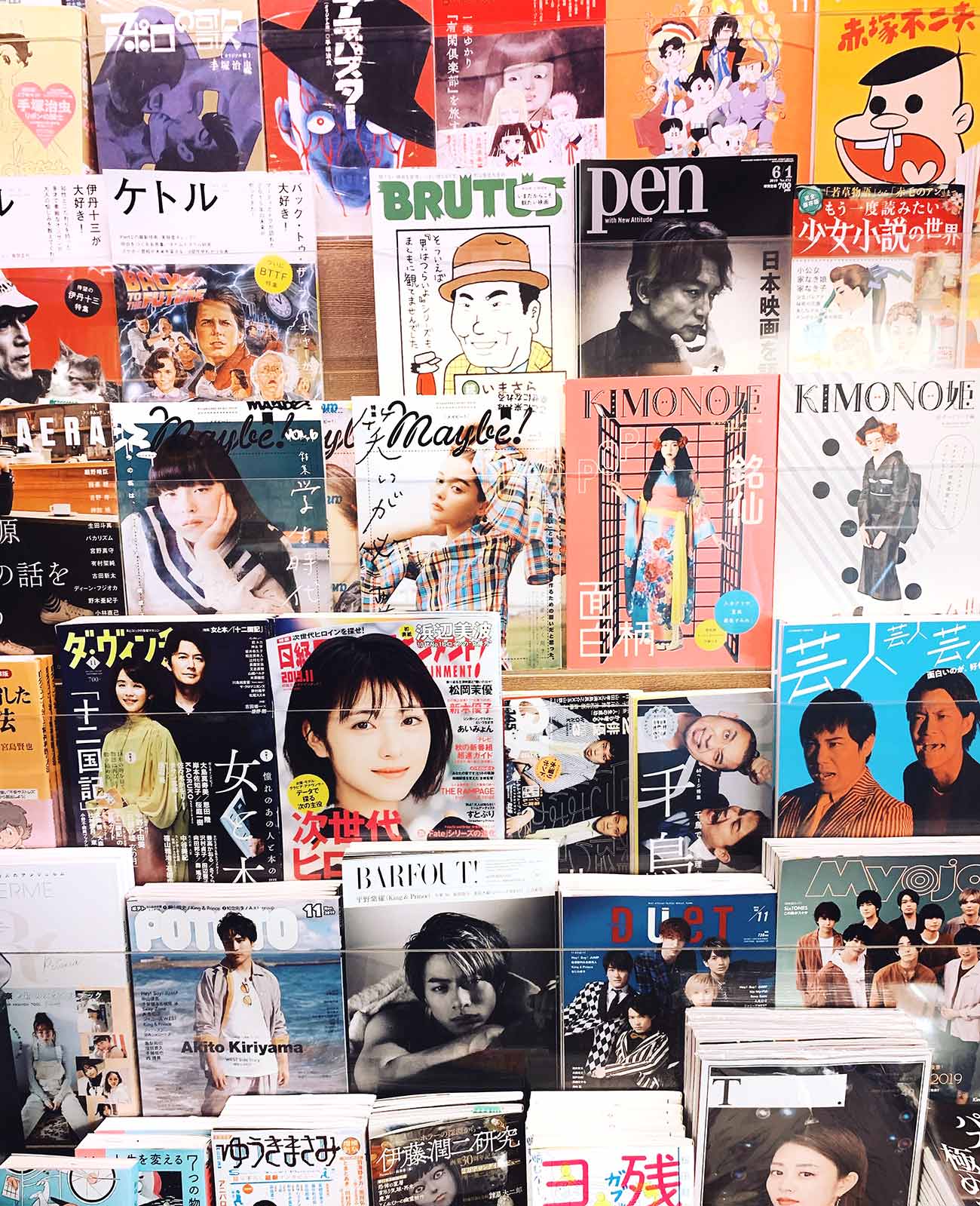
What to Do in Daikanyama:
-
-
-
- Ivy Place – Start your day by snagging a picturesque spot on the garden terrace within T-Site, a neomodernist building complex, to enjoy nature and a classic breakfast order of buttermilk pancakes with maple syrup or honey and fresh fruits.
- Tsutaya Books – Don’t leave the abundantly green and leafy Daikanyama T-Site without browsing shelf upon shelf of books, periodicals and even vintage Japanese magazines at this literary paradise.
- Anjin Library & Lounge – Head up to the second floor of Tsutaya Books for a quick caffeine break and marvel at the chic salon filled with a rare collection of books and magazine.
- Saigoyama Park – Promenade around this idyllic oasis to enjoy the weather. From its vantage point on a hill, you may be treated to a glimpse to Mt. Fuji on a clear day.
-
-
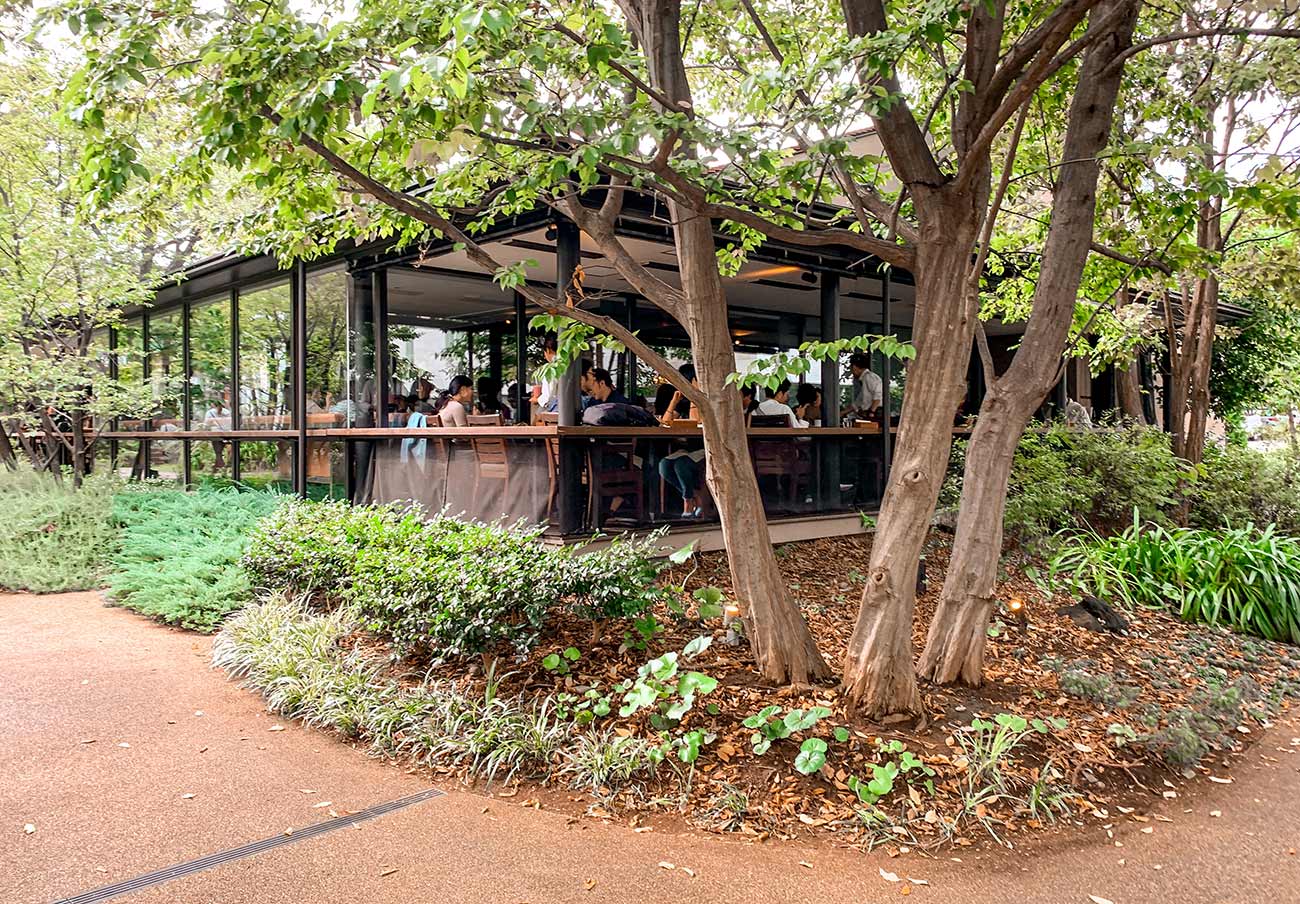

Anjin Library & Lounge on the 2nd floor of Tsutaya Books
Shibuya
Shibuya was probably my favourite ward in the entire city! You could spend your entire 5-day Tokyo itinerary exploring the nooks and crannies of this nexus of youth culture and never get bored. Plus, if you’re trying to decide where to stay in Tokyo, Shibuya is ideal for of its central location and proximity to other neighbourhoods.
Lunch in Shibuya
How did Shibuya secure a prime position in my heart? Through my stomach of course.
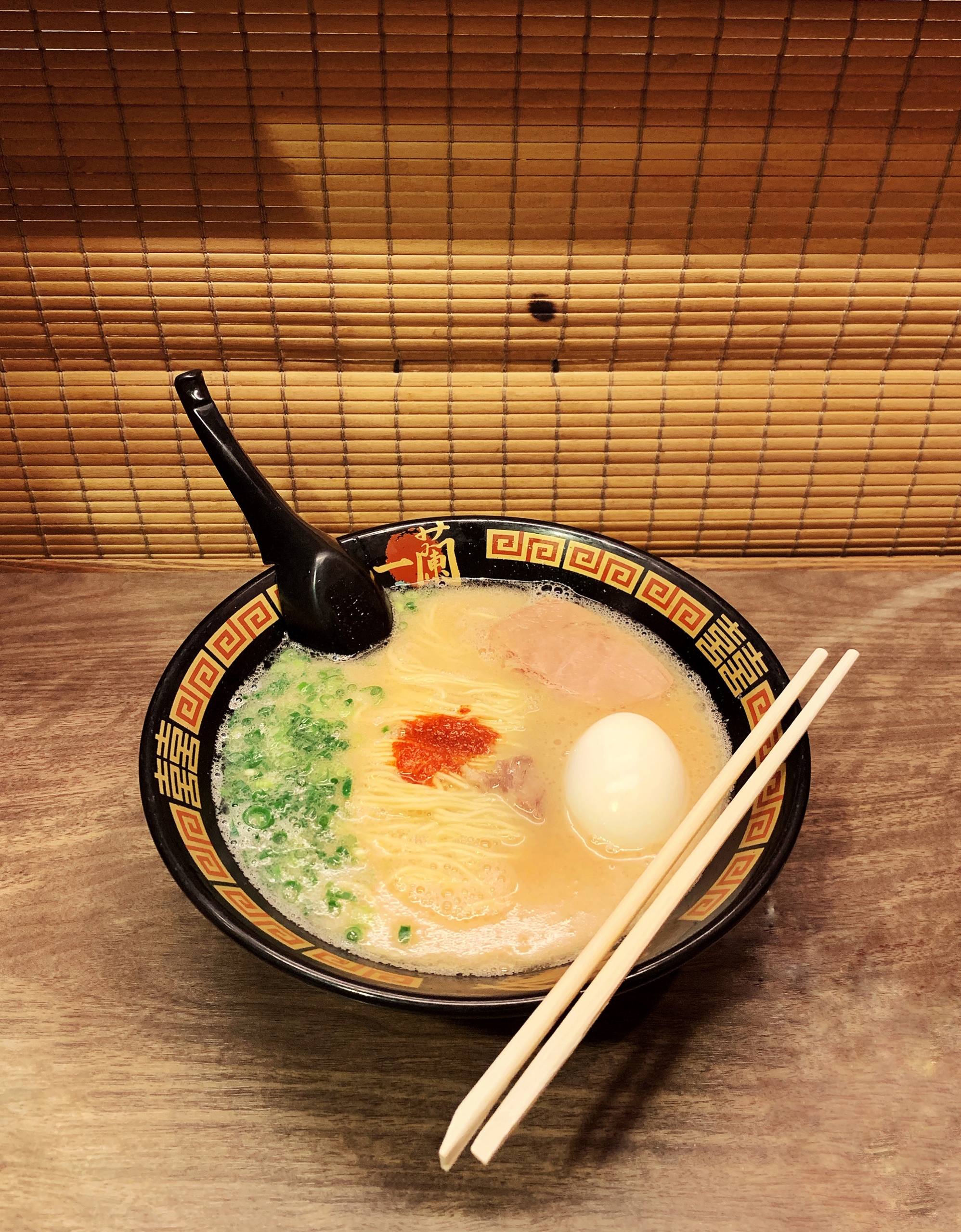
Bowl of ramen from Ichiran Ramen in Shibuya
Where To Eat in Shibuya:
-
-
- Abura Soba ($$) – I ate here twice in as many days when I was in Tokyo because I’m obsessed with abura soba. It’s a dry ramen with a shoyu tare (concentrated soy sauce base) that mixes with a plump egg yolk to coat the noodles in a silky sauce and topped with bamboo, shredded nori, chashu pork, and scallions. Go XL or go home (FYI, it’s the same price as a small bowl).
- Ichiran Ramen($$) – No doubt you’ve heard of this infamous chain known for their authentic, traditional tonkotsu ramen. Perch at one of the solo booths and customize your order exactly to your liking before digging in upon delivery.
- Uobei Shibuya Dogenzaka ($) – Does sushi taste better when it arrives via conveyor belt? Find out at one of Tokyo’s most famous kaiten sushi joints, also known as “rotation sushi” where small plates carrying nigiri, maki and sashimi make their way around the room.
- Teppan Onnadojo ($$) – Gobble down juicy yakitori skewers and tasty small plates (like the omelette stuffed with cod rod) at this boisterous izakaya in Shibuya.
-
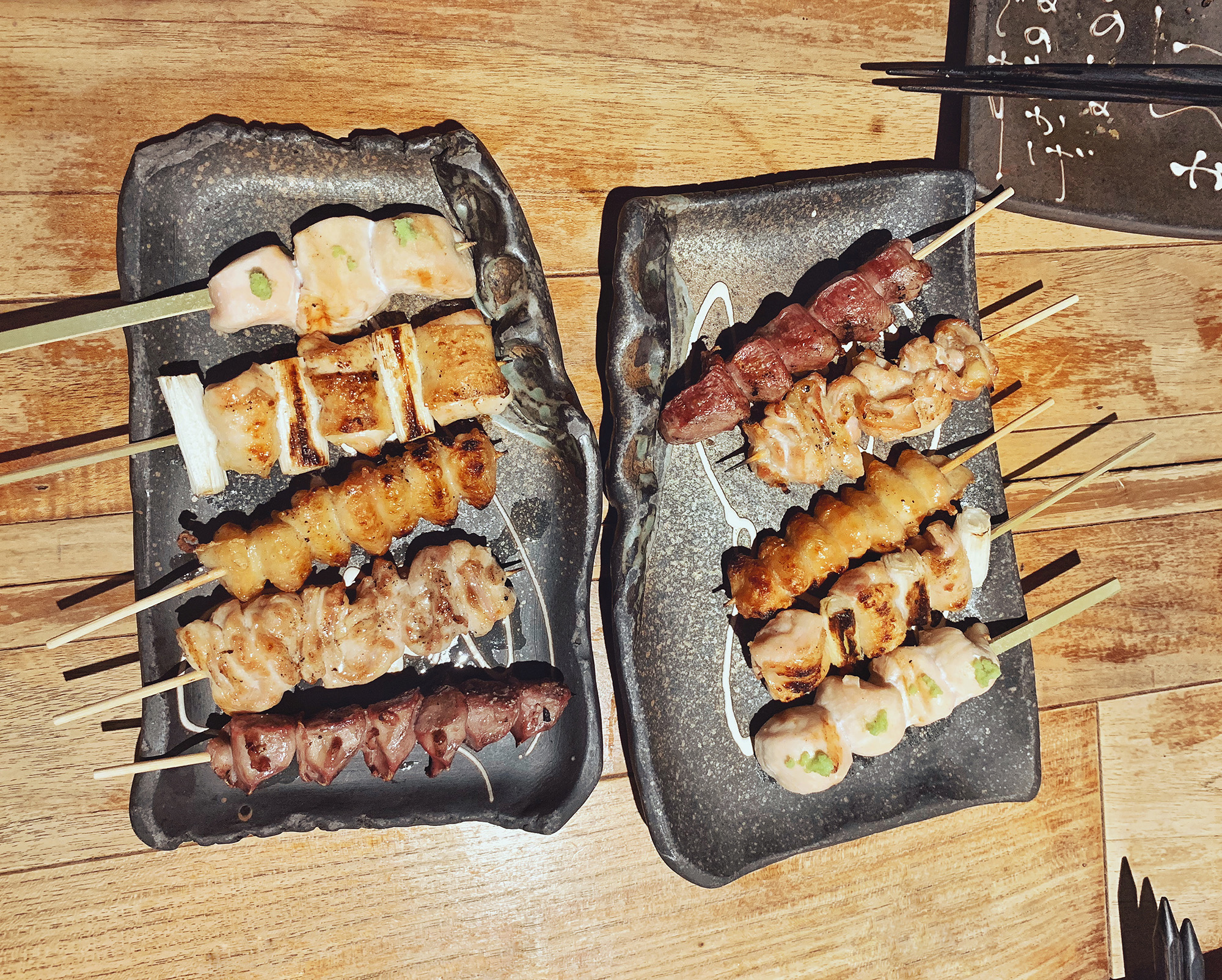
Juicy yakitori at Teppan Onnadojo
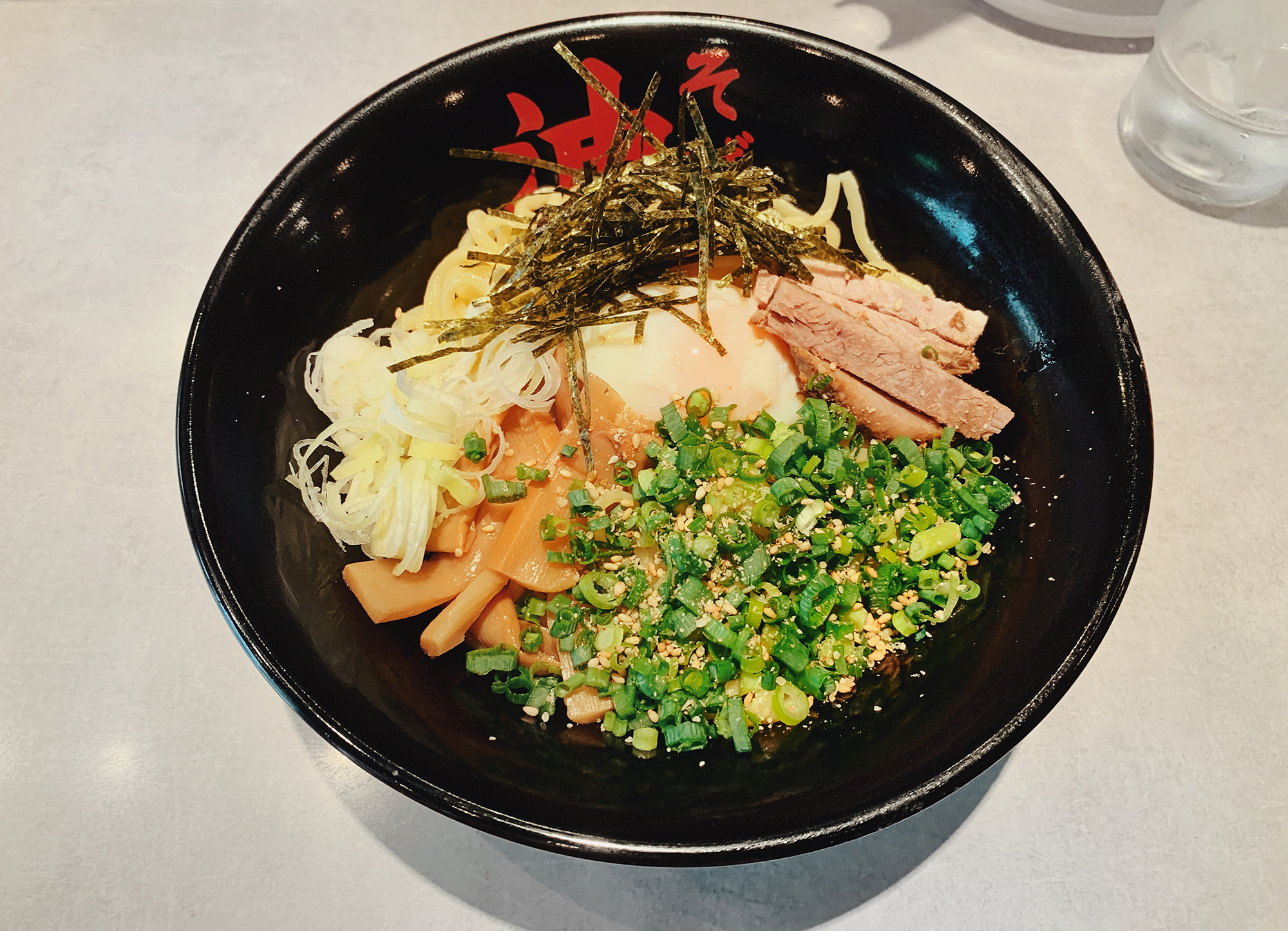
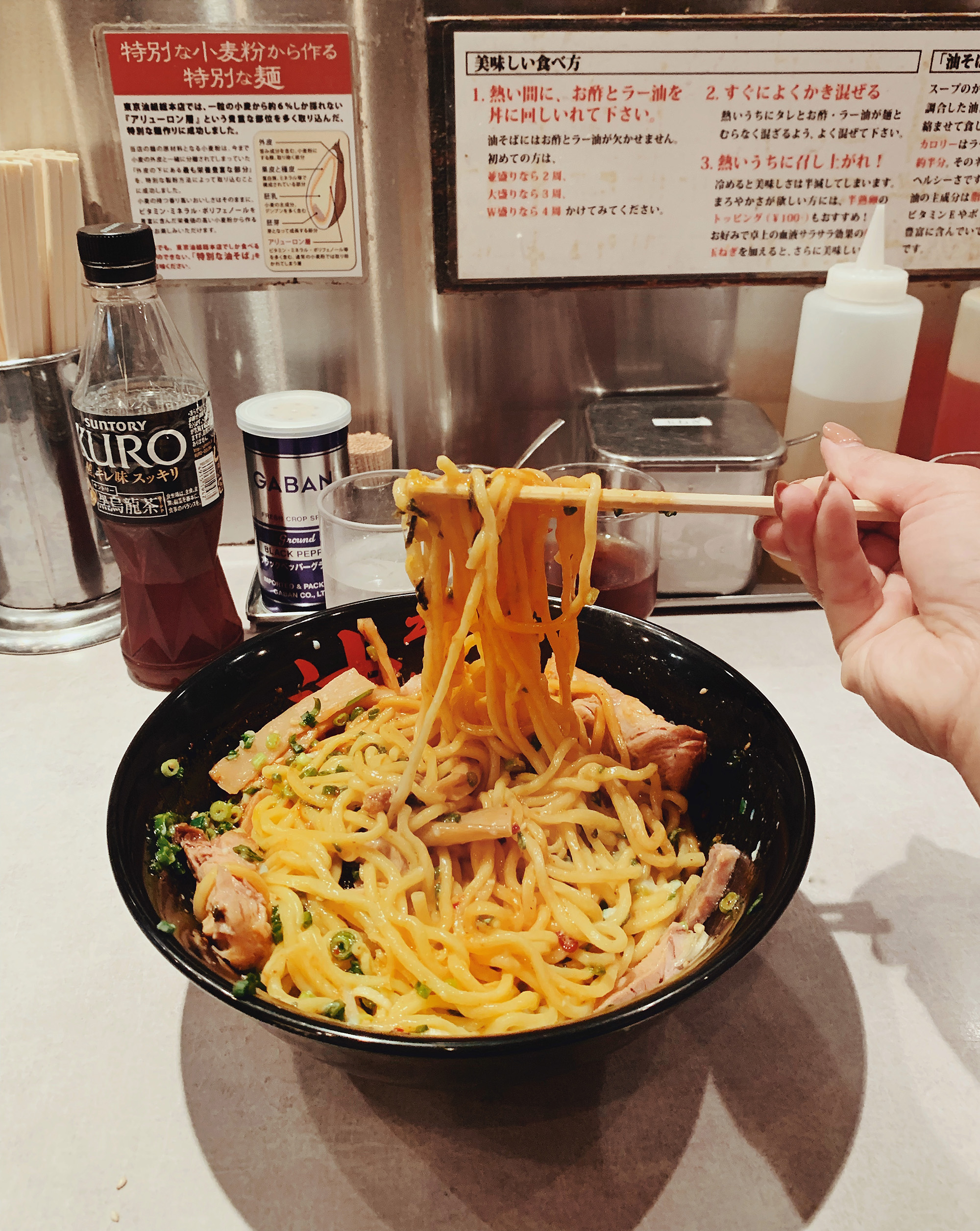
YUM YUM YUM! Abura soba from…Abura Soba in Shibuya
Shibuya Shopping
Shopping in Shibuya is the way to go if you’re searching for keepsakes. As the epicentre of Japan’s fashion and entertainment trends, it’s the ideal area to pick up Japanese souvenirs to commemorate your trip, from handmade ceramics to kawaii stationery to professional-quality knives.
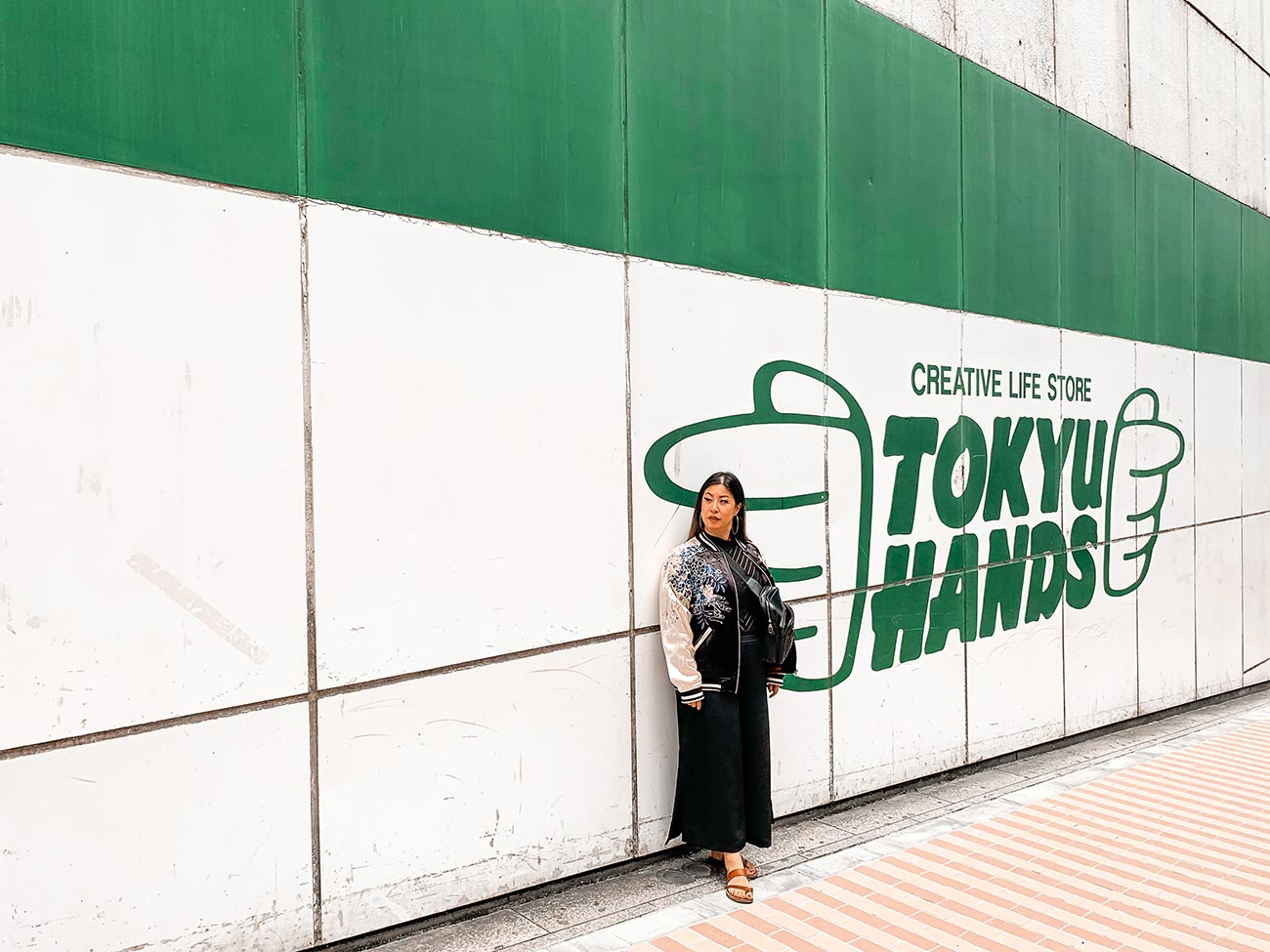
Where to Shop for Tokyo Souvenirs
-
-
- Don Quijote Shibuya – Also known as Shibuya Mega Donki, it’s the largest of the chain stores in Japan and open 24 hours a day for your convenience. Make your way through seven floors of every kind of Japanese souvenir you can think of — cKit Kat bars of various flavours, Pikachu face masks, a millennial-pink waffle maker, sex toys (yup)…
- Tokyu Hands – You’ll find higher quality mementos at this epic DIY shop offering a curated collection of unique lifestyle products.
- Matsumoto Kiyoshi – Simply known as “the yellow store” by tourists, raid the aisles of this pharmacy chain for the latest in Japanese skincare, health and Japanese beauty products to achieve the coveted mochi skin.
- LOFT – You’ll be in heaven at this specialty goods store if you love stationery — notebooks, paper, pens, etc… Their products hit the ultimate trifecta to consider when shopping for in Japanese souvenirs — stylish, high quality and reasonably priced.
- Village Vanguard – Looking for Tokyo souvenirs for kids? This whimsical place is fully stocked with comics, novelty items, music, and your favourite plush video game characters.
-
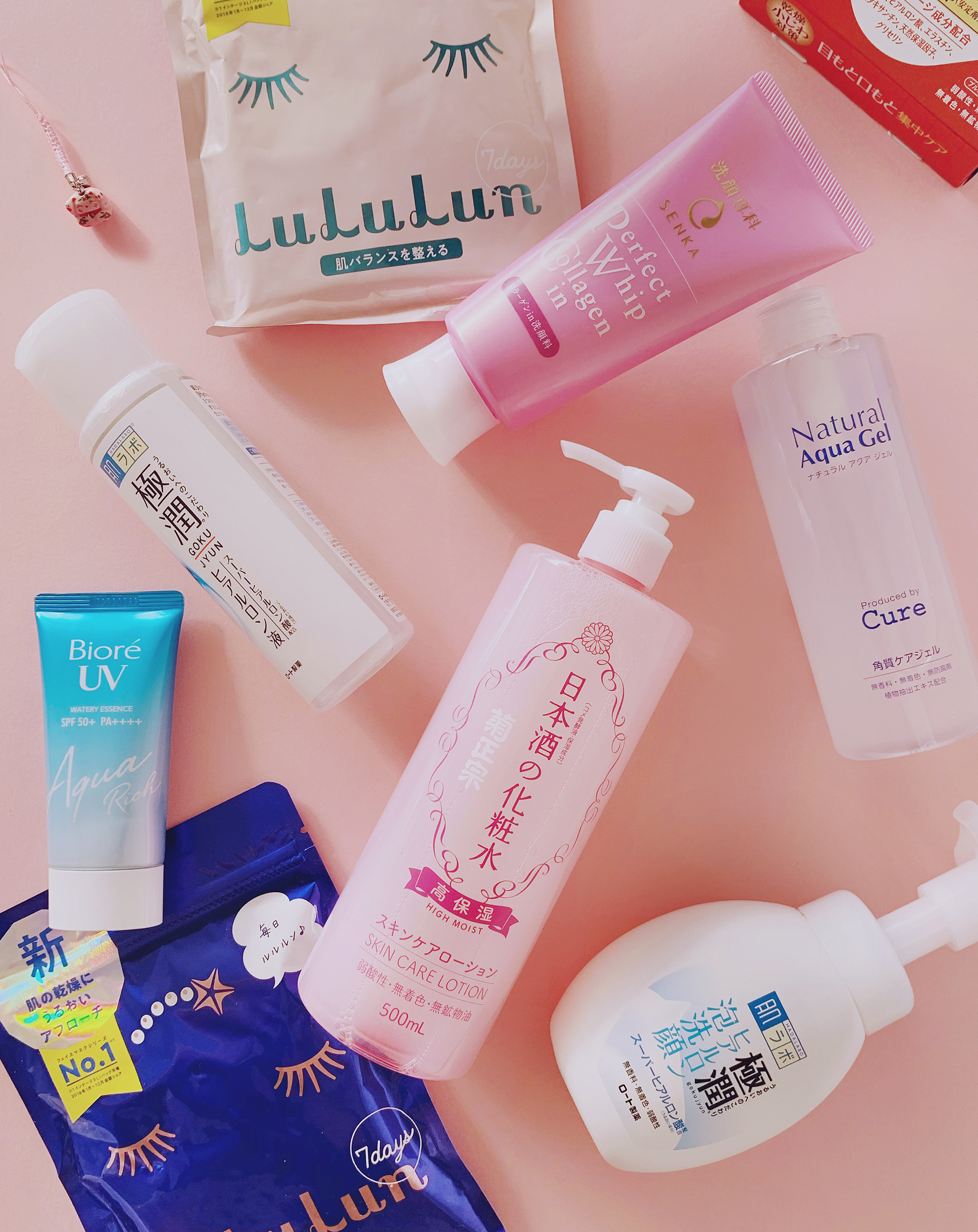
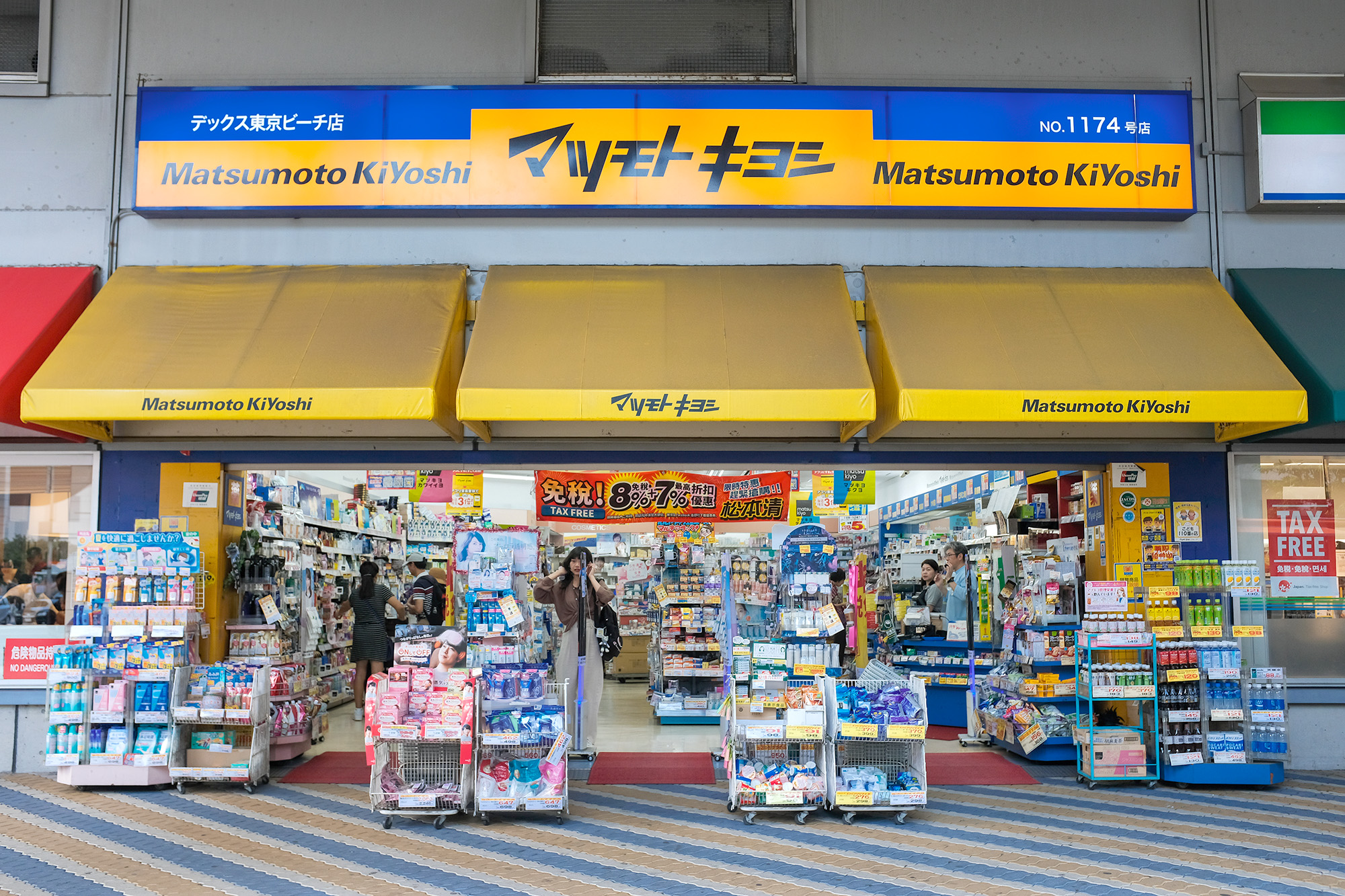
Exterior of a Matsumoto Kiyoshi in Japan. (Editorial credit: Terence Toh Chin Eng / Shutterstock.com)
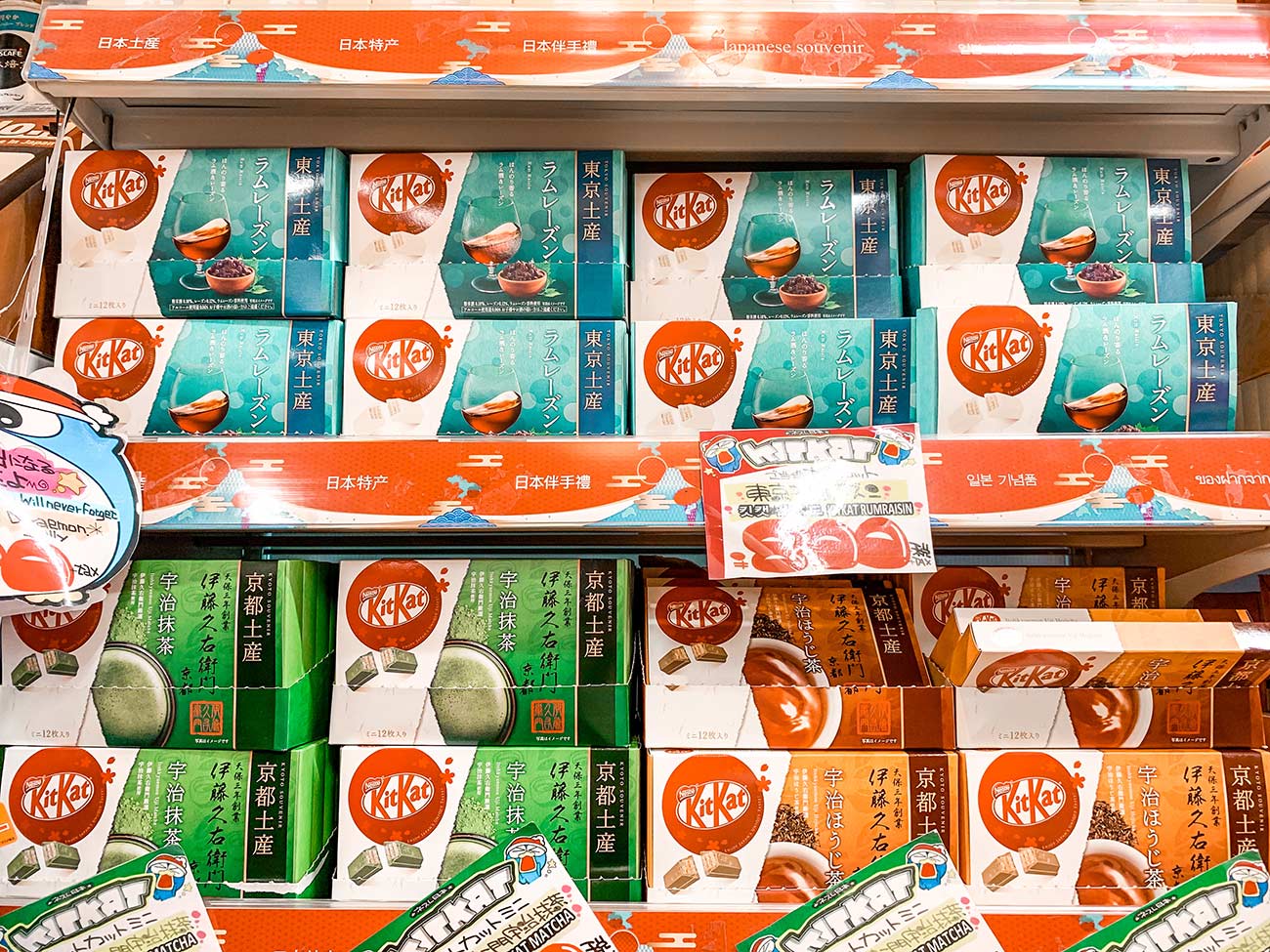
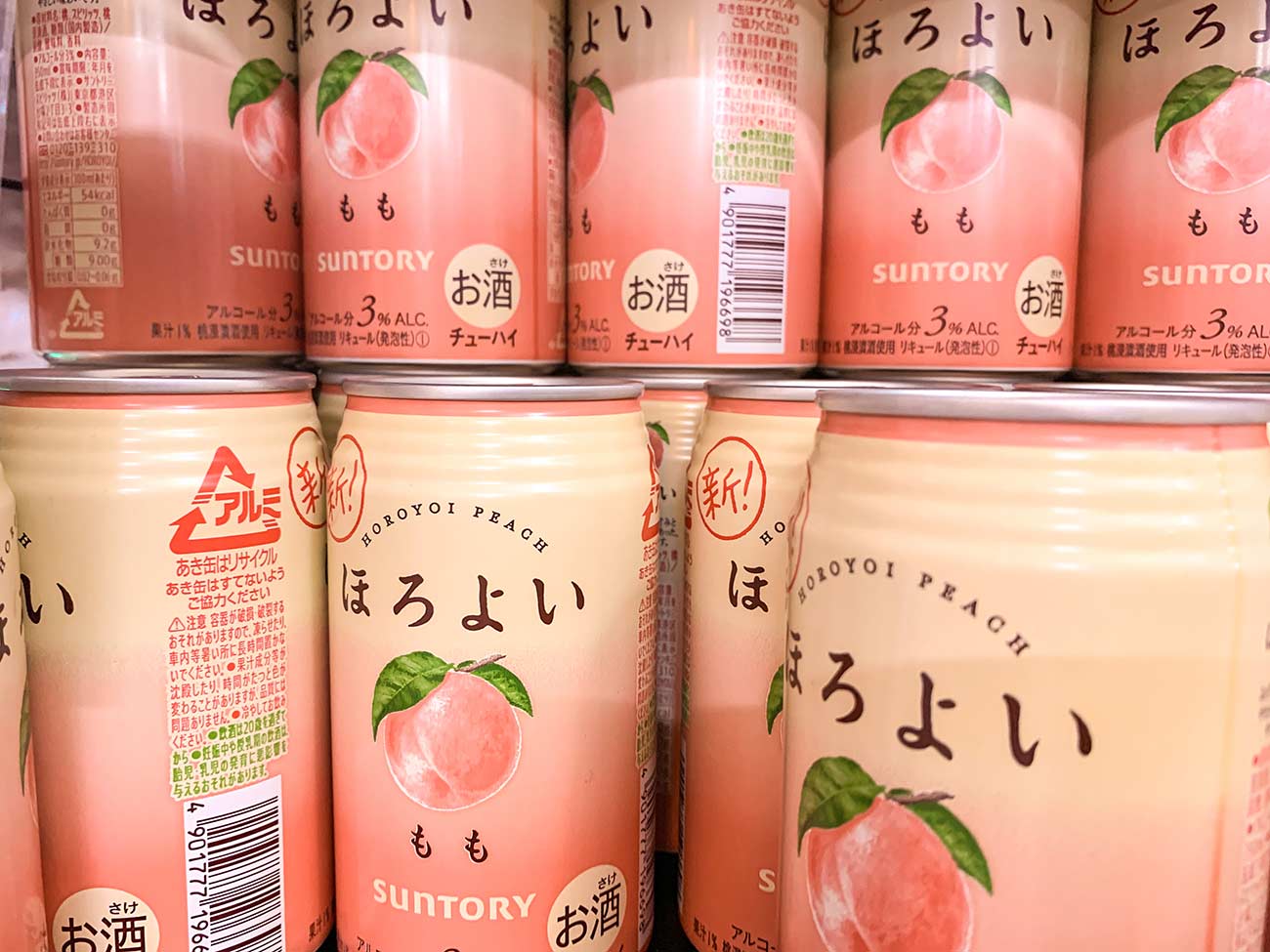
Since I was staying at a hotel in Shibuya, I saved all of my souvenir shopping for the last day in my 5-day Tokyo itinerary. Keep in mind you’ll pay less with the tax-free option but you can’t open the sealed package before you get home.
Shibuya Crossing
Wondering what Shibuya is famous for? The scramble crossing, called Shibuya Crossing, is the “world’s busiest pedestrian crossing.” When the lights turn red and the vehicles in every direction halt in their tracks, the scramble crossing can host as many as 3,000 people strolling along the intersection at a time.
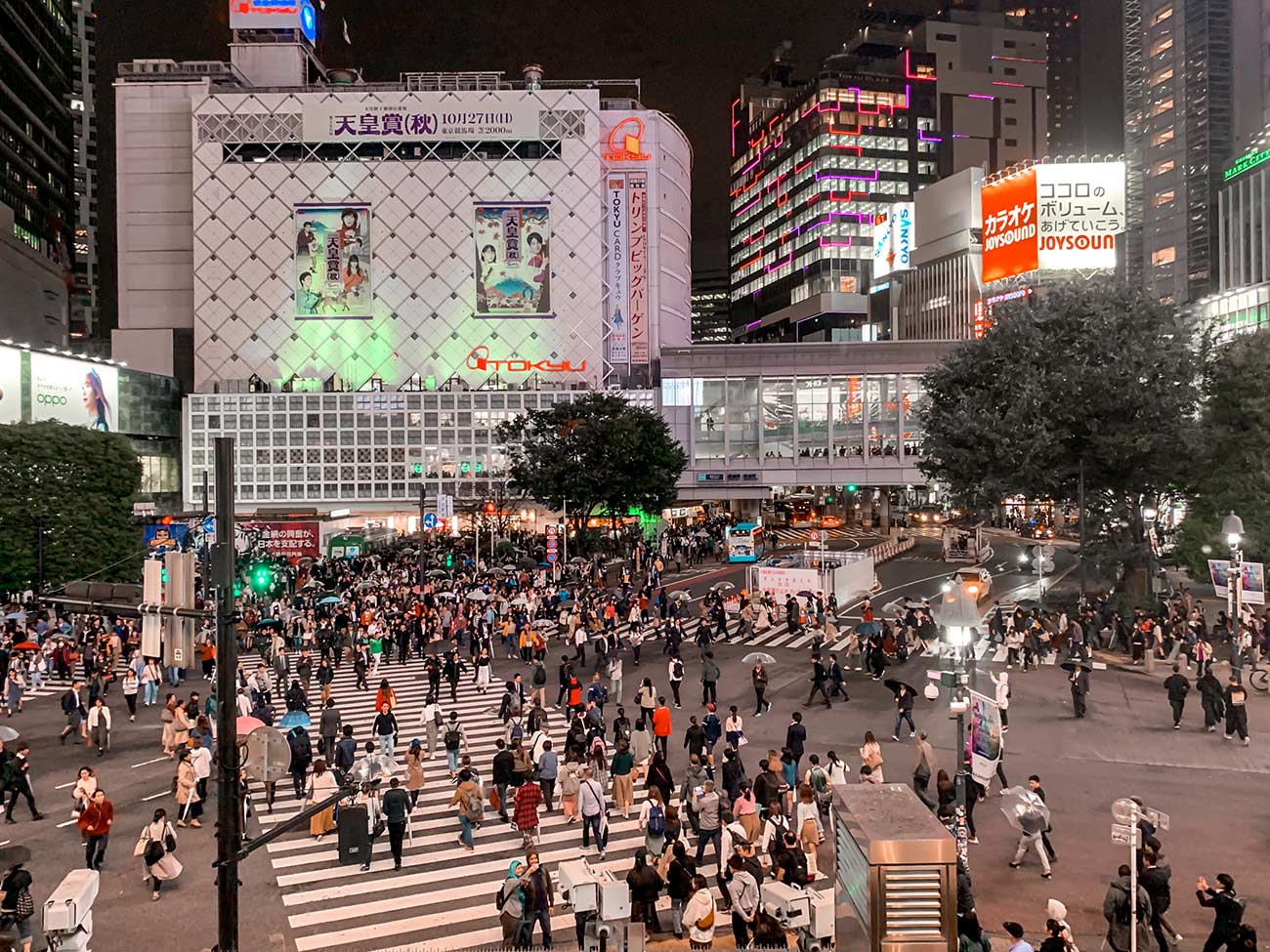
Bask in the pulsing energy of the crowd before letting yourself get carried away along the well-trod street. Before traffic resumes, strike a pose in middle of wave of pedestrians for an iconic photo.
For the best overhead view of the ‘scramble,’ take a seat at the full-length glass wall at the Starbucks in the Shibuya Tsutaya video rental store or any of these other vantage points.
Dinner in Shibuya
Yay, it’s dinnertime! You know during every activity in this 5-day Tokyo itinerary that doesn’t involve food, I’m just counting the minutes until I can eat again…
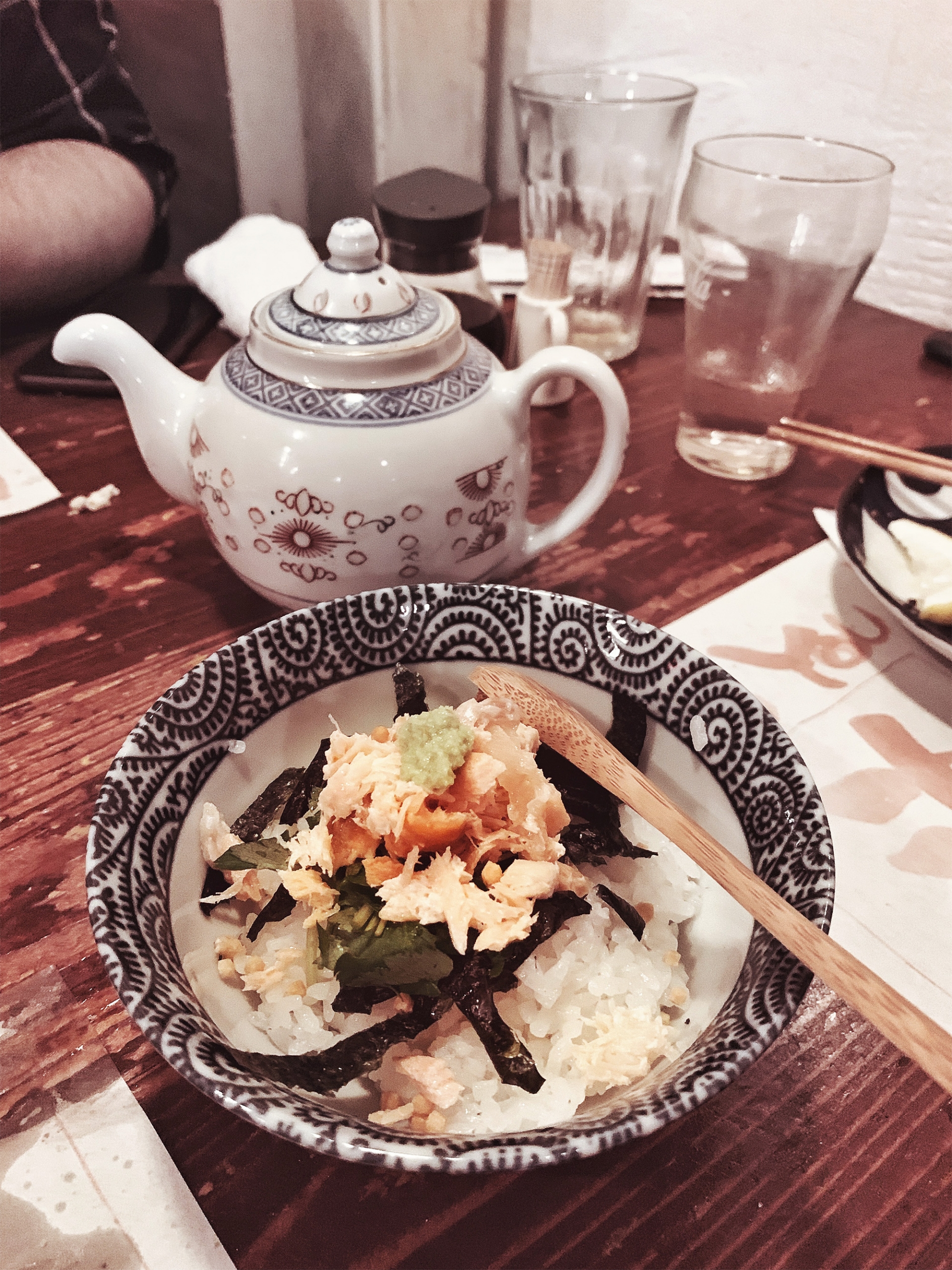
Treat yourself to a fresh seafood feast at one of the best restaurants in Shibuya — Kaikaya By The Sea. It’s a modern East-meets-West restaurant offering innovative dishes featuring fish, crustaceans, and other ocean dwellers caught straight from the Sagami Bay.
Opt for the Special Course Meal for a parade of culinary delights — artfully arranged sashimi platters, succulent slices of hamachi carpaccio, flavourful tuna spareribs, sticky fried prawns, shirako (cod sperm sac) au gratin, premium cuts of sirloin, etc…If you’re lucky, the meal will end with a dainty sakura blossom ice cream for dessert.

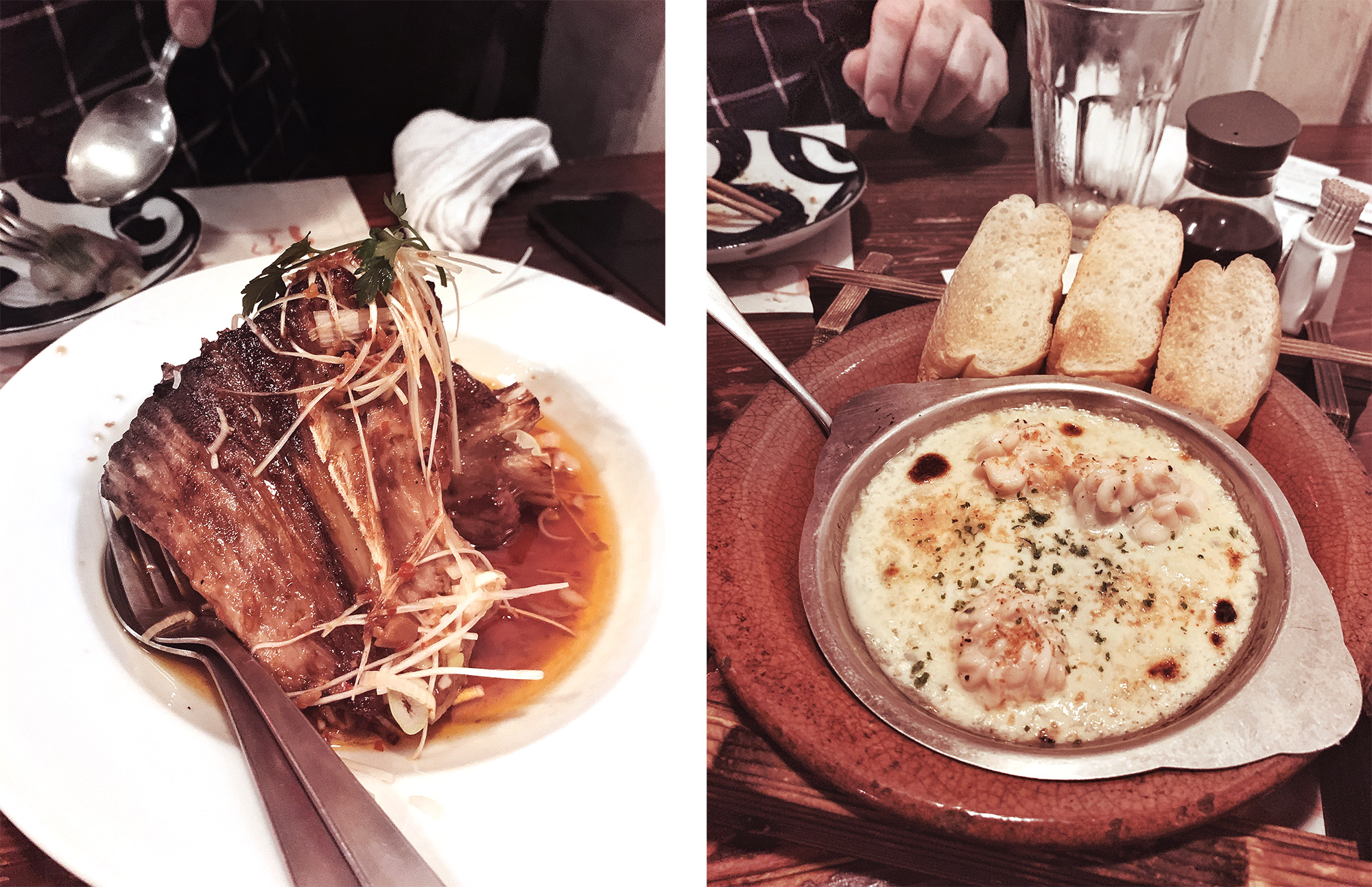
Tuna spareribs and shirako au gratin from Kaikaya By The Sea
Bars in Shibuya
Shibuya is a mix of business people and college students, new buildings and historic landmarks, tourists and locals…so you are sure to find a wide variety of nightlife in the area, no matter what you’re in the mood for.
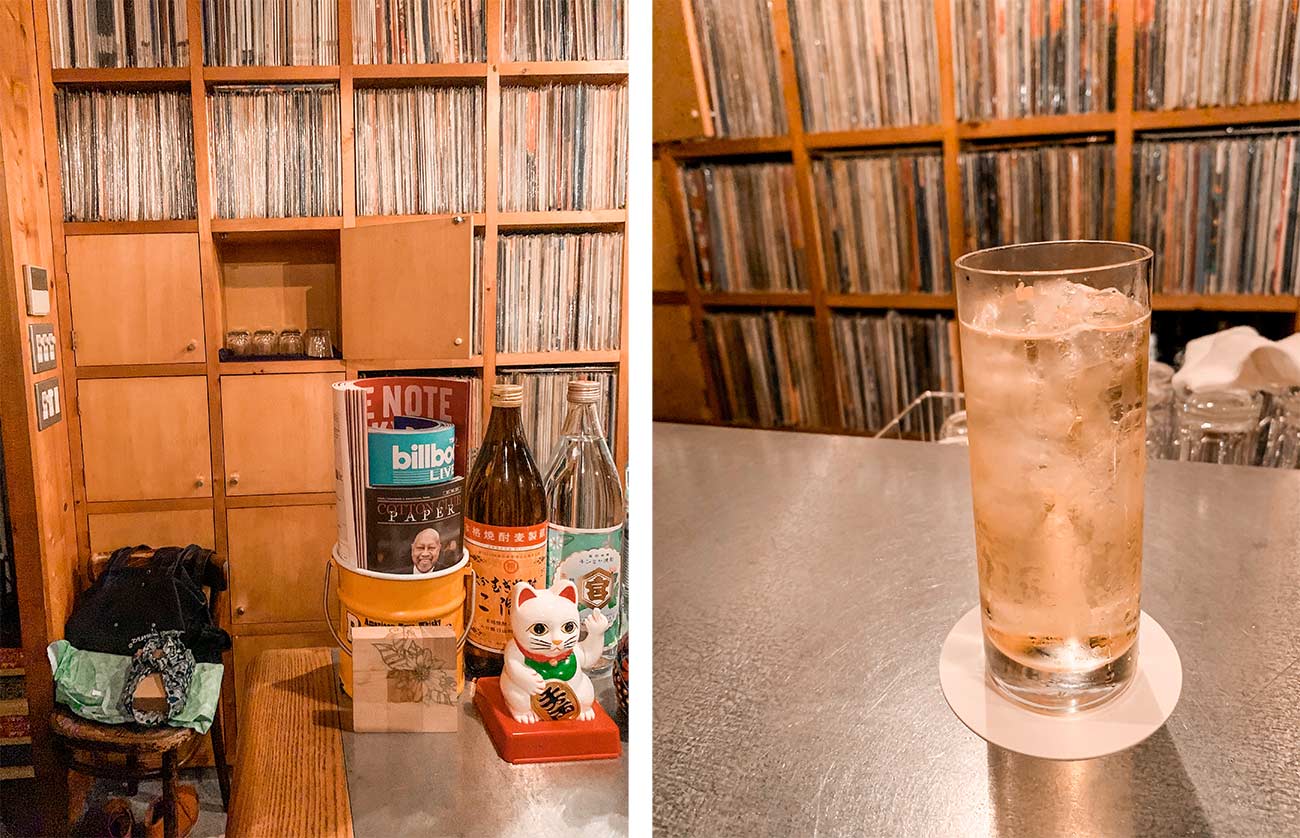
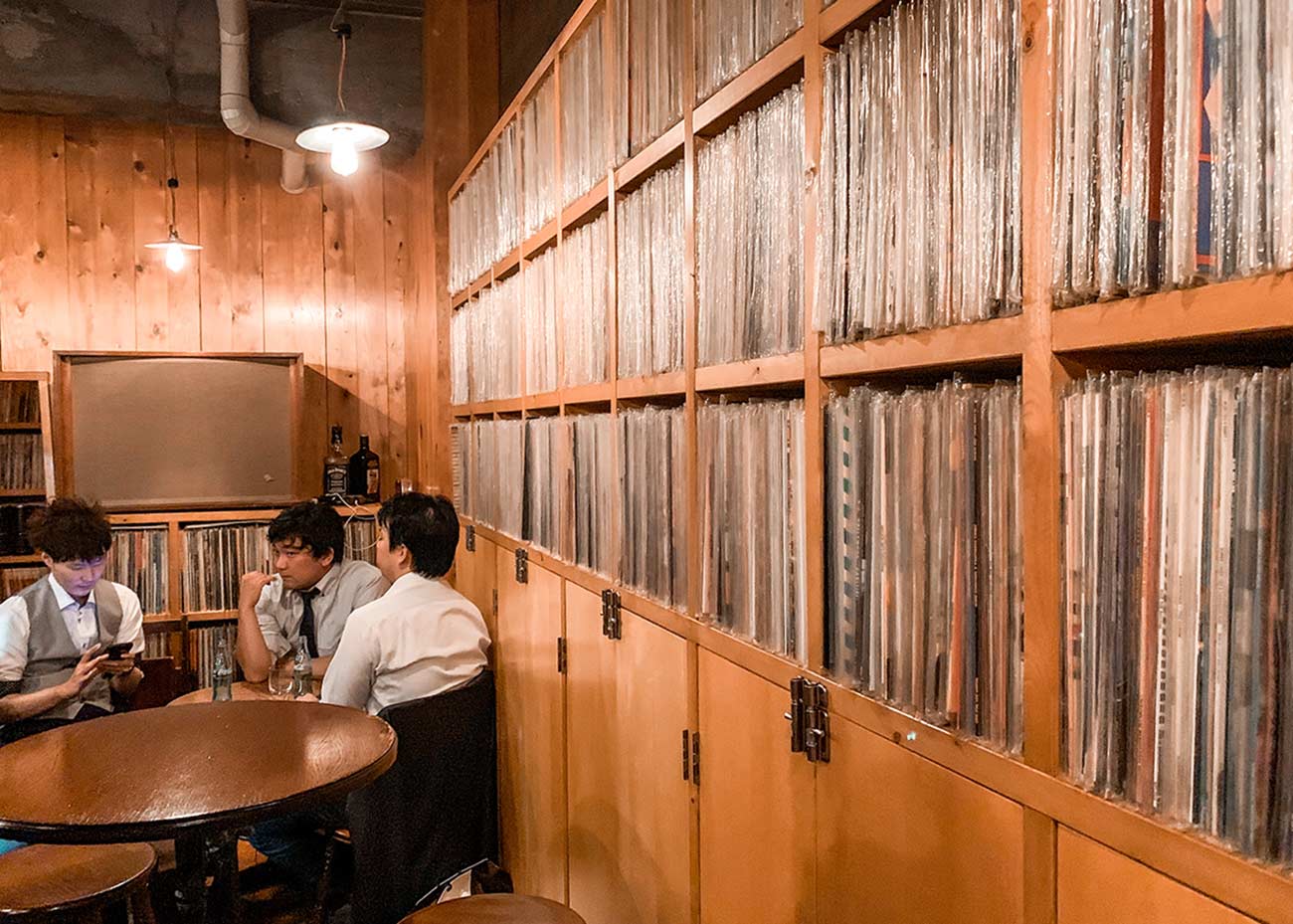
Vinyl-covered wall at JBS Bar in Shibuya
Where to go drinking in Shibuya:
-
-
-
- JBS Bar ($$) – Jazz Blues Soul (JBS) Bar is a humble refuge for appreciators of jazz and fine whisky, with more vinyl records bedecking the walls than there is room to sit. Note: Please be respectful! This is not the place to play loud drinking games or do shots of Jägermeister.
-
-
-
-
-
- Nonbei Yokocho ($) – For a sloppier kind of night, take a stroll down “Drunkard’s Alley.” Follow the string of glowing lanterns along a short and narrow drinking alley lined with a haphazard cluster of pubs and izakayas. Pop in and grab a drink and/or a snack wherever you can find a seat and enjoy the intimate ambiance.
-
-
-
-
-
- Bar Material ($$) – This bar specializes in umeshu, or “plum wine” and is about the size of a postage stamp. Every inch of wall is covered in worn labels and over 1,000 bottles of the Japanese fruit wine with different bases (sake, brandy, shochu) and infused with various flavours (chilli peppers, brown sugar, tea).
-
-
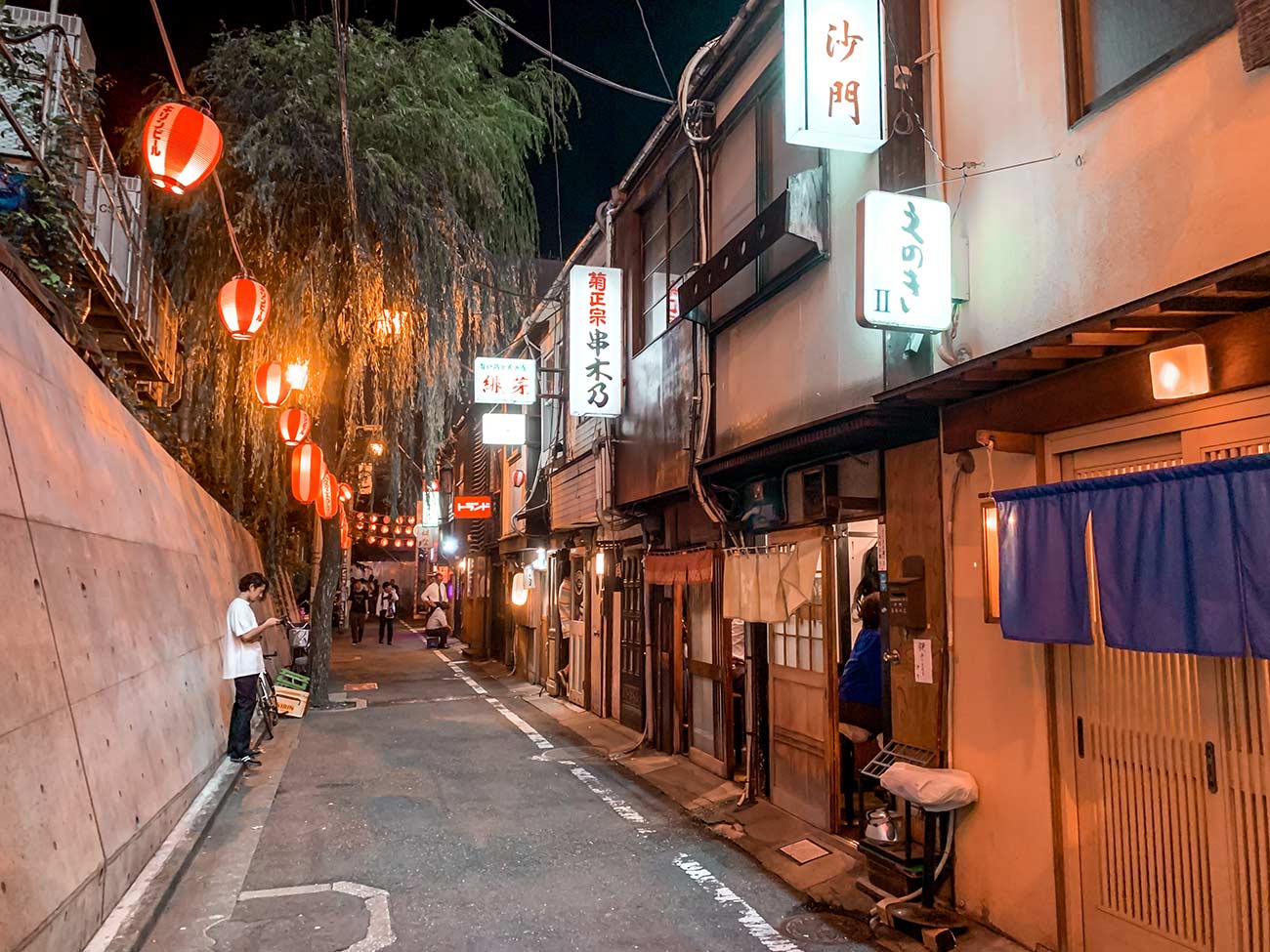
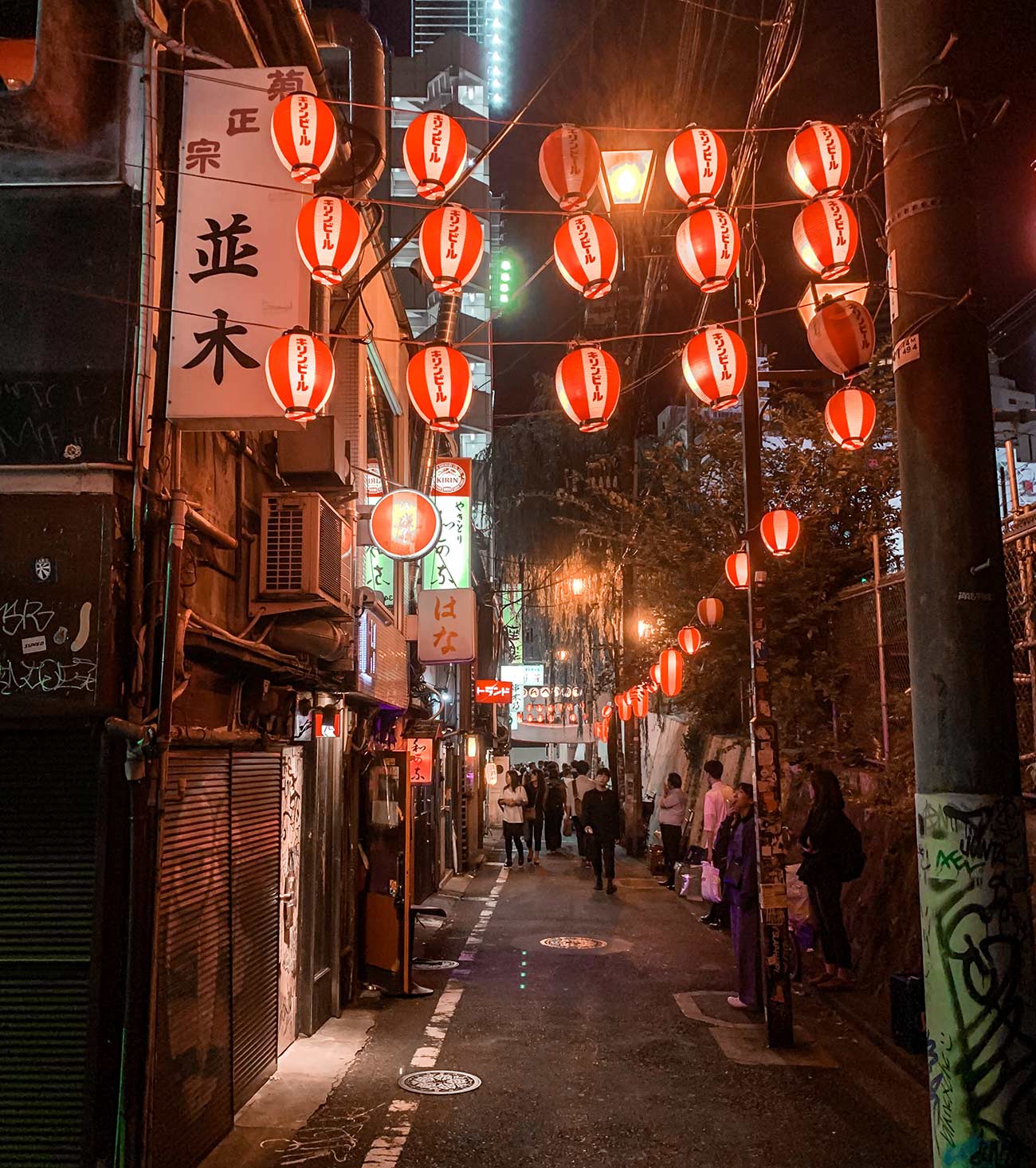
Nonbei Yokocho in Shibuya
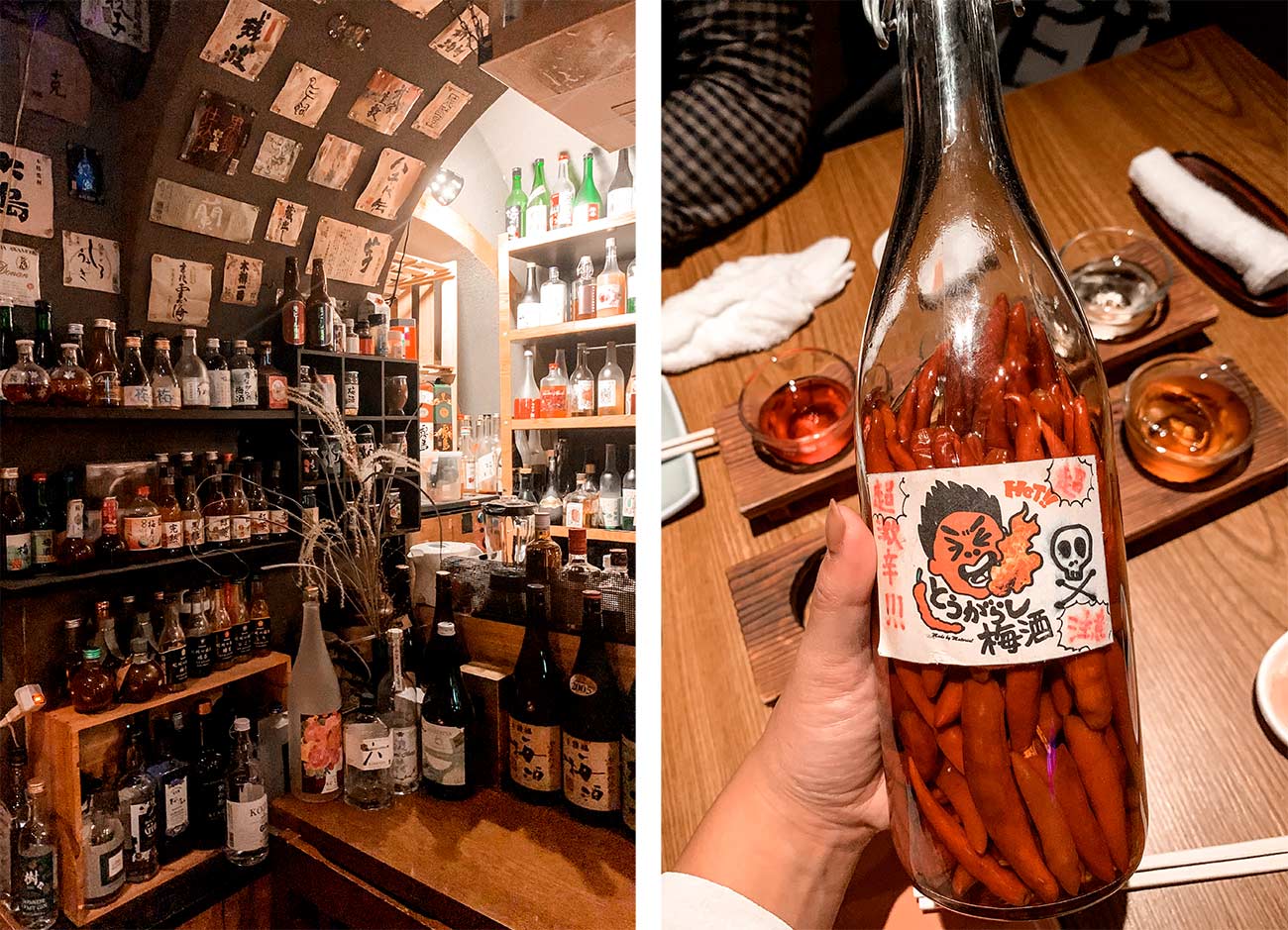
Chili-infused liquor at Bar Material
Top-rated shibuya Tours:
-
-
- Discovering Shibuya (from $37)
- Walking Food Tour of Shibuya at Night (from $178)
- Shibuya Bar Hopping Night Food Walking Tour in Tokyo (from $107)
- Bar-hopping in the streets of the world-famous Shibuya, Tokyo (from $91)
-
Day 3
Traditional Japanese Breakfast in Shinjuku
Before catching the train to the Ghibli Museum from Shinjuku Station, fuel yourself for day three of this 5-day Tokyo itinerary with a traditional Japanese breakfast at Shinpachi Shokudo.
At this rustic morning spot, they exemplify the concept of ichiju-sansai, which means ‘one soup, three sides’ with a hearty breakfast of charcoal-grilled fish (like mackerel or salmon), crisp pickles and miso soup.
Ghibli Museum
Housed in a foliage-covered mansion that resembles an Italian villa, the Ghibli Museum is a tribute to director Hayao Miyazaki’s beloved animation studio (pretty much the Disney of Japan).
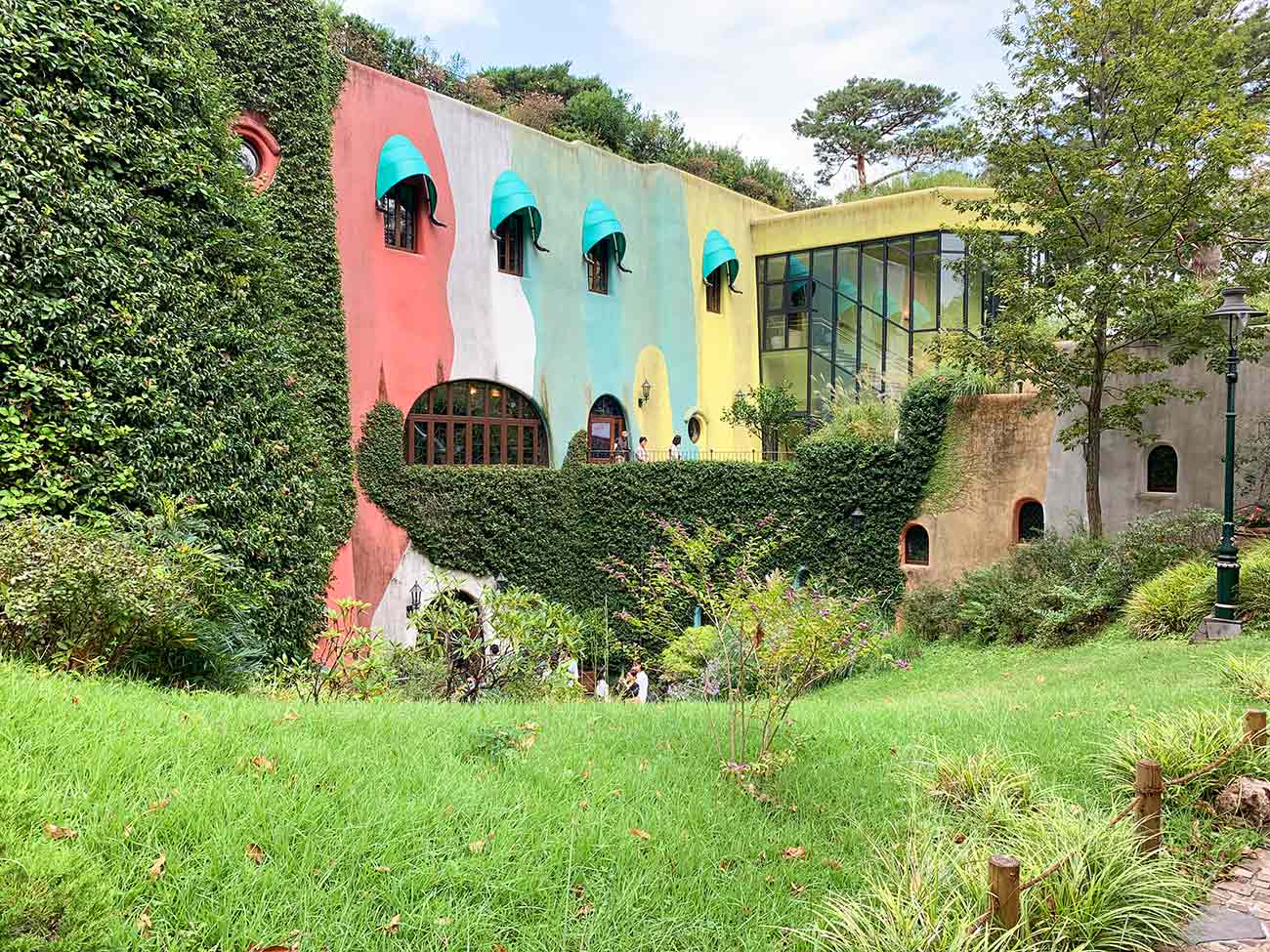
Exterior of the Ghibli Museum
Immerse yourself in imaginary world of Studio Ghibli by wandering through special exhibits, climbing up twisting staircases, and inspecting original sketches from fan-favourite films like “Howl’s Moving Castle.” Catch a screening of one of the short films at the on-site theatre.
Even the tickets are original 35mm film prints. On sale on the first of the month for the following 3 months (for visitors), buy tickets early because they sell out quickly.
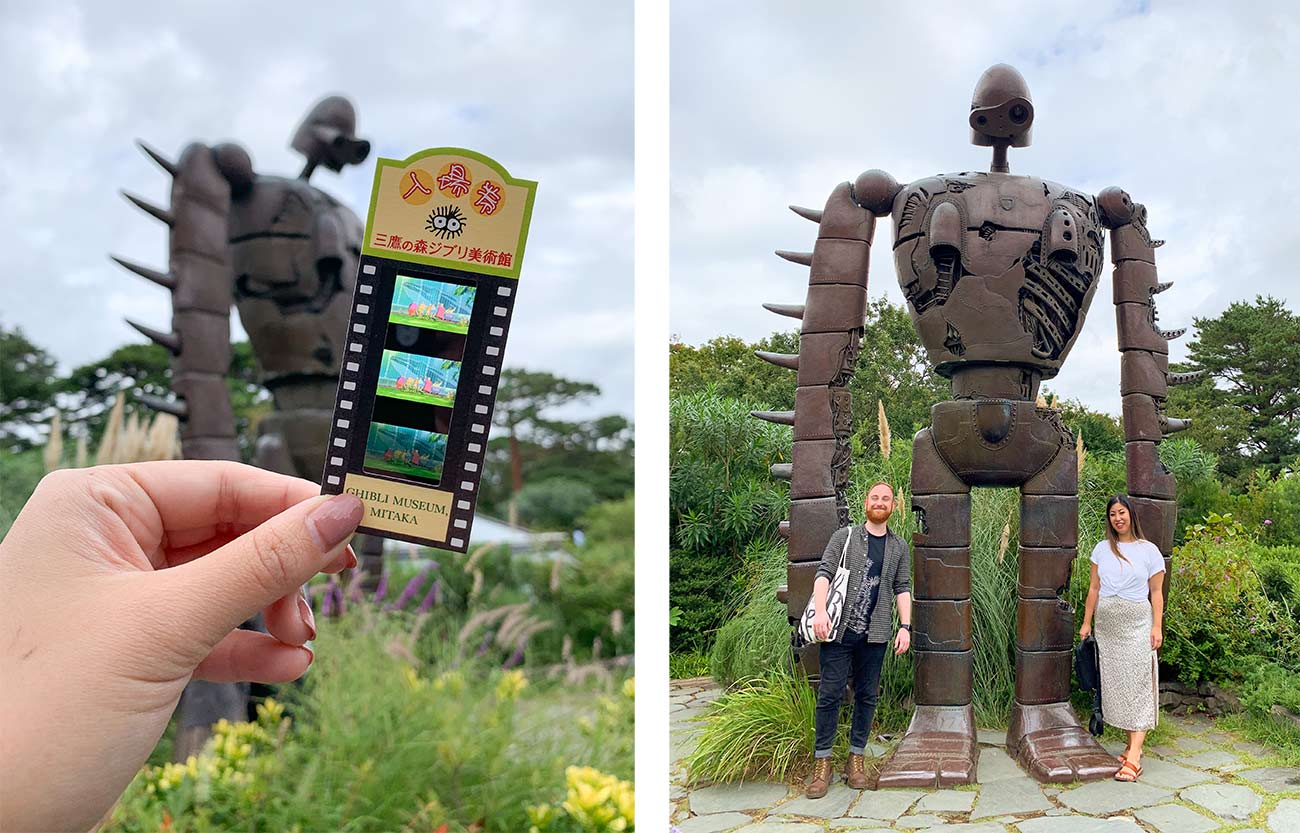
Really cool 35mm film ticket!
Tea Time in a Flower Shop
Press pause on your exhaustive 5-day Tokyo itinerary and take refuge at Aoyama Flower Market Teahouse, a verdant oasis in the Minato ward. Every surface of this café and flower shop is draped with lush greenery – hanging vines, potted plants, fragrant blooms and vibrant bouquets.
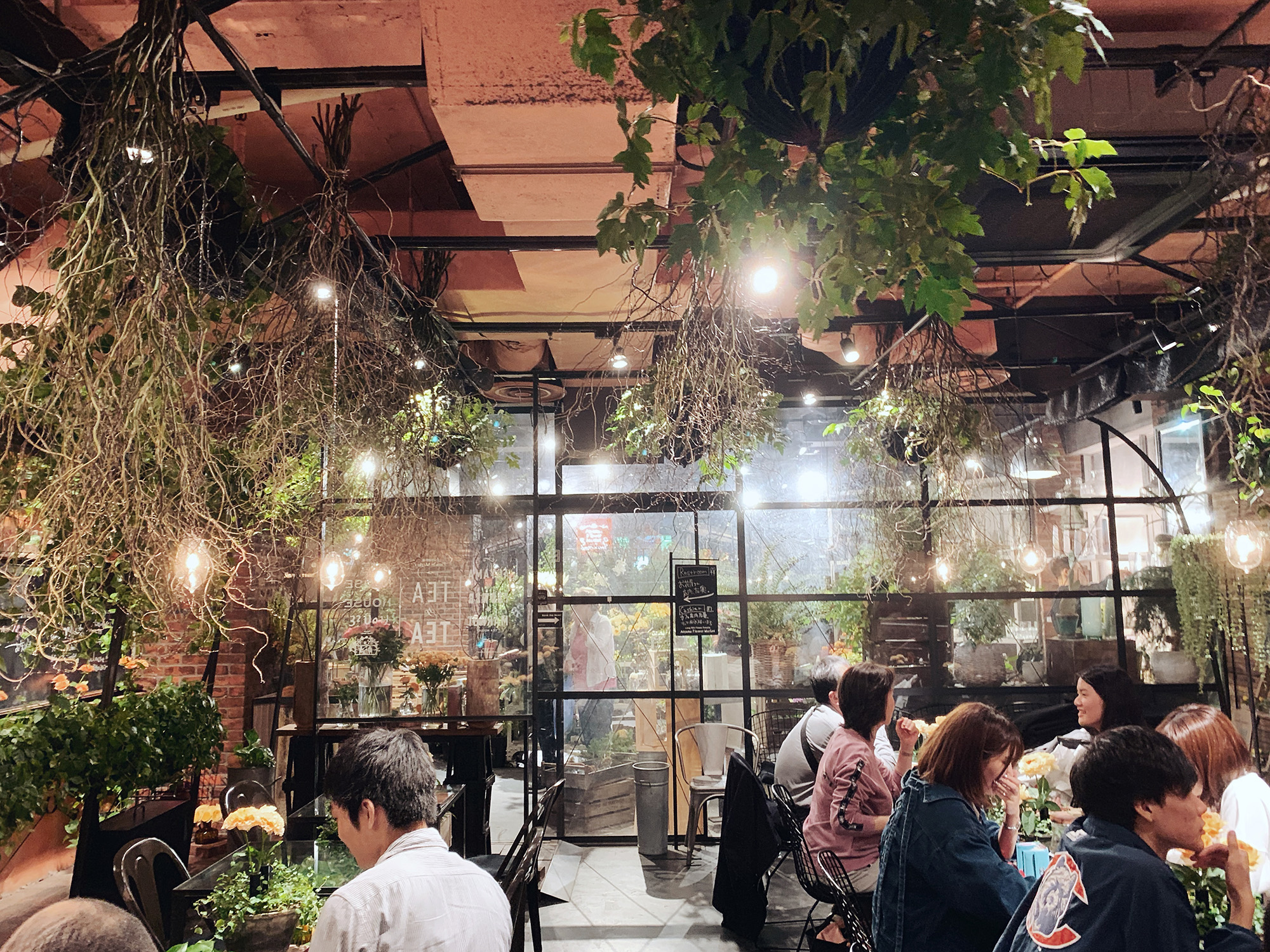
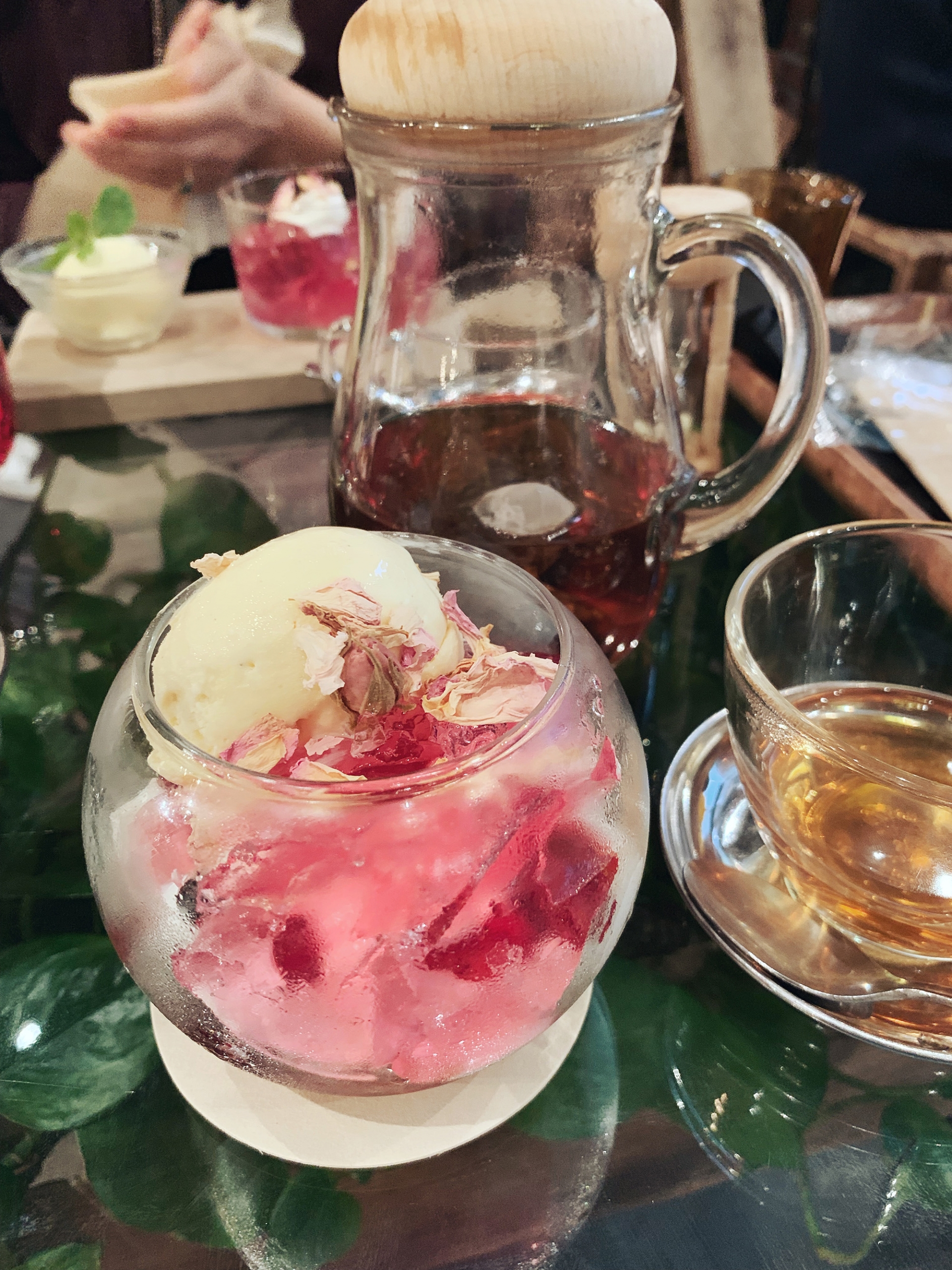
Breathe in the fresh air as you sip on a pot of fruity jasmine tea (my preference) and savour the delicate symphony of flavours in the flower parfait. Arriving in a glass globe, the dessert is composed of rose jelly and cherry mousse tempered by a creamy scoop of vanilla ice cream and sprinkled with crunchy cereal and edible rose petals.
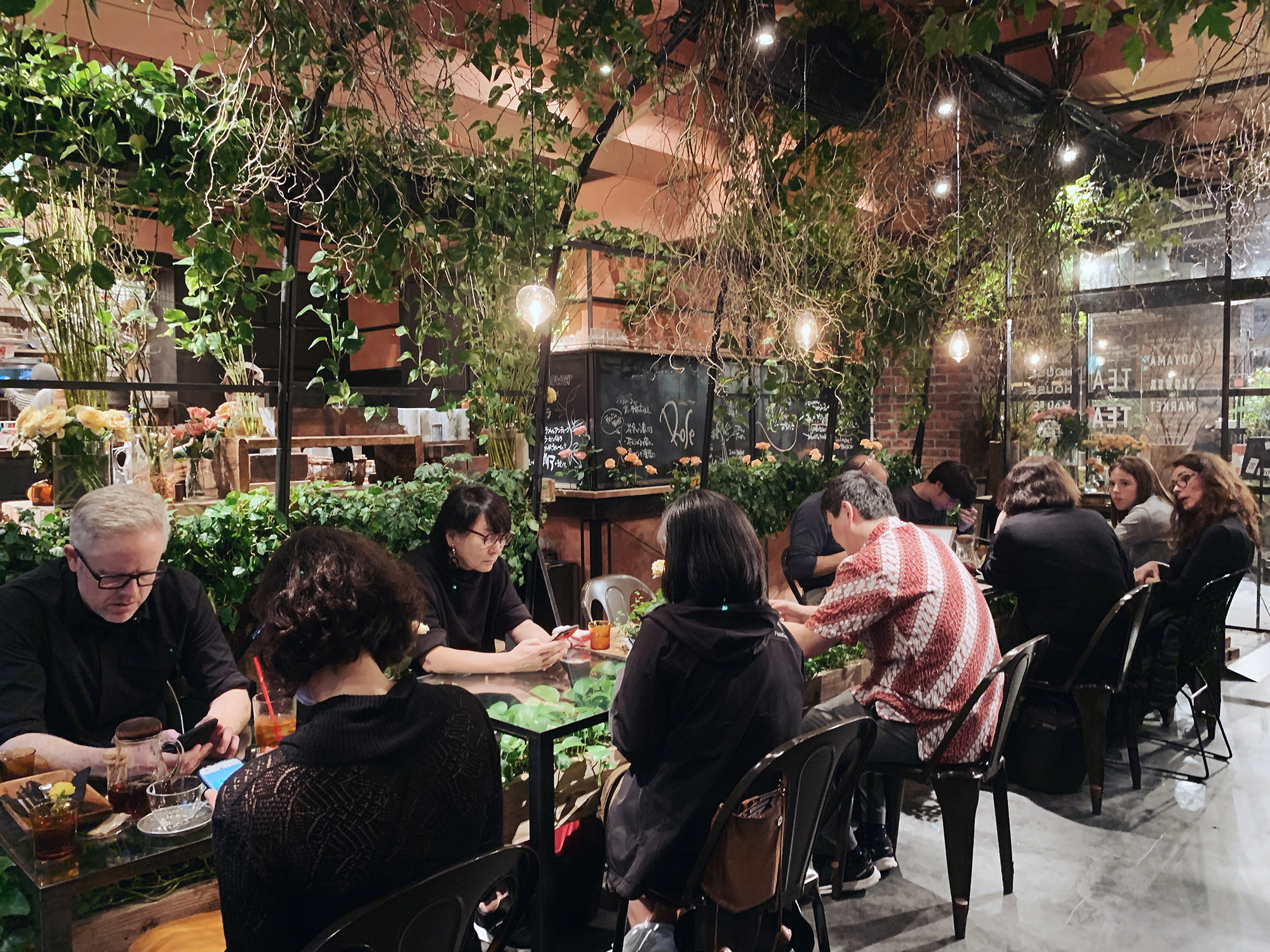
Harajuku
Keep the kawaii ball rolling and set out to explore Tokyo’s most stylish district — Harajuku! At the epicentre of Japanese pop culture, you’ll find wonderfully wacky food, Harajuku street fashion, trendy boutiques, and themed cafés along Takeshita Street.

What to do in Harajuku:
-
- Meiju Jinju – Trade whimsy for worship at this landmark Shinto shrine. Roam the expansive, foliage-filled shrine grounds and pass through the massive, wooden torii gates to experience a sense of peace amid the chaos of the Harajuku district.
- Yoyogi Park – Next to Meiji Shrine, traipse through the natural beauty of this vast park for a little solitude and self-reflection. It’s the ideal spot to practice shinrin-yoku, or ‘forest bathing,’ a prevalent Japanese concept for healthy living.
- Purikura Shop Noa – Strike a pose in one of the next-level photo sticker booths at this purikura (print shop) for the ultimate selfie. Decorate your images by adding bunny ears or whiskers, add filters and hearts, etc…Beware: It’s terrifying in there…a flurry of squealing girls dressed in costumes and primping their hair and makeup to perfection.
- Harry Cafe – Grab a handful of kawaii at this hedgehog cafe. Cuddle a real-life Sonic while sipping a latte.
- Kinji – Dig through racks of sartorial treasures at this Harajuku shop. You’ll find vintage duds, costume jewellery, traditional kimonos, and authentic sukajan (Japanese souvenir jackets) at this used clothing store.
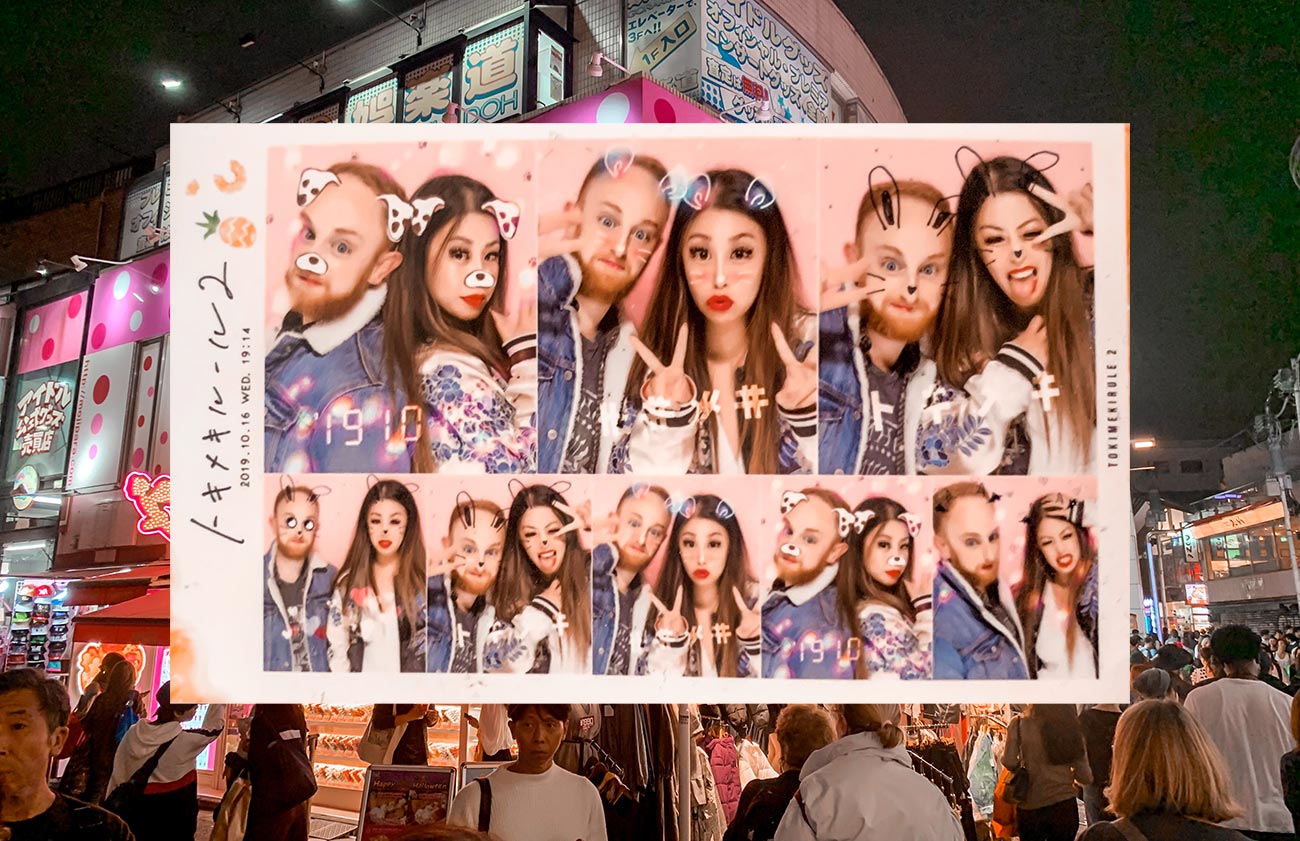
Purikura fun!
Kawaii Places to eat in Harajuku:
-
-
- Café Ron Ron – Everything is cuter when it’s miniature, including desserts! Grab a seat at the marble-top bar and watch a procession of dainty macarons, Japanese crepes, and fruit tarts parade by on pastel plates aboard a conveyor belt.
- Reissue Café – For the cutest, IG-worthy 2D or 3D latte! Request the latte artist to decorate your drink with an image of your choosing or get something like a Totoro or bunny made of foam, chilling in your beverage.
- Gindaco Takoyaki – Snack on takoyaki (battered octopus balls), smothered in sauce, or munch on a crispy croissant taiyaki (fish-shaped cake) filled with azuki red bean or custard.
- Totti Candy Factory – This spot whips up giant, wispy clouds of rainbow cotton candy for a super extra, sugary experience. Do it for the ‘gram.
-
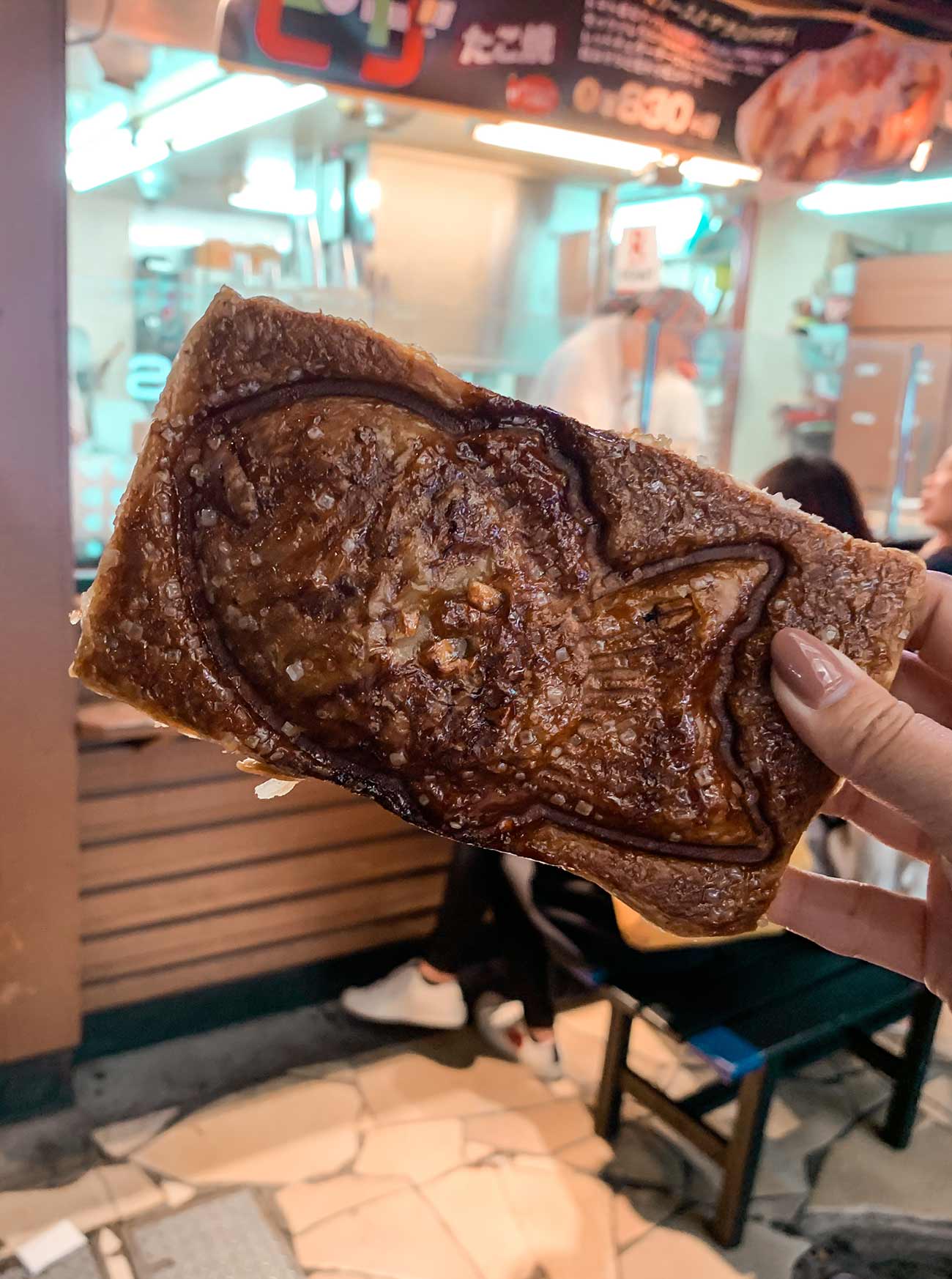
Croissant Taiyaki with Azuki bean from Gindaco Takoyaki in Harajuku
Shinjuku
Udon Lunch in Shinjuku
Shin Udon is a snug shop based in Shinjuku and is a MUST visit in Tokyo, especially if you’re as noodle-obsessed as I am. Arrive early or be prepared to wait in line to indulge in a bowl of their fresh buckwheat noodles made in-house. If you’re an udon purist, get the zaru udon, cold noodles served with a dipping sauce.
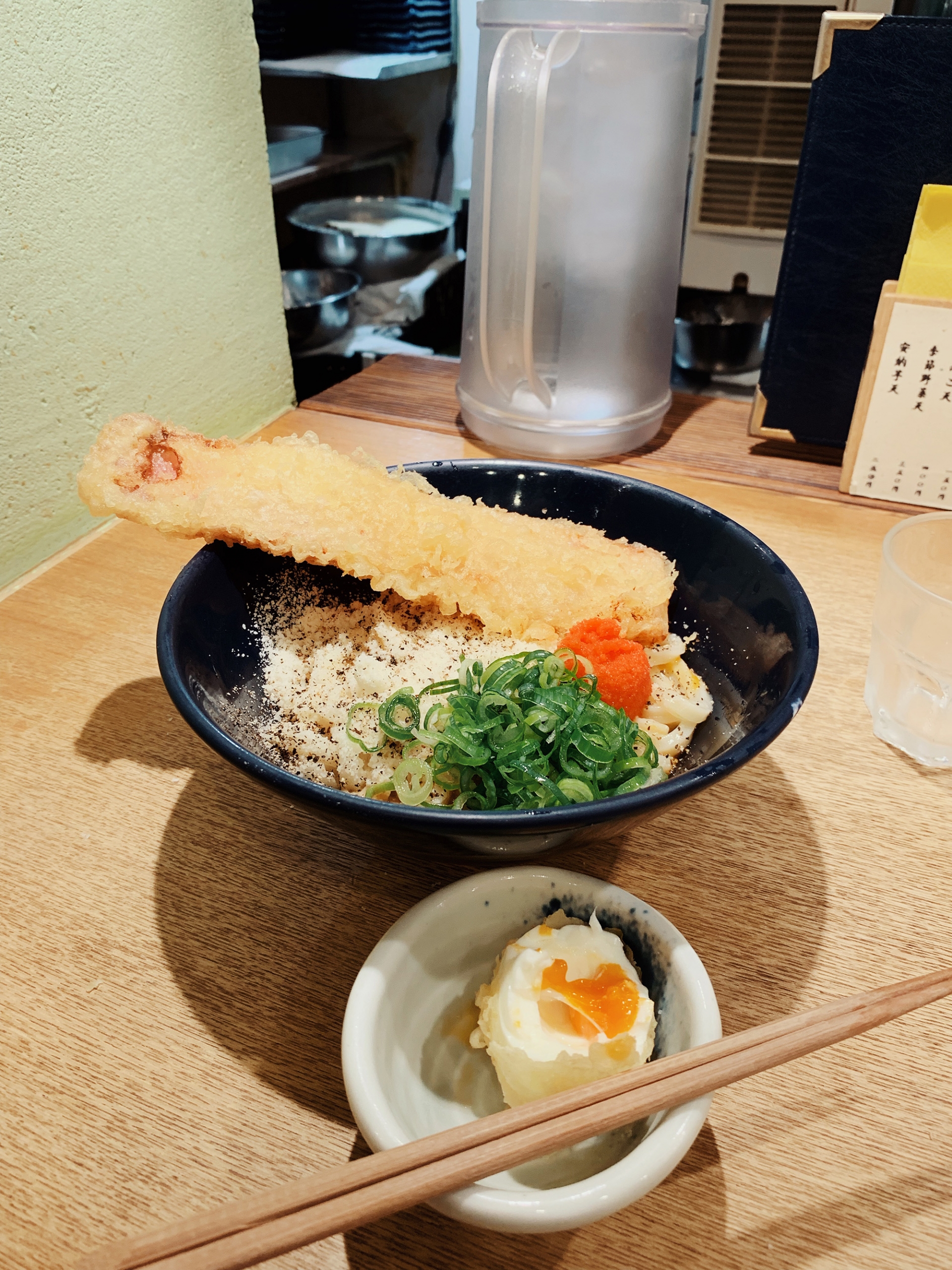
If you’re a carbonara lover, opt for the hot soy sauce udon with butter, pepper, slivers of scallions, a soft-boiled egg and bright orange seasoned cod roe that thickly coated the springy noodles with just the right amount of chew 😻🍜 Don’t forget to add some protein with a crispy slice of tempura bacon!
Robot Restaurant Show
Is the Robot Restaurant Show in Tokyo touristy? Sure, but it’s such a bizarrely unique spectacle that embodies the flip-side of Japan’s buttoned-up culture that it warranted inclusion into this 5-day Tokyo itinerary.
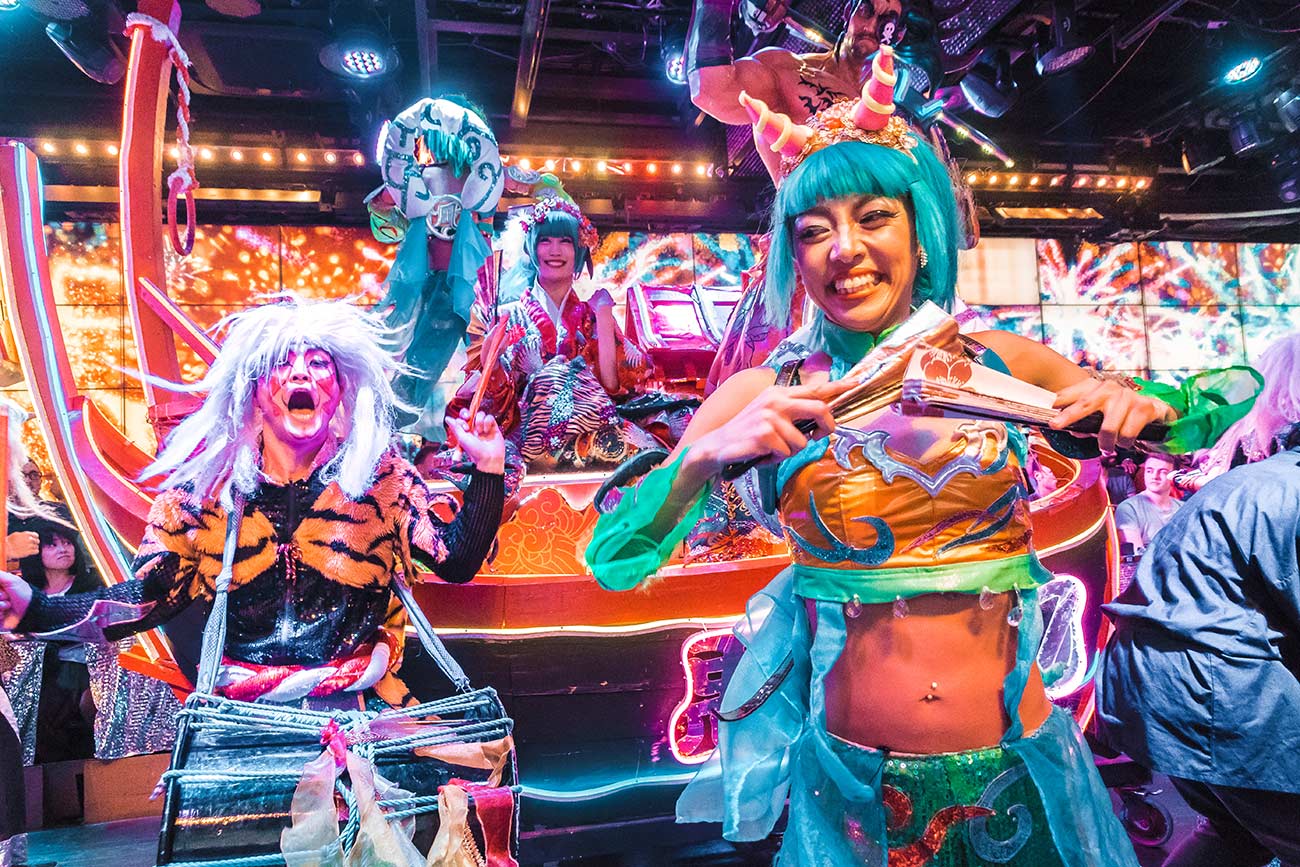
For a discount, buy tickets in advance to this 90-minute cabaret-style show. It’s divided into four acts of neon laser lights, dragons, ninjas, flash dancers and glittering robots that will have your head spinning and your ears ringing.
The pure energy of the performers and reverberating techno beats will have you dancing along with the rest of the audience until you’re ready to collapse.
Dinner in Shinjuku
When it comes to dining in one of Tokyo’s biggest and most vibrant neighbourhoods, you never know when you’ll stumble into one of the best restaurants in Shinjuku. There is something for every taste and budget…as long as you’re able to find it.
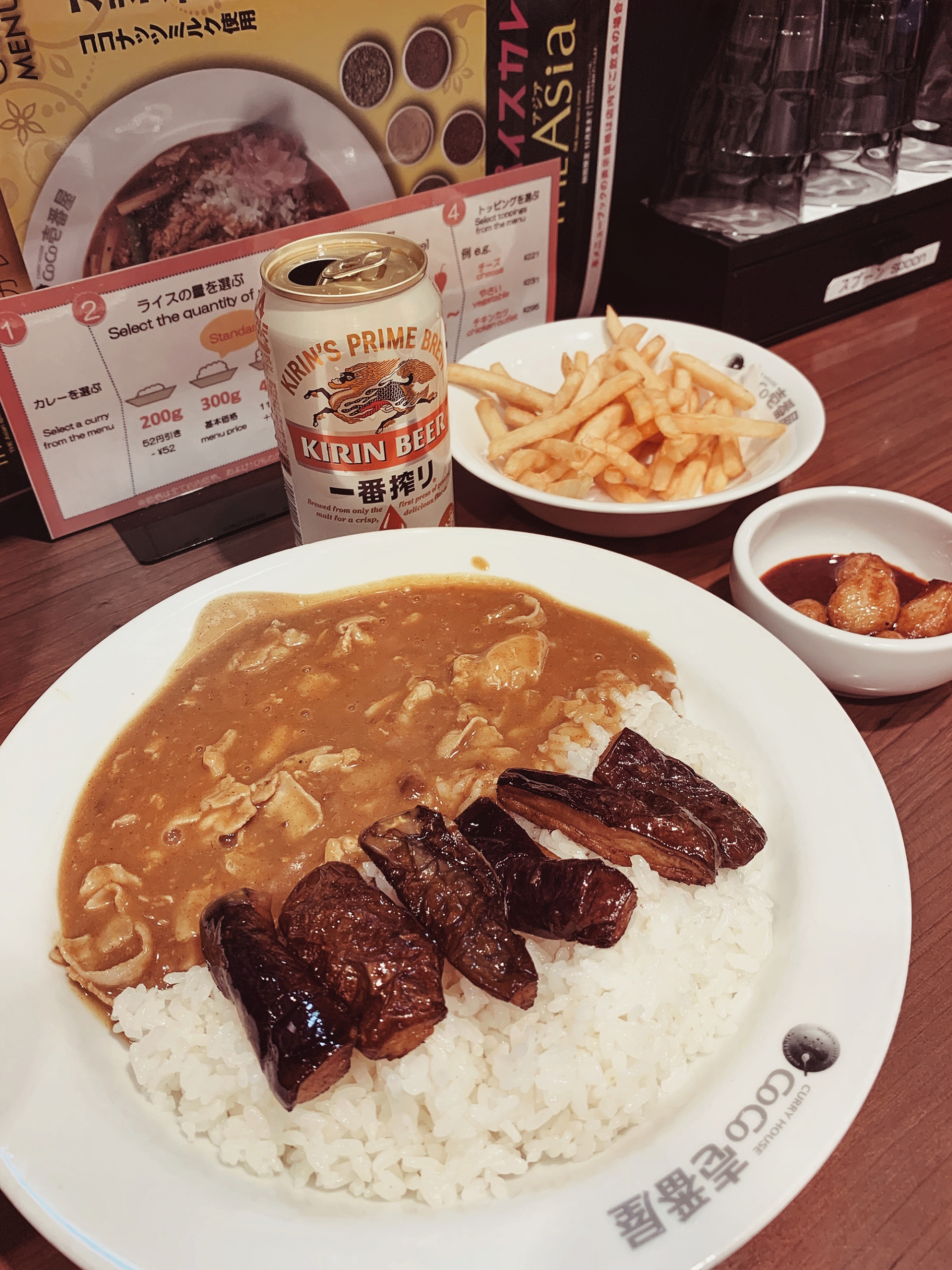
Where to eat in shinjuku
-
-
- Ban Ban Izakaya ($) – It doesn’t get more authentic than this yakitori izakaya. Descend down a steep flight of steps and emerge into a narrow room packed with locals, the air smoky from grills sizzling with juicy skewers of meat. Wash it all down with enormous mugs of Chuhai (short for “shochu highball”), a light (but deadly) mix of shochu, soda water and lemon.
- Curry House CoCo Ichibanya ($) – Sumptuous and bursting with flavour, the Japanese curry at this no-frills chain restaurant, located at the West entrance of Shinjuku Station, is 👌🏼👌🏼👌🏼 Tuck into a plate of hearty curry with thinly-sliced pork (or whatever strikes your fancy) and get fries on the side for dipping.
- Tatsuya Shinjuku ($) – An inconspicuous hole-in-the-wall specializing in comforting bowls of gyudon — rice topped with simmered beef and onion. Ideal if you’re craving a home-cooked meal at this point in your 5-day Tokyo itinerary.
- Piss Alley ($) – The name is super appealing, huh? Shouben Yokochou, also known as “Memory Lane” (or Omoide Yokocho), used to be a hotspot for shady dealings. The establishments didn’t have bathrooms back then so patrons would relieve themselves wherever they could, hence the name. This sliver of an alleyway is about 100m of sixty or so tiny eateries that can only accommodate a handful of people at a time. Make friends with your neighbour as you gobble down sizzling yakitori and wash it down with some sake.
-
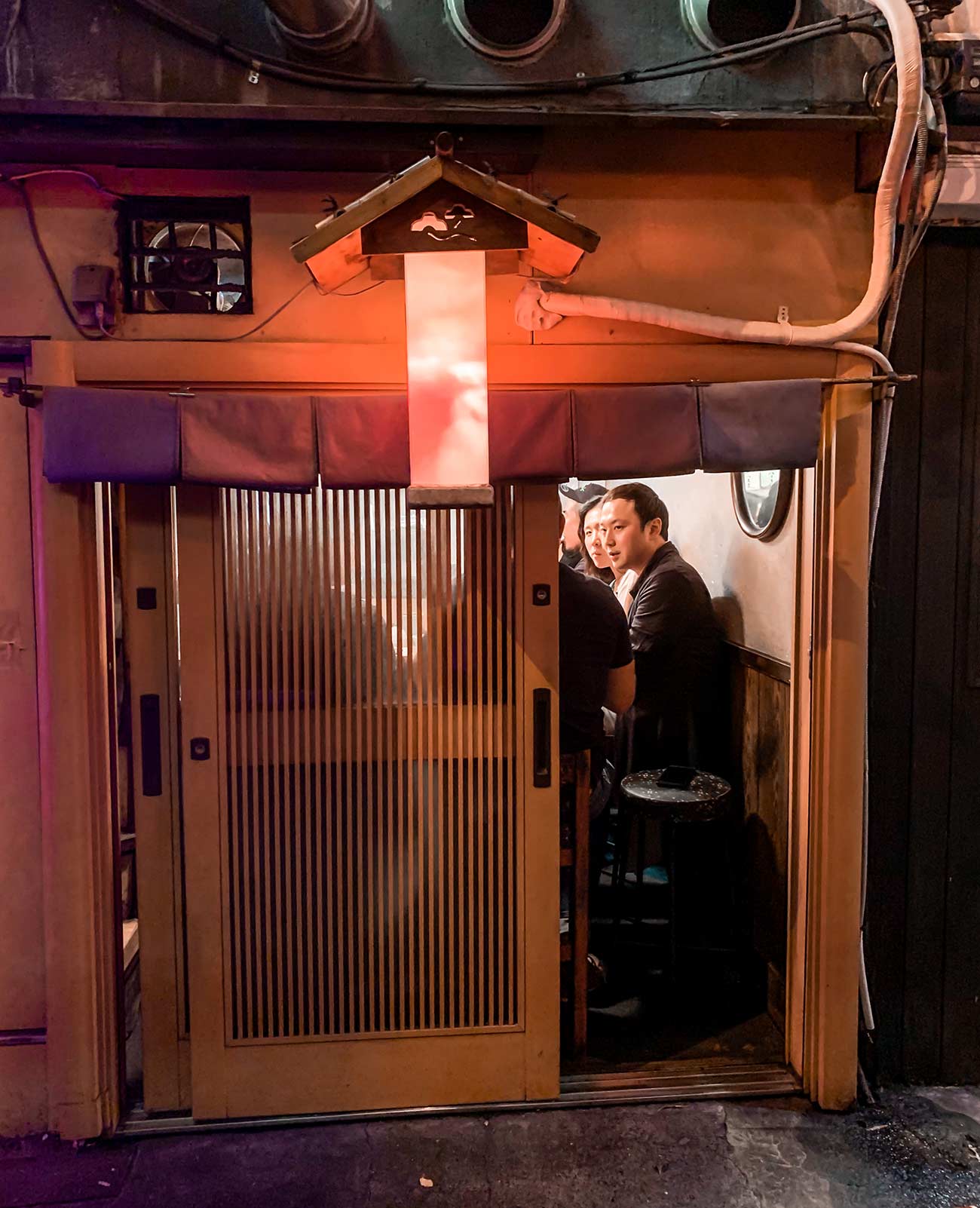
Tiny izakaya nestled ina Tokyo yokocho
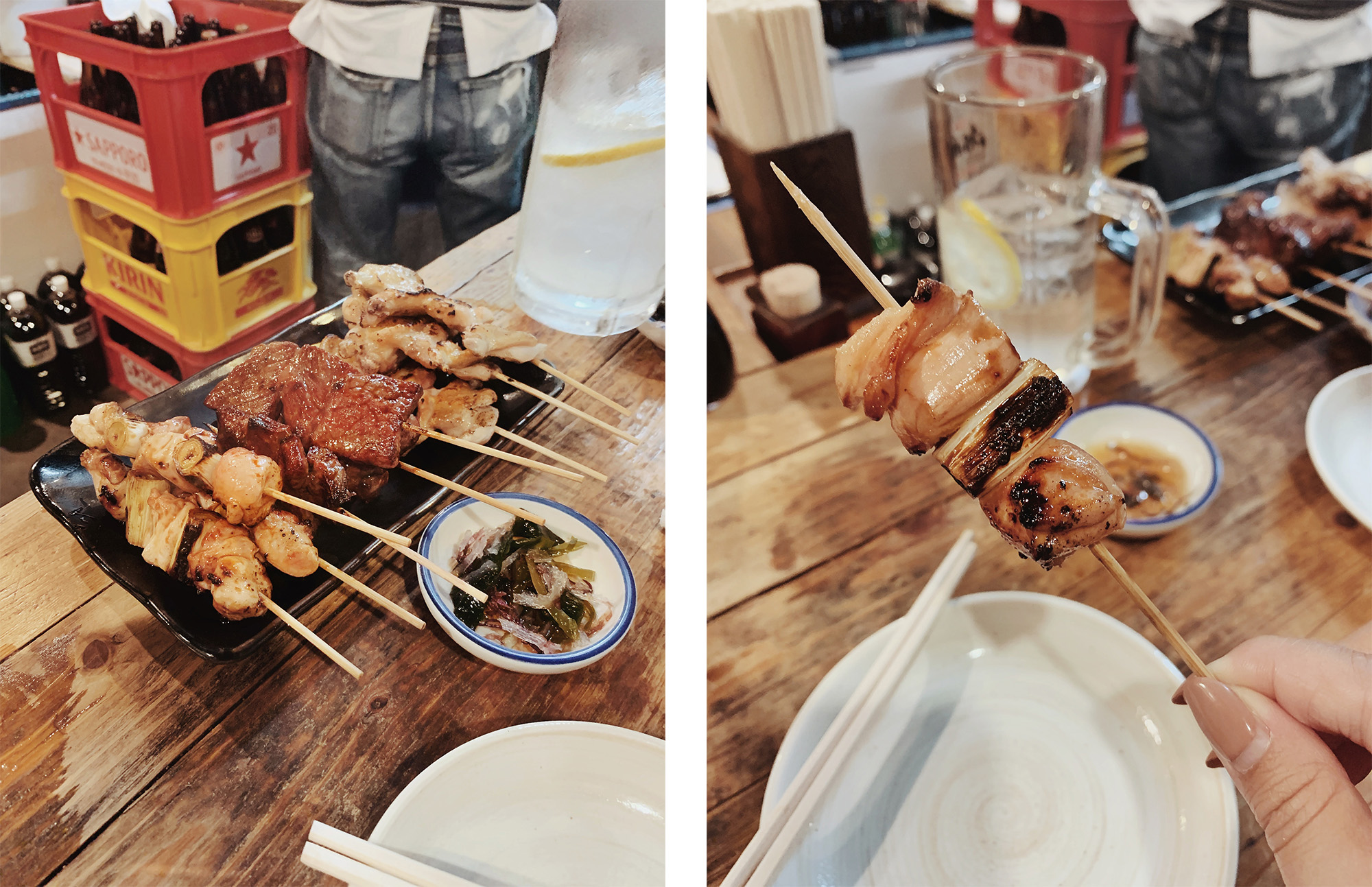
Yakitori from Ban Ban Izakaya in Shinjuku
Drinking in Golden Gai
Golden Gai district is a motley collection of over 200 ramshackle bars where you can glimpse remnants of Tokyo’s postwar nightlife crammed along six alleyways. A frequented watering hole for overworked salarymen, each venue has its own gimmick (vintage electronics, troll dolls, S&M…🤔).
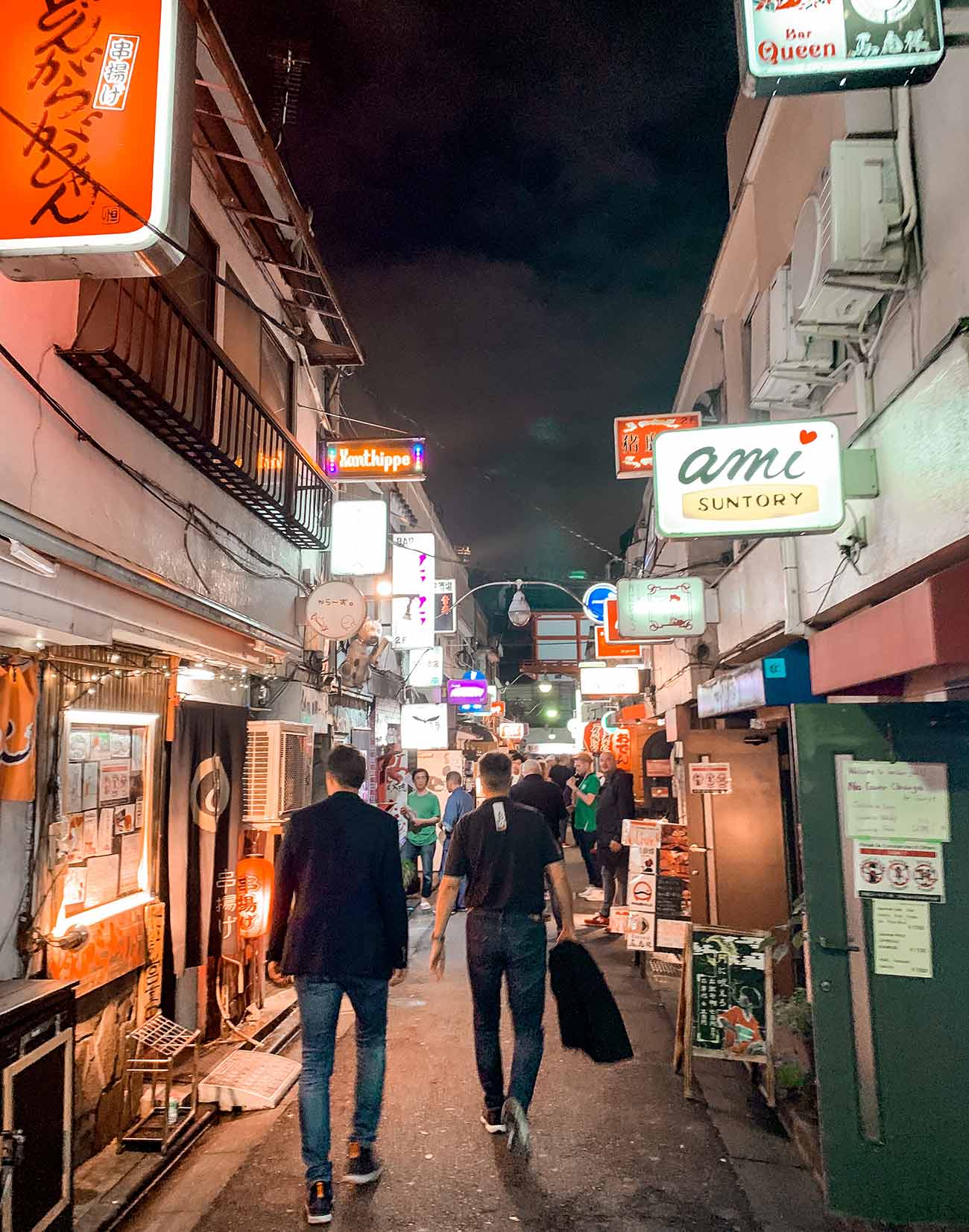
While many establishments only accept regulars, there are definitely some great gajin (foreigner) -friendly bars to be found.
bars in golden gai:
-
-
- Albatross – A 3-storey drinking den bedecked with chandeliers and mirrors with a magnificent rooftop view of Tokyo.
- Bar Darling – A female sanctuary amid male-dominated establishments, trimmed with fairy lights and offering over 100 types of drinks.
- Open Book – This cozy warren is like Narnia meets the library in Beauty and the Beast, with books lining the back wall, offering curry toast and fancy lemon sours made with house-made tinctures.
- Ishi No Hana – The oldest venue in Golden Gai, visit this Russian izakaya for their impressive and rare selection of vodka.
- Kenzo’s Bar – Leopard print wallpaper and seats, 80s music, and reasonably-priced drinks. Need I say more?
- Bar Asyl – Hidden gem (like, good luck finding it) offering exceptional homemade liquor, a killer Japanese whisky collection, and awesome music. Try the house-blended umeshu (plum wine) or the Sakura highball.
- Not Suspicious – This pocket-sized closet of a bar is a sight to see, plastered floor-to-ceiling in notes with scrawling advice, messages, and doodles left behind by visitors.
- Bitter Orange – You’ll be drawn to the orange glow of this chic spot like a moth to flame. Open till 5am for those night owls.
-
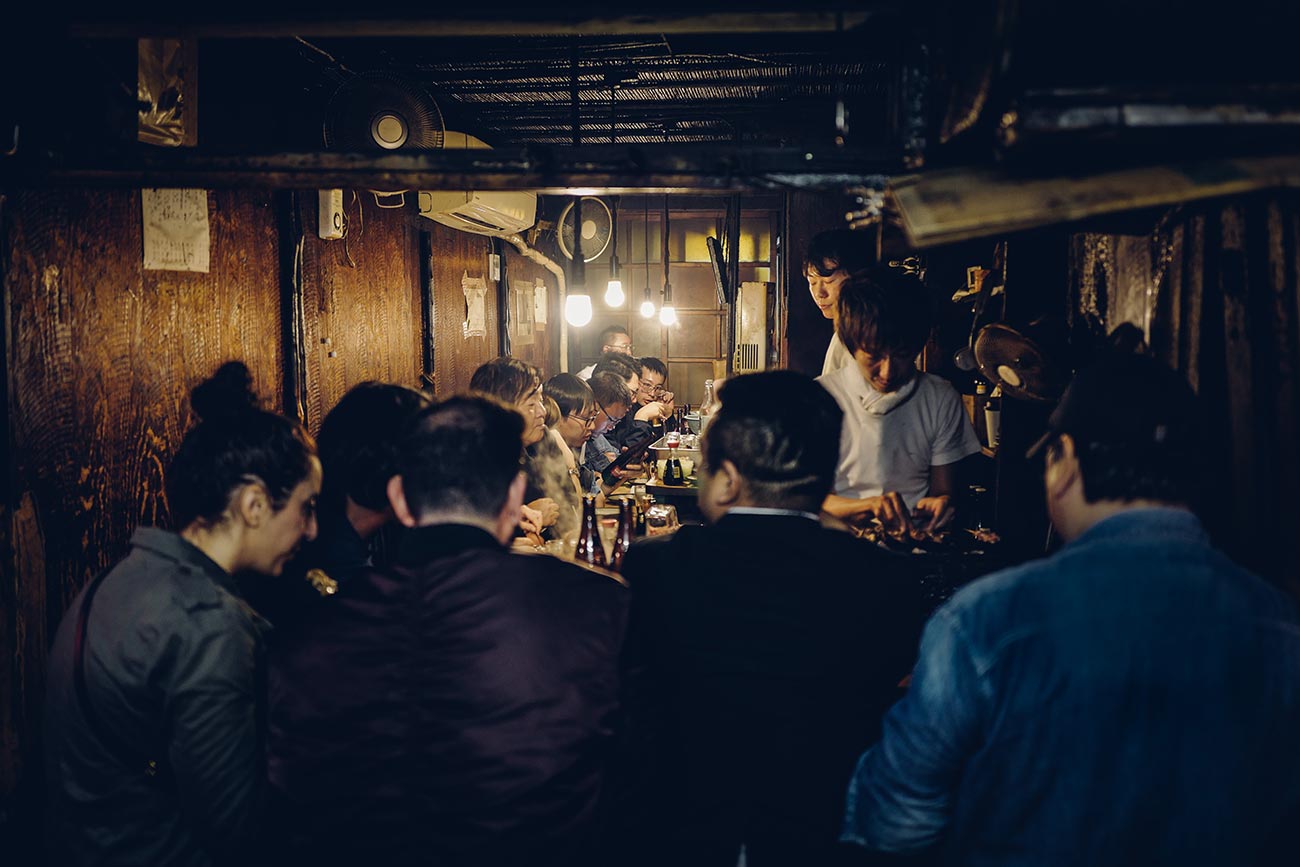
(Photo by Nat Kadlac via Unsplash)
If you’re nervous to navigate this area as a lone foreigner, put your mind at ease and your night in the hands of a local guide on a tour of Golden Gai’s izakayas and bars.
Fancy Cocktails in Shinjuku
For a more upscale drinking experience in Shinjuku, Ben Fiddich is considered one of the best bars in Tokyo. Situated on the ninth floor of an obscure building, you’ll be able to spot the well-dressed, well-coiffed owner and master mixologist a mile away.
View this post on Instagram
Part cocktail bar, part apothecary, Hiroyasu Kayama is like an alchemist crushing plants, herbs and spices with a mortar and pestle before your very eyes.
Day 4
Gyudon Breakfast
No matter what time my day starts, I must eat before I do anything or I’m guaranteed to be cranky-pants. Luckily Matsu-ya Ryogoku, part of a chain of gyudon restaurants, is open as early as 5am.
Gyudon, or beef donburi, is a traditional Japanese dish made of beef and onions simmered in a mildly sweet blend of daishi, soy sauce, and mirin.
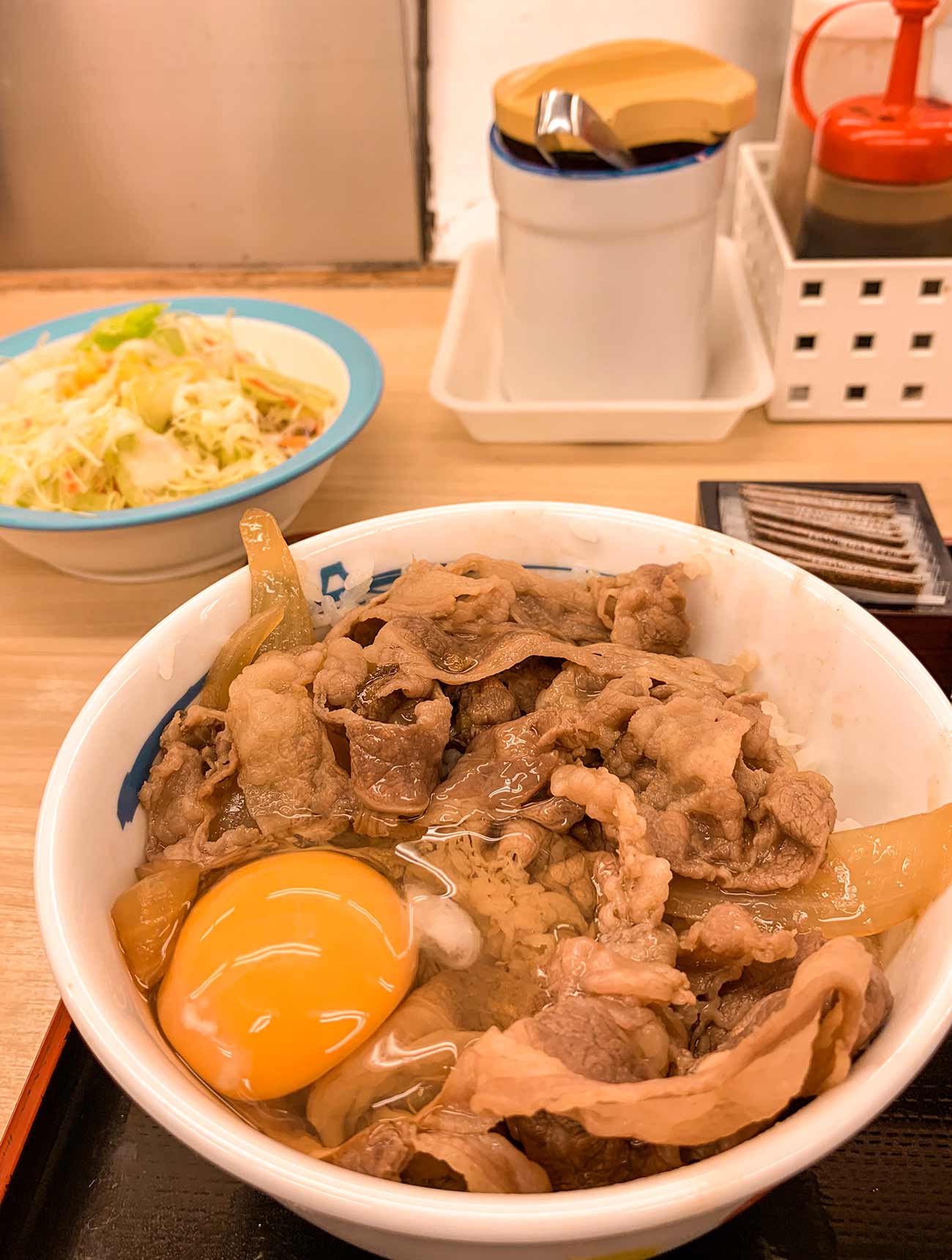
Punch your order into the ticket machine, pay, and grab your ticket before passing it to the waiter as you take a seat at the counter. Crack an egg over your steaming bowl of beef and rice before mixing and digging in.
Sumo Wrestling
Did you know that the national sport of Japan is sumo wrestling? It can be traced back to ancient times as a performance to entertain the Shinto deities and is rich with meaningful rituals that are still practiced today.
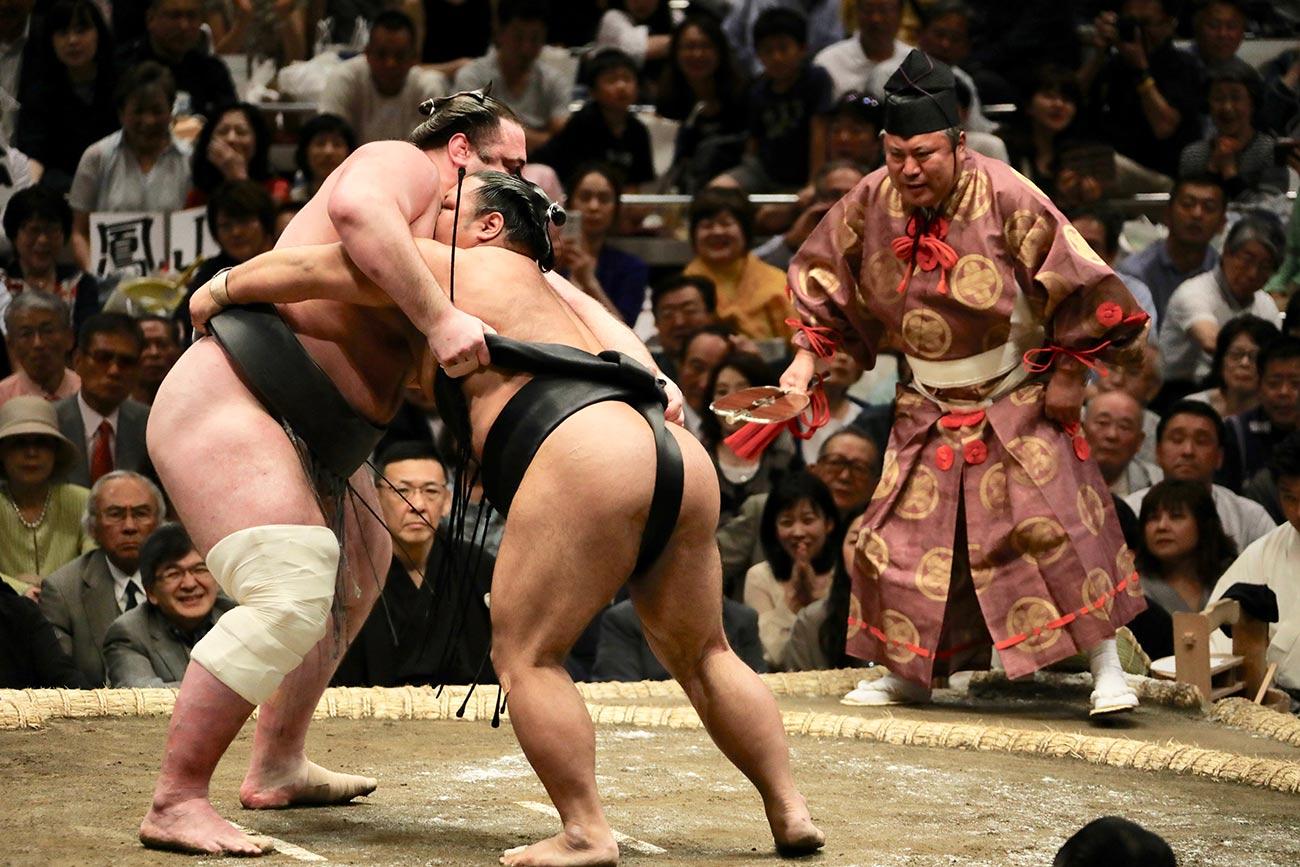
(Photo by Bob Fisher via Unsplash)
If your Tokyo itinerary happens to align with sumo wrestling tournaments, you’re in for heck of a show. Purchase tickets well in advance at official vendors, buysumotickets.com, or convenience stores. Opt for a 5-hour viewing tour of a sumo match for a taste of how wrestlers eat with a chanko hot pot or suriyaki meal.
If the match is already sold out, you may have some luck snagging a limited same-day balcony seat ticket at the stadium.
Outside of scheduled tournaments, you can experience sumo wrestling in Tokyo by attending a morning practice session.
Join a tour to a heya, or a “sumo stable,” in the Ryogoku neighbourhood to get up close and personal to these venerable athletes. A knowledgable guide will enlighten you about their development, from their rigorous training to their diet regimen.
Asakusa
Head north of Ryogoku to explore Asakusa in Tokyo, a district that has retained the charms of the city’s past. During the Edo period, neighbourhood was the hub of kabuki theatre and a large red light district.
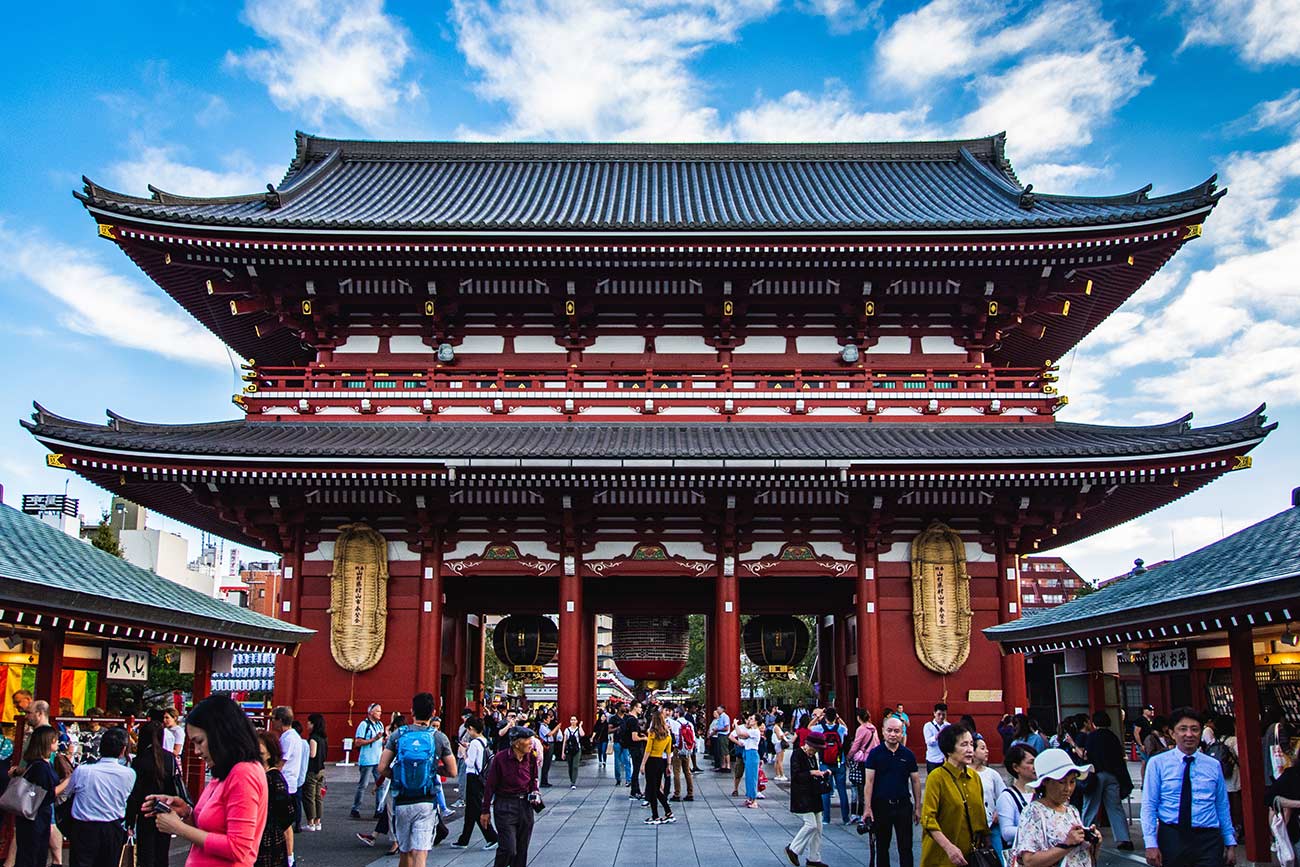
Senso-ji Temple in Asakusa (Photo by Nicholas Doherty via Unsplash)
Asakusa is easily explored by foot — solo or on a guided tour — or for a more personal (and less tiring) experience, opt for a private tour on a rickshaw.
What to see/do in asakusa:
-
-
- Senso-ji Temple – This is Tokyo’s oldest and most famous temple and is the biggest draw for tourists in the area. Start at the Kaminarimon Gate, guarded by the deities of wind and thunder/lightning. Proceed through the Nakamise Dori, or “inside street,” and peruse the shops for a souvenir. Alternatively, pick up a goshiuncho (red stamp notebook) and you can collect a vermillion stamp accompanied by calligraphy brushed by the temple priests at the main building .
- Kappabashi Street – Explore the various vendors in “Kitchen Town” for industry-grade wares at a fair price, from thin yet strong Japanese knives to cake moulds in the shape of Mt. Fuji. Don’t miss Ganso Sample for an up-close look at the painstakingly detail in fake food replicas. It may inspire you to squeeze a Japanese Replica Food Making class into your 5-day Tokyo itinerary.
-
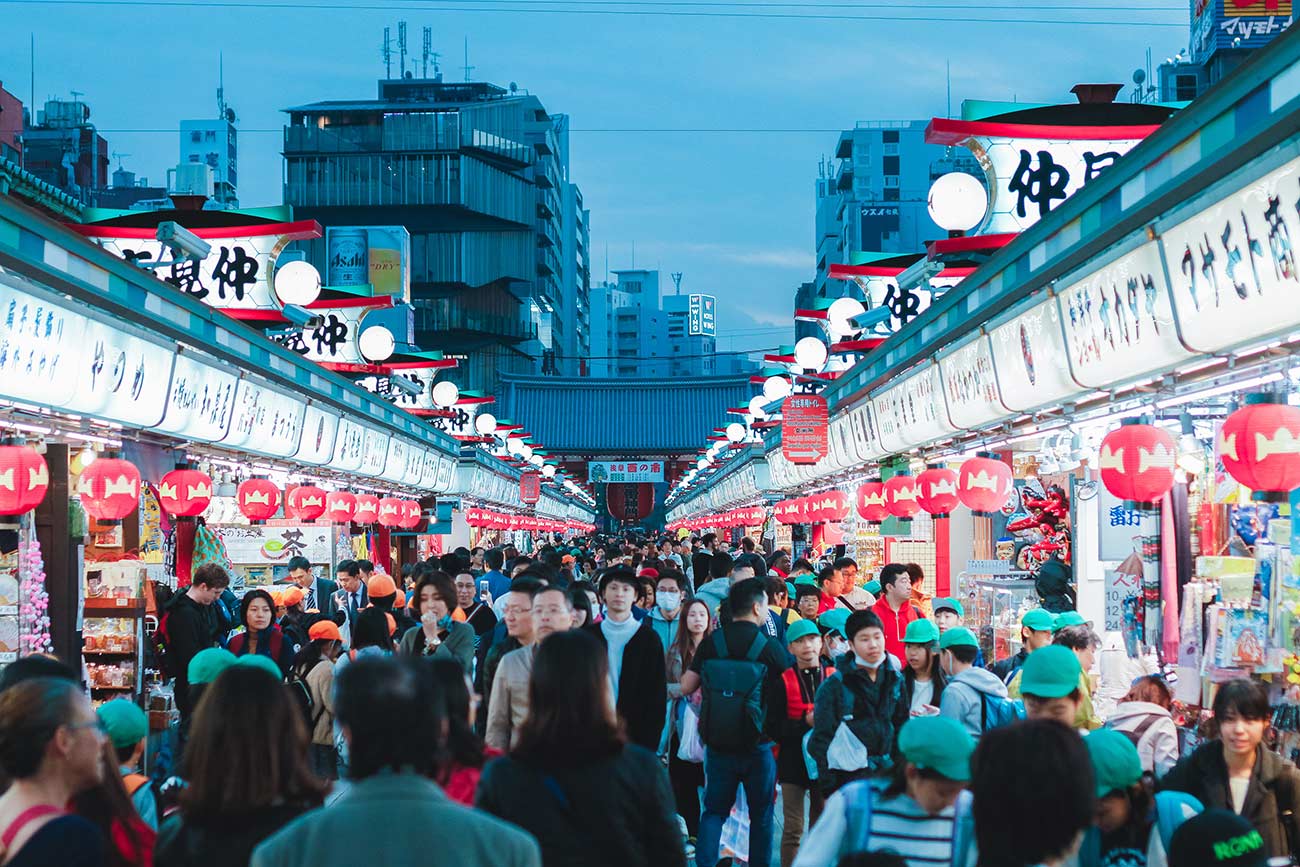
(Photo by Benjamin Wong via Unsplash)
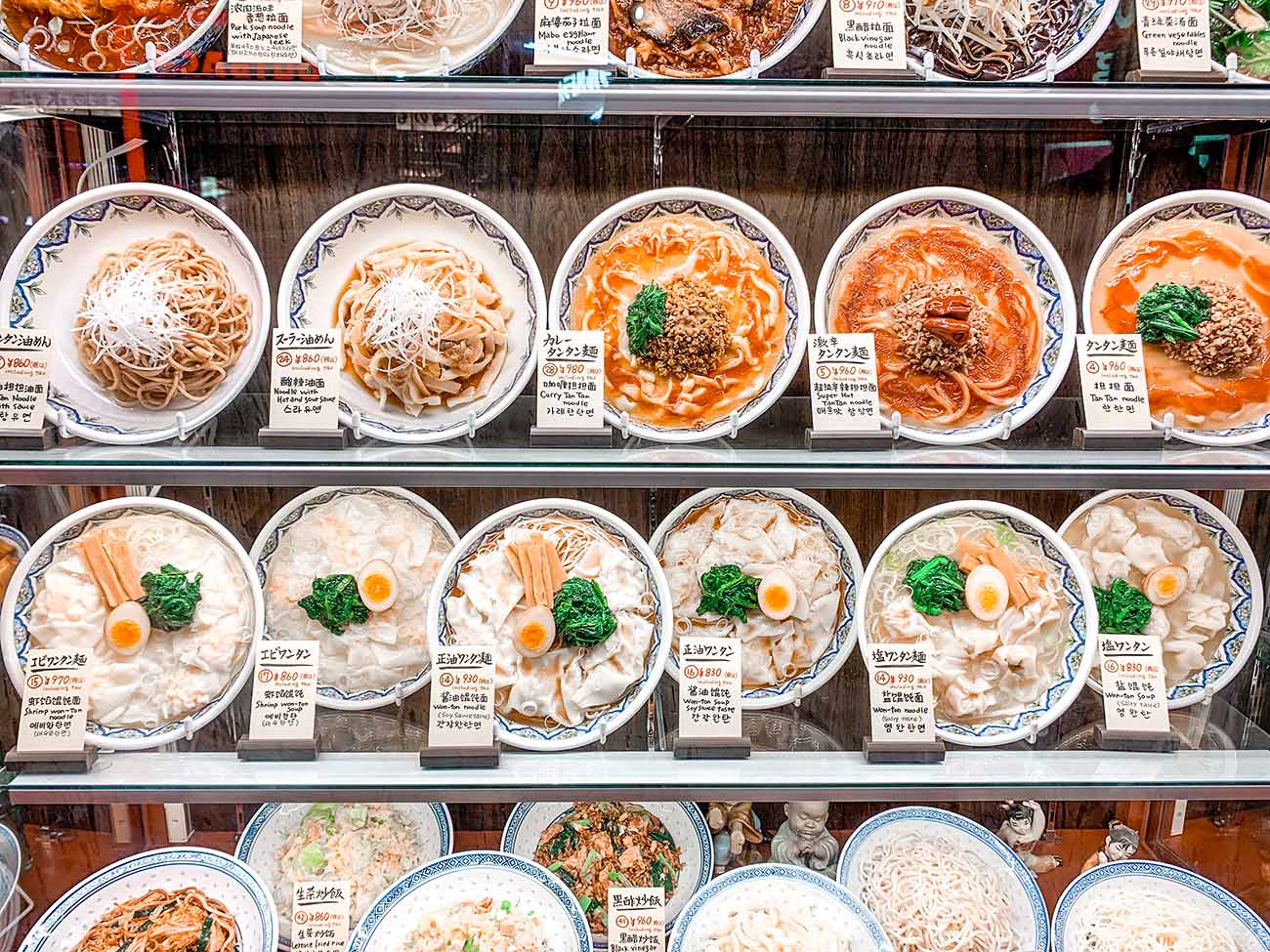
Detailed food replicas
Snack Time in Asakusa
If you’re like me you’ll probably be peckish after walking around Asakusa, so here are some options for where to grab a snack near Senso-ji Temple.
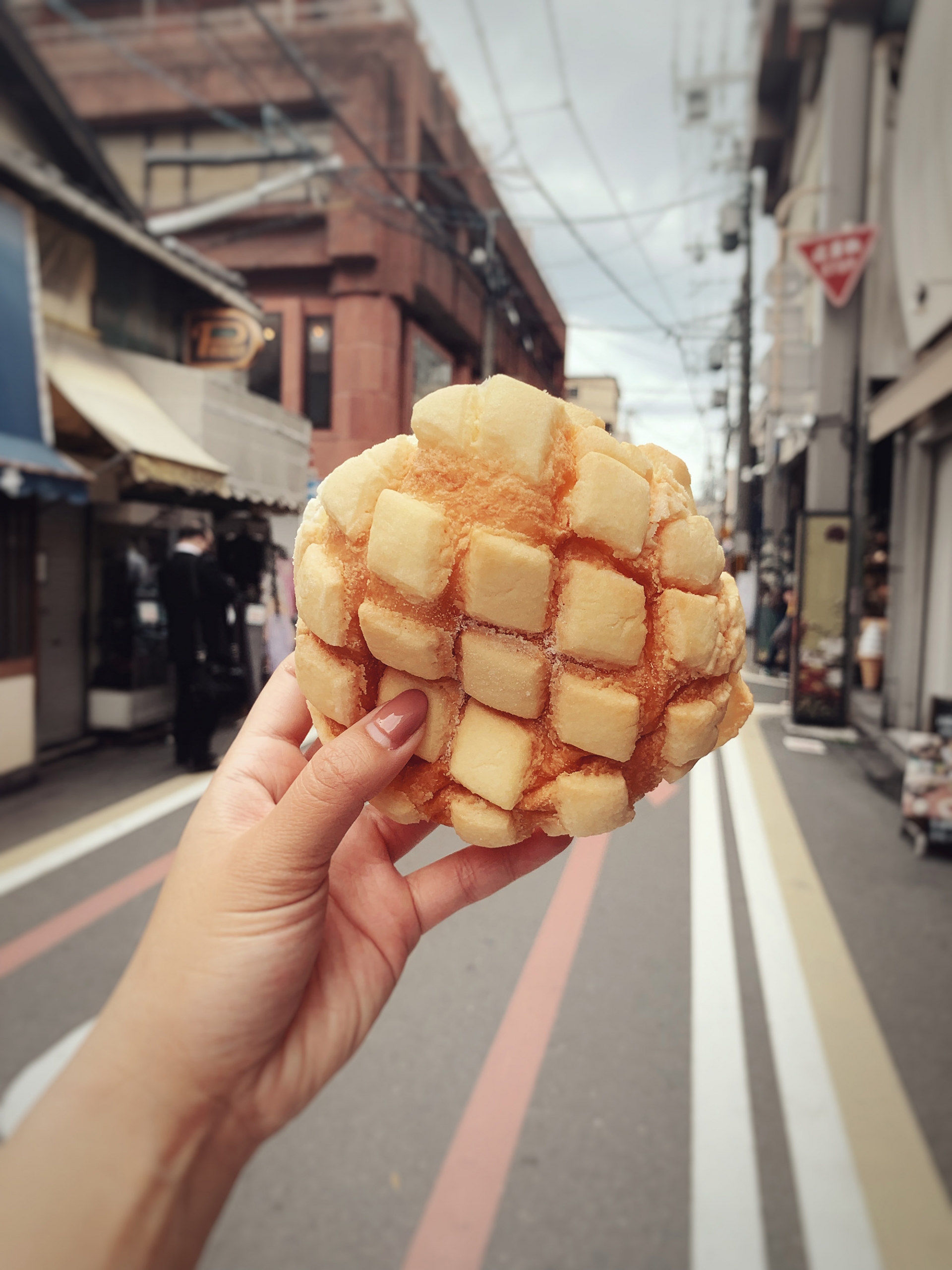
Fluffy, fresh melon pan!
where to eat in asakusa
-
-
- Asakusa Kagetsudō ($) – Lauded as one of the best spots to get melon pan in Tokyo since 1945. This tiny shop achieves the ideal balance of fluffy and crispy in this sweet bread made of milk and butter with a gridded crust that resembles a melon.
- Onigiri Yadoroku ($) – In the heart of Asakusa lies Tokyo’s oldest spot for onigiri, triangular Japanese rice balls wrapped in nori (seaweed). Founded in 1954, order tarako (pollack roe) or umeboshi (salted plum) onigiri and watch them prepare it fresh.
- Café Michikusa ($$) – This is a local favourite for their classic pancakes, drizzled with maple syrup (naturally) and piled with banana slices. If you’re looking to round out your meal, their tuna and salmon nigiri and tonkotsu ramen are also hits.
-
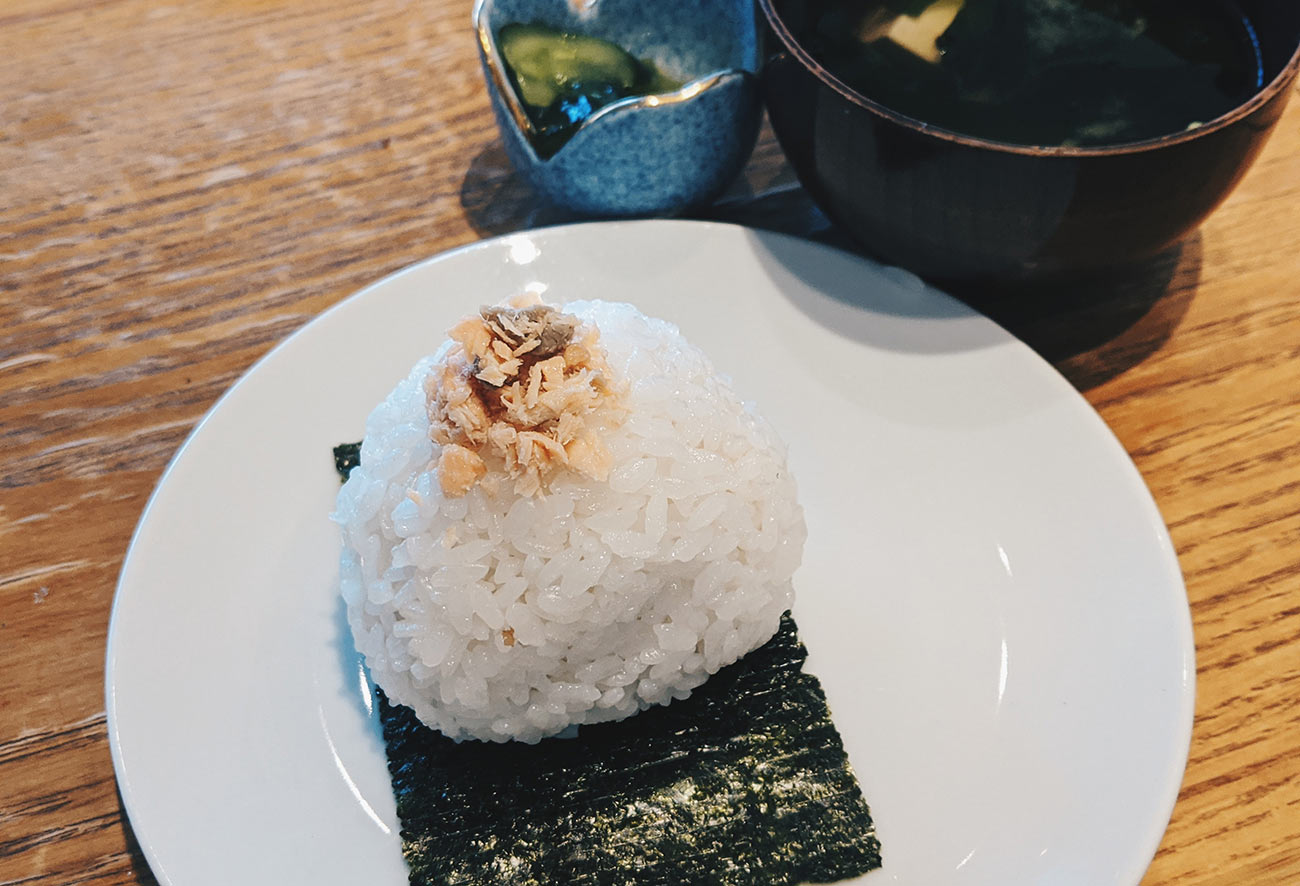
Akihabara
Since you’re in the area, work up an appetite for dinner by wandering Akihabara, fondly referred to as “Electric Town” for the mind-boggling abundance of multi-level electronic stores.
It is a veritable nirvana for anime devotees and the otaku-obsessed (individuals passionate about pop culture). Visit on a Sunday when the roads are barred from vehicles and pedestrians rule the streets.
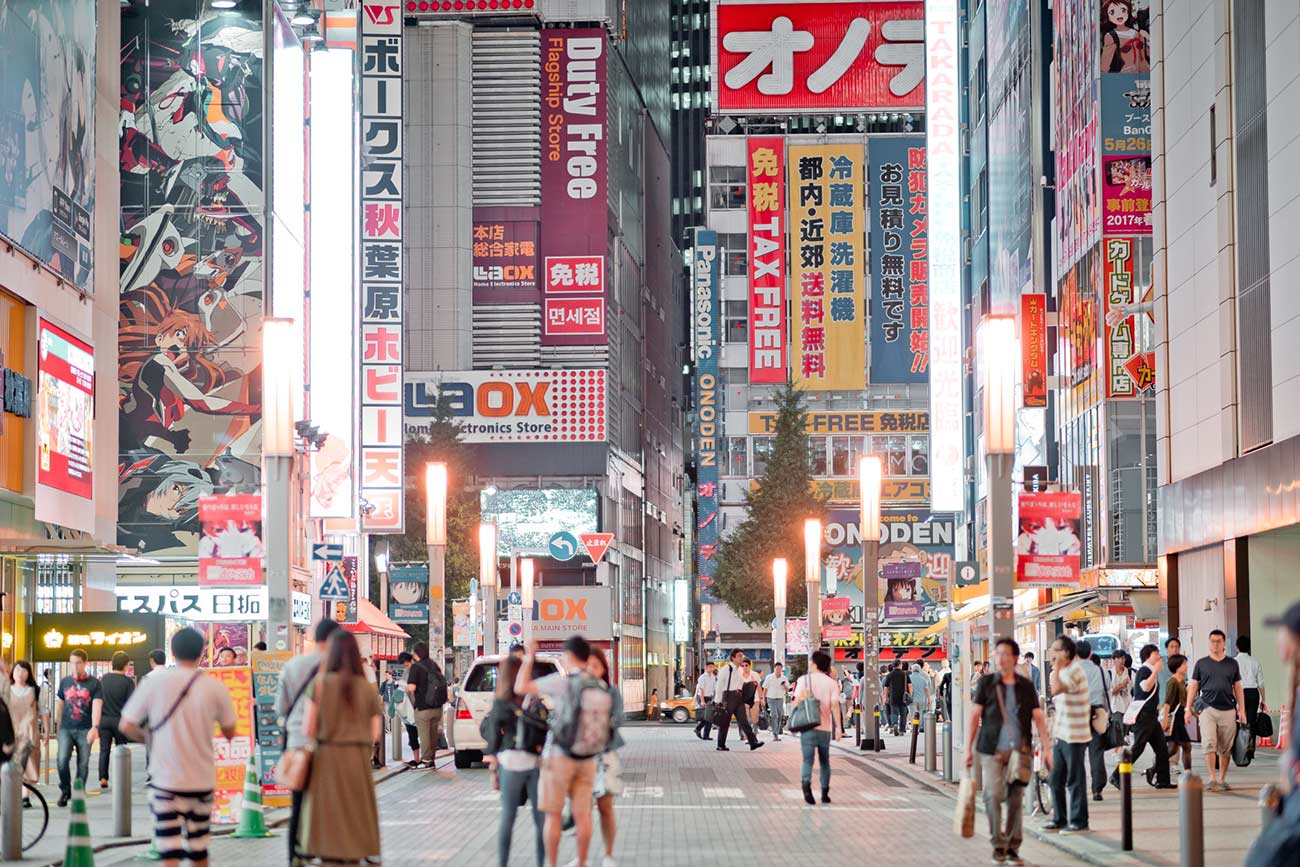
Things to do in akihabara:
-
-
-
SEGA Arcade – For ultimate gamer bliss, play the afternoon away at one of the Akihabara SEGA arcades, whether it’s anime and VR games or an old-school claw machine.
-
-
-
-
-
Gachapon Hall – Try your luck at this alley lined with gacha machines. A widespread phenomenon in Japan, gachapon are miniature, detailed toys that come in plastic capsules and distributed through these vending machines that will make for a fun keepsake of your time in Akihabara.
-
-
-
-
-
Yodobashi Camera – Did you even visit Akhibara if you didn’t at least browse the goods at the ward’s only electronic mega store? It’s your one-stop shop to give outdated tech a much-needed refresh.
-
-
-
-
-
Gundam Café – If you’re an uber-fan of this giant robot series, this themed café in Akihabara is where you belong. Geek out with fellow mecha anima enthusiasts while sipping a latte emblazoned with foam art with your favourite Gundam character.
-
-
Kaiseki Dinner in Akasaka
If you can’t manage to squeeze at least 3 days in Kyoto into your trip to Japan, at least you can get a taste of the ancient city. Kikunoi in Akasaka is a verdant oasis in the middle of a concrete jungle offering traditional kaiseki, the pinnacle of Japanese fine dining and culinary excellence.
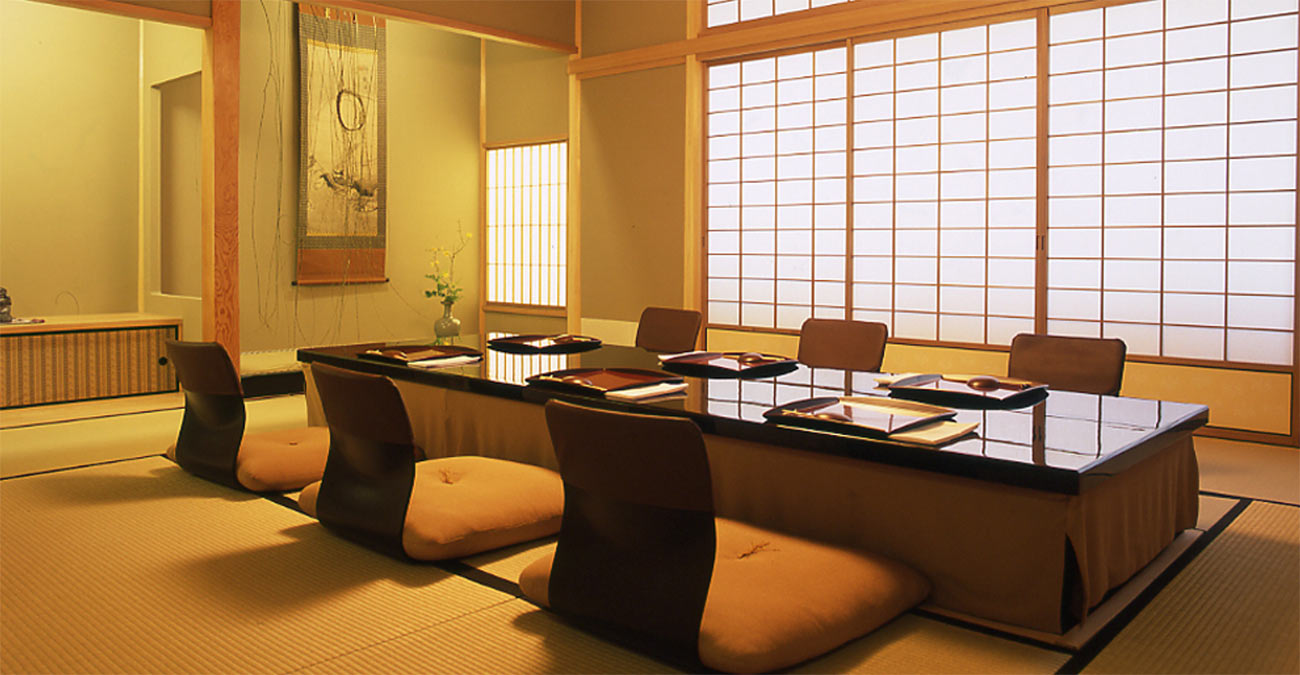
(Photo via Kikunoi Asakusa)
Each course throughout the set meal is distinguished by a different cooking method — boiled, grilled, steamed, deep fried, etc… — with regional or seasonal ingredients being featured according to the chef’s preference.
View this post on Instagram
Magic Bar Surprise
For a truly unique way to end the night, drop by Magic Bar Surprise for drink and a show. Tucked away on the eighth floor of a building crowded with restaurants, cheers with happy hour libations while being entertained with tricks and illusions by four in-house magicians.
Day 5
Breakfast of Totoro Cream Puffs
This is sure to be the most kawaii breakfast you’ll have during your entire 5-day Tokyo itinerary! Head to the quiet residential neighbourhood of Setagaya to the charming two-storey Shiro-Hige Cream Puff Factory that looks like a quaint cottage right out of a Ghibli film.
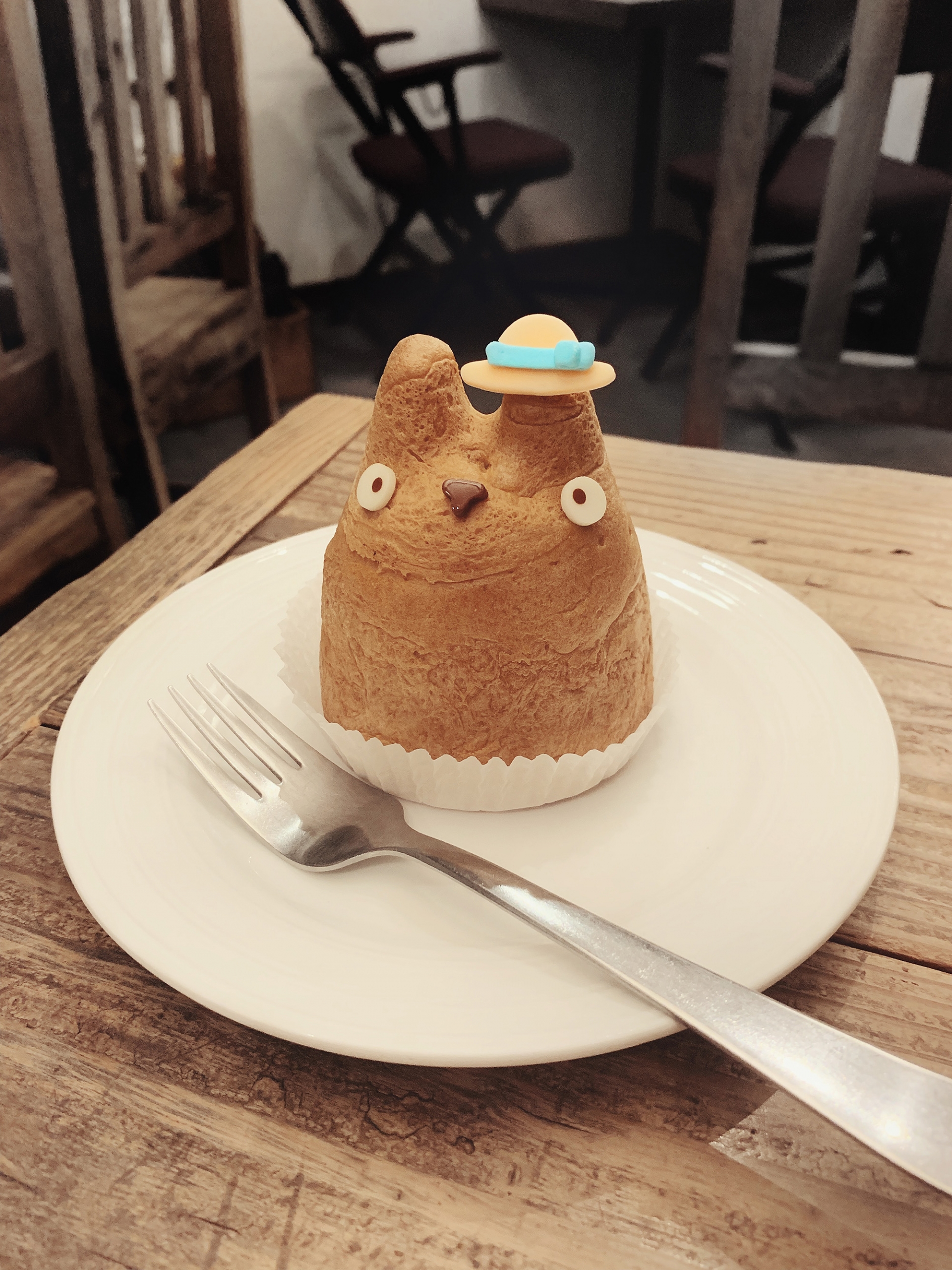
Select from rows of golden-crusted Totoro (a giant, rabbit-like spirit creature in the adorable film “My Neighbour Totoro”) pastries topped with adorable fondant accoutrements — a hat, leaf or blossom — signify their filling of light custard or cream in seasonal flavours like chocolate, strawberry and mango.
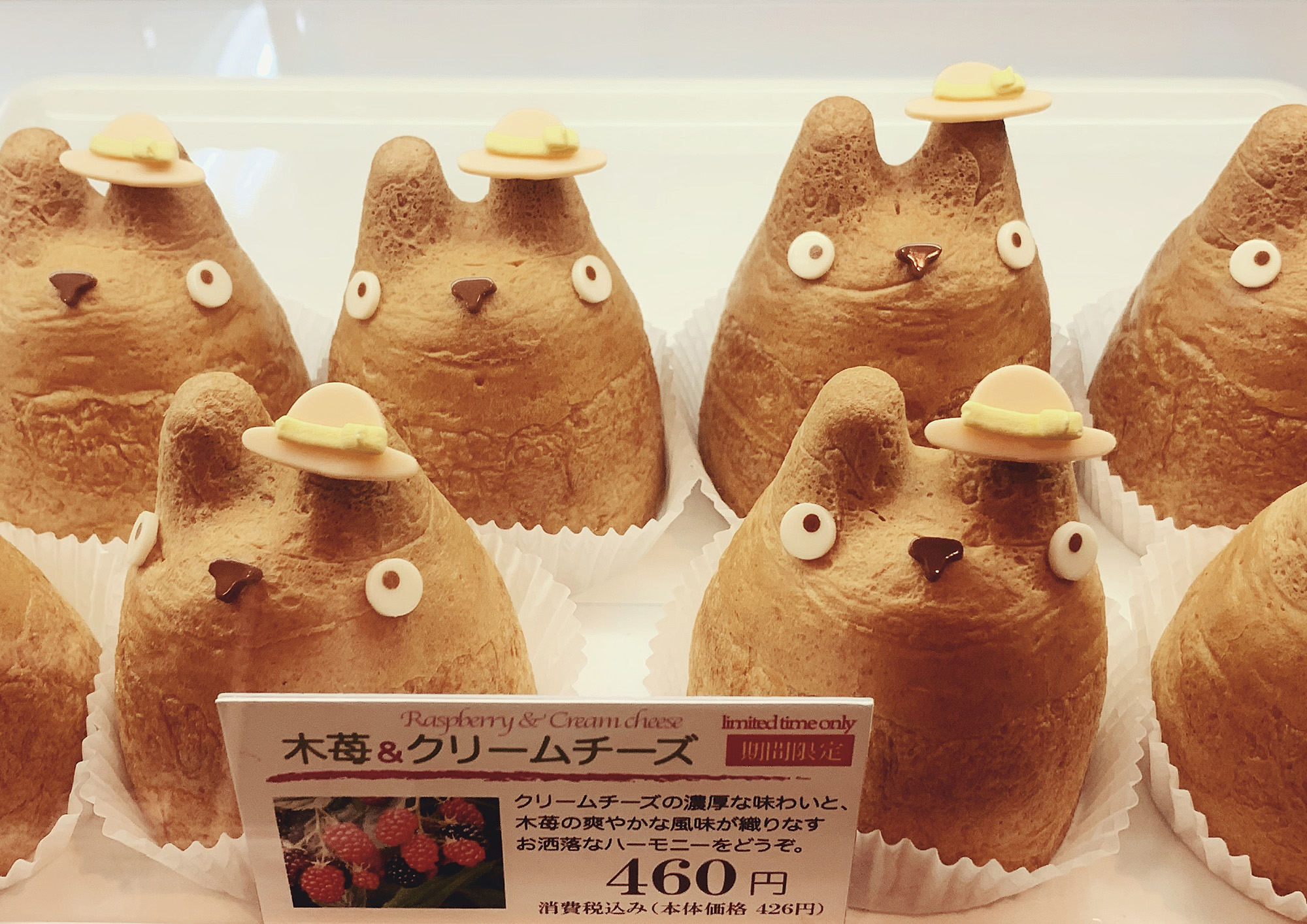
When I was there, I witnessed a chick steadily mow her way through a litter of Totoro cream puffs — one after the other. It was a disturbing sight. Once you get past those little fondant eyes gazing up beseechingly at you and take a bite, you’ll discover how delicious and light as a cloud these fluffy delights are.
Gōtokuji Temple
For an extra serving of kawaii, head to Gōtokuji Temple, Tokyo’s “Lucky Cat” Temple. According to legend, a 17th century lord escaped a turbulent thunderstorm after being beckoned into the Buddhist temple by a cat. Since then, the temple was re-named and dedicated to the welcoming feline.
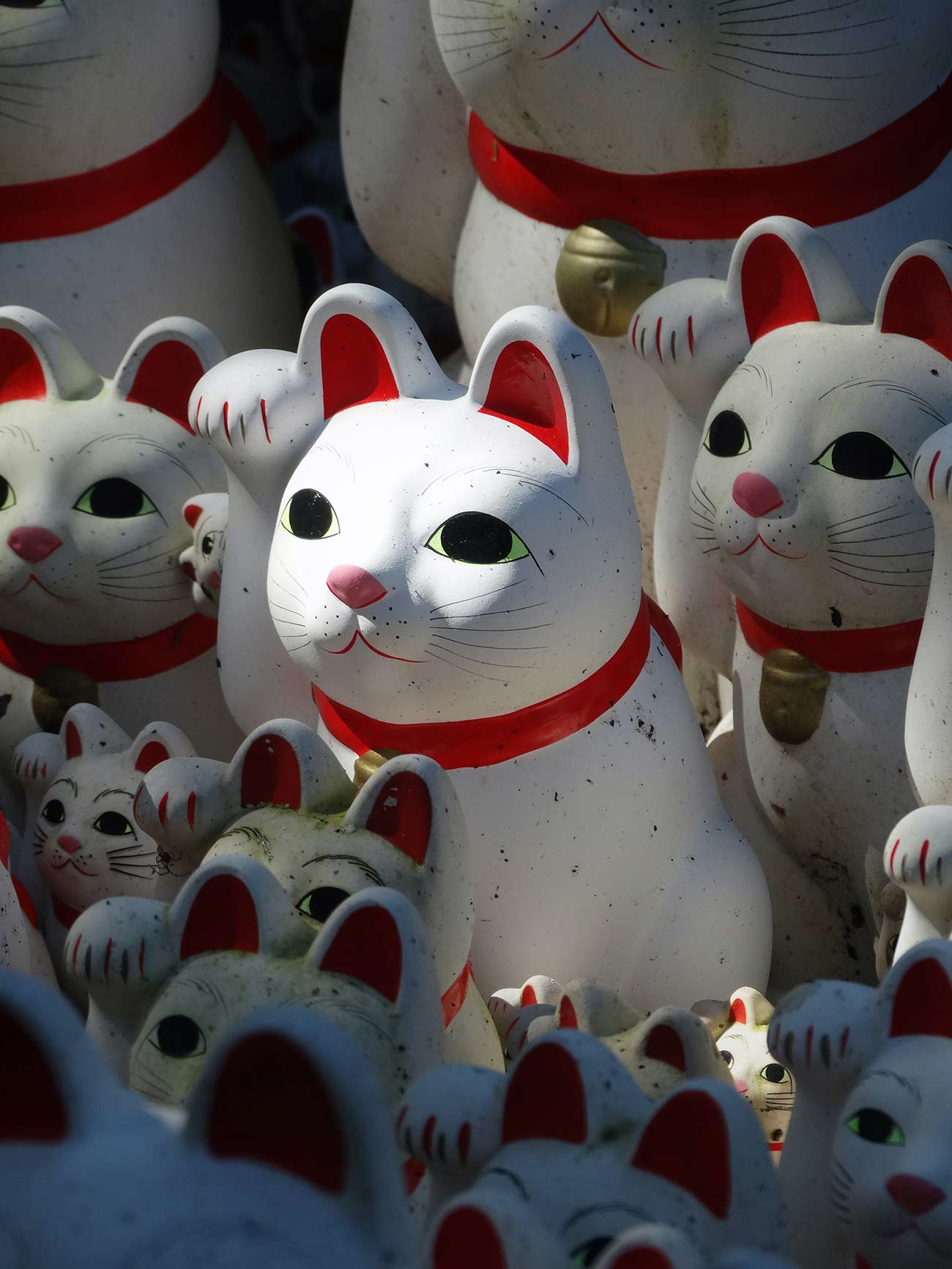
(Photo by Melvina Mak via Unsplash)
It’s also the origin spot of the right-pawed maneki-neko, or “luck-inviting cat figurine.”
Before you leave, pull an omikuji (Japanese fortune) inside the temple. If it’s a portends misfortune, tie it to a nearby tree to leave your bad luck behind.
Go-Kart Tour of Tokyo
Obsessed with playing Mario Kart? Why not try the real thing on this unforgettable guided Go-Kart Tour of Tokyo! Hop into a onesie costume fo your favourite video game character and zoom through the streets of Tokyo for a unique sight-seeing tour of the city’s iconic landmarks and neighbourhoods.
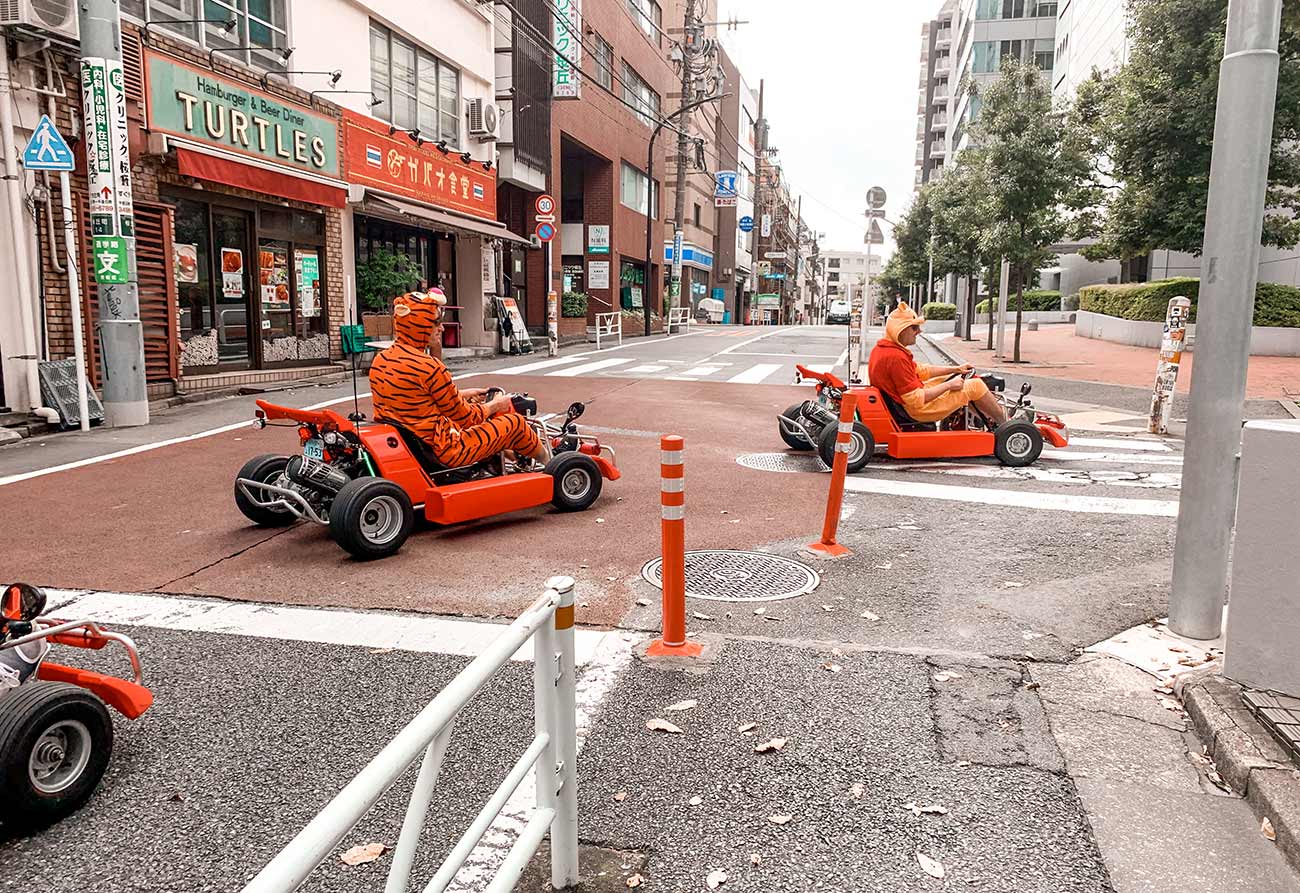
Choose your course length — short (35 minutes) or long (90 minutes) and bring a valid license before you head out from the meeting spot in Akhibara!
This unique activity should make it into your 5-day Tokyo itinerary if only because it falls into the category of “things you do in the place you’re supposed to do it.”
Roppongi
This foreigner-friendly district in Tokyo is known for its high-spirited nightlife but it’s also been developing a reputation for being a cultural hub. Japan’s largest art museum, the National Art Center, the Mori Art Museum in Roppongi Hills, and the Suntory Museum of Art in Midtown form a trifecta of art known as “Art Triangle Roppongi”.
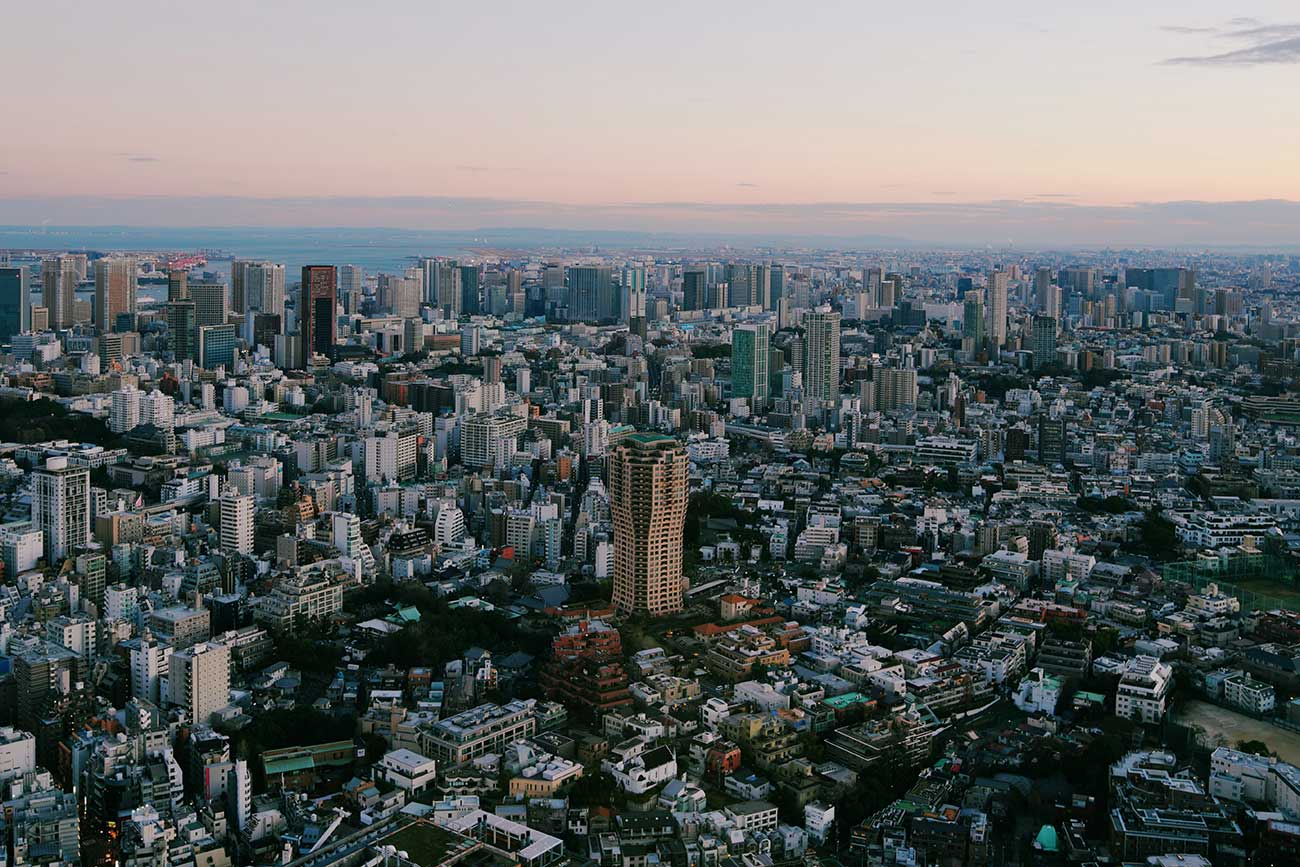
(Photo by Jesse Chan via Unsplash)
Get your fill of beauty and refinement in the area before participating in my favourite past-time — eating!
Lunch in Roppongi
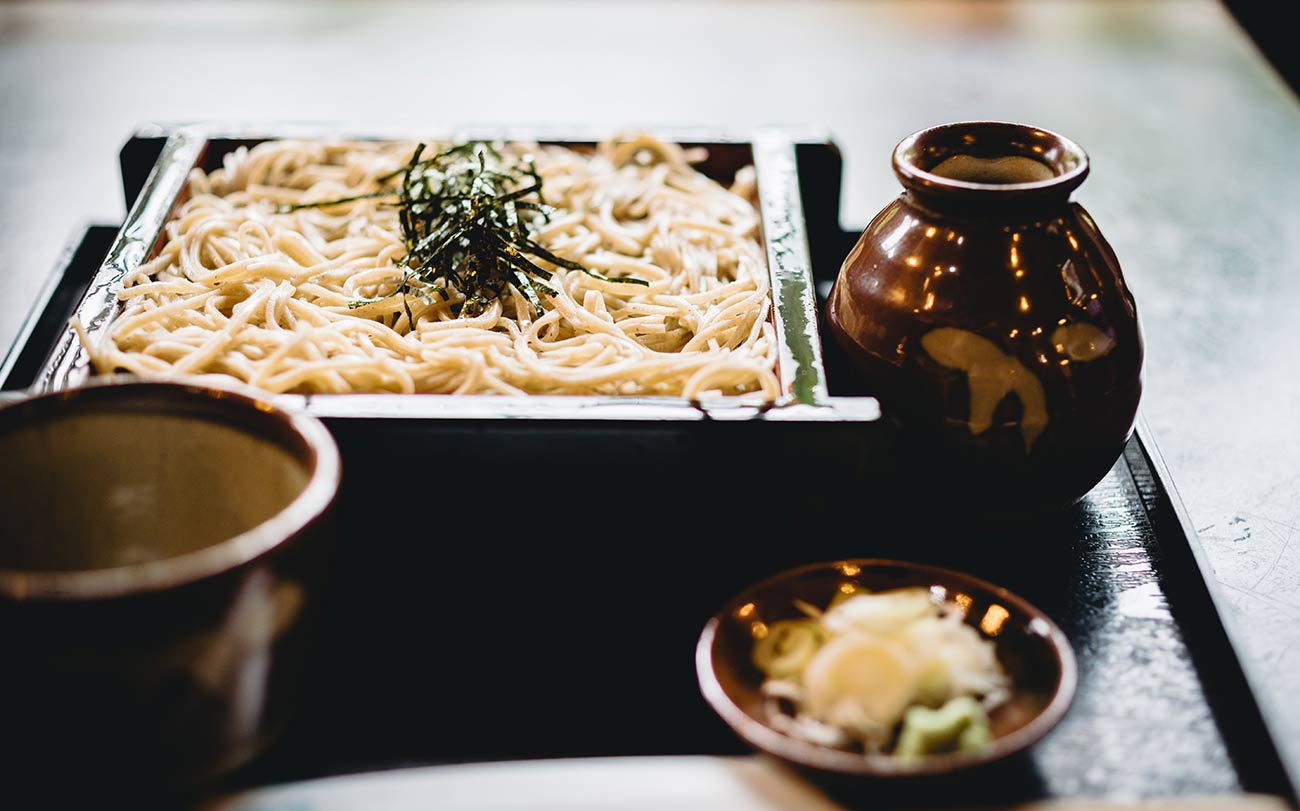
(Photo by Masaaki Komori via Unsplash)
Where to Eat in Roppongi
-
-
- Honmura An ($$$) – This light and airy soba eatery is known for their handmade buckwheat noodles — served hot or cold — that is super fresh and flavoursome with the ideal chewy texture. Either you love uni (sea urchin) or you don’t. If you do, indulge in their uni soba. If it’s not your thing, the cold dip soba is one of the most popular menu items.
- Sushi Saito ($$$$) – For sushi worthy of three (count ’em, ⭐️⭐️⭐️) Michelin stars, indulge in what will probably be some of the best sushi of your life at this revered establishment. Leave the decision-making to world-renown Saito-san and opt for the omakase experience.
- Unagidokoro Kurocyodo ($$$) – Treat yourself to a luscious lacquerware box of rice blanketed with premium Kurocyodo unagi (eel), charcoal-grilled to smoky magnificence. Not for the squeamish!
-
Sunset At Tokyo Tower
Head for higher ground and a bird’s eye view of Japan’s capital, just in time to catch the sunset from the observation deck at Tokyo Tower.
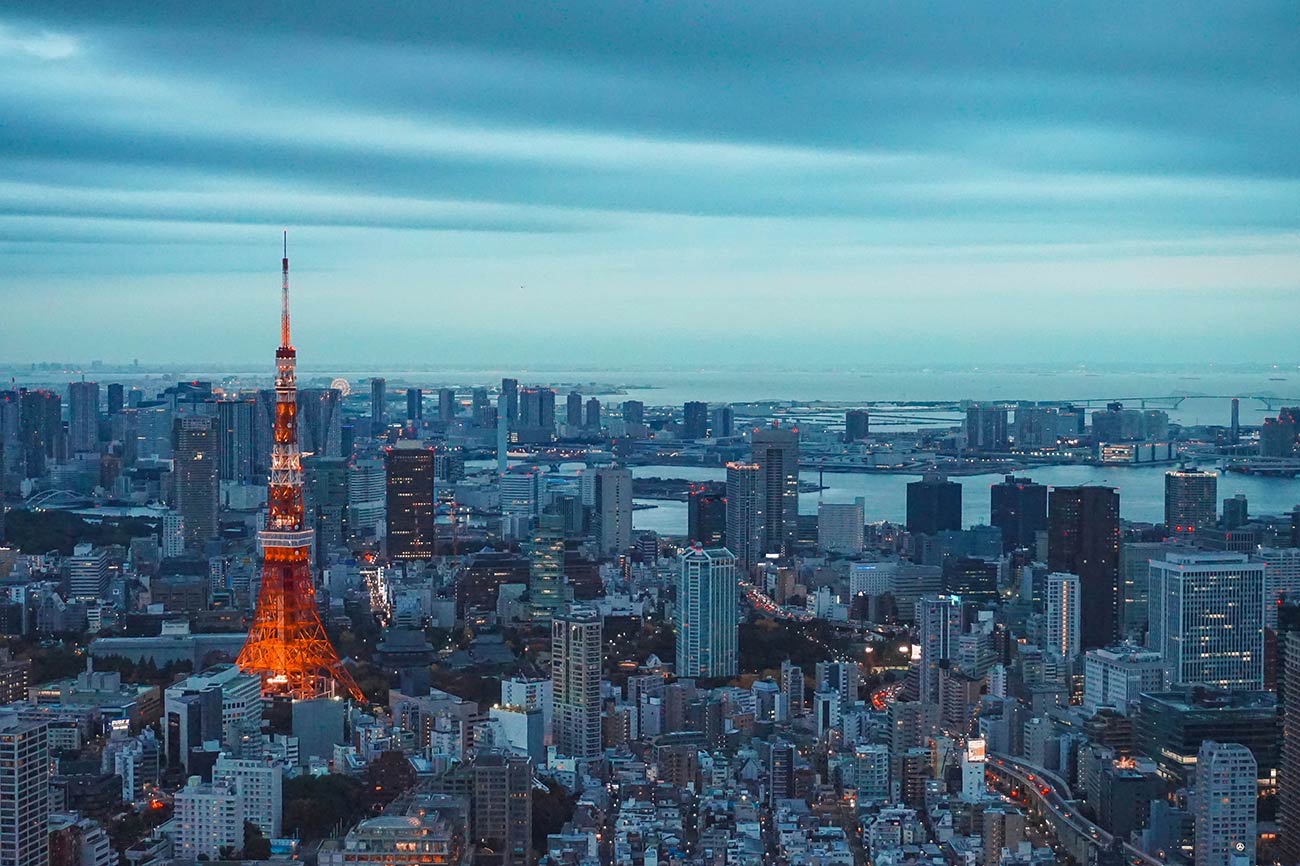
(Photo by Louie Martinez via Unsplash)
Even taller than the Eiffel tower, it stands at 333 meters high as an emblem of Japan’s post-war re-emergence as an economic power.
Purchase an entry ticket to the main observatory for a glorious cityscape panorama. If it’s a clear day, you might glimpse Mt. Fuji!
Cocktail Omakase
Forget the headache of decision-making at Gen Yamamoto and enjoy a leisurely drinking experience. This intimate venue has one bartender, eight seats, and three menu options (four, six, or seven drinks) for omakase (chef’s choice) with cocktails that reflects the four seasons.
View this post on Instagram
The concoctions are crafted from the freshest seasonal ingredients — locally-sourced fruits and herbs — poured into delicate glassware and garnished with a single bloom.
Call to make a reservation at least a week in advance to avoid missing out!
Day Trips From Tokyo
Now that we’ve planned out your 5-day Tokyo itinerary, it’s time to focus on nearby day trips. There are an abundance of wondrous areas to visit that will serve as a much-needed respite from the hustle and bustle of Japan’s thriving capital and they’re all easily accessible via JR Rail or on various tours.
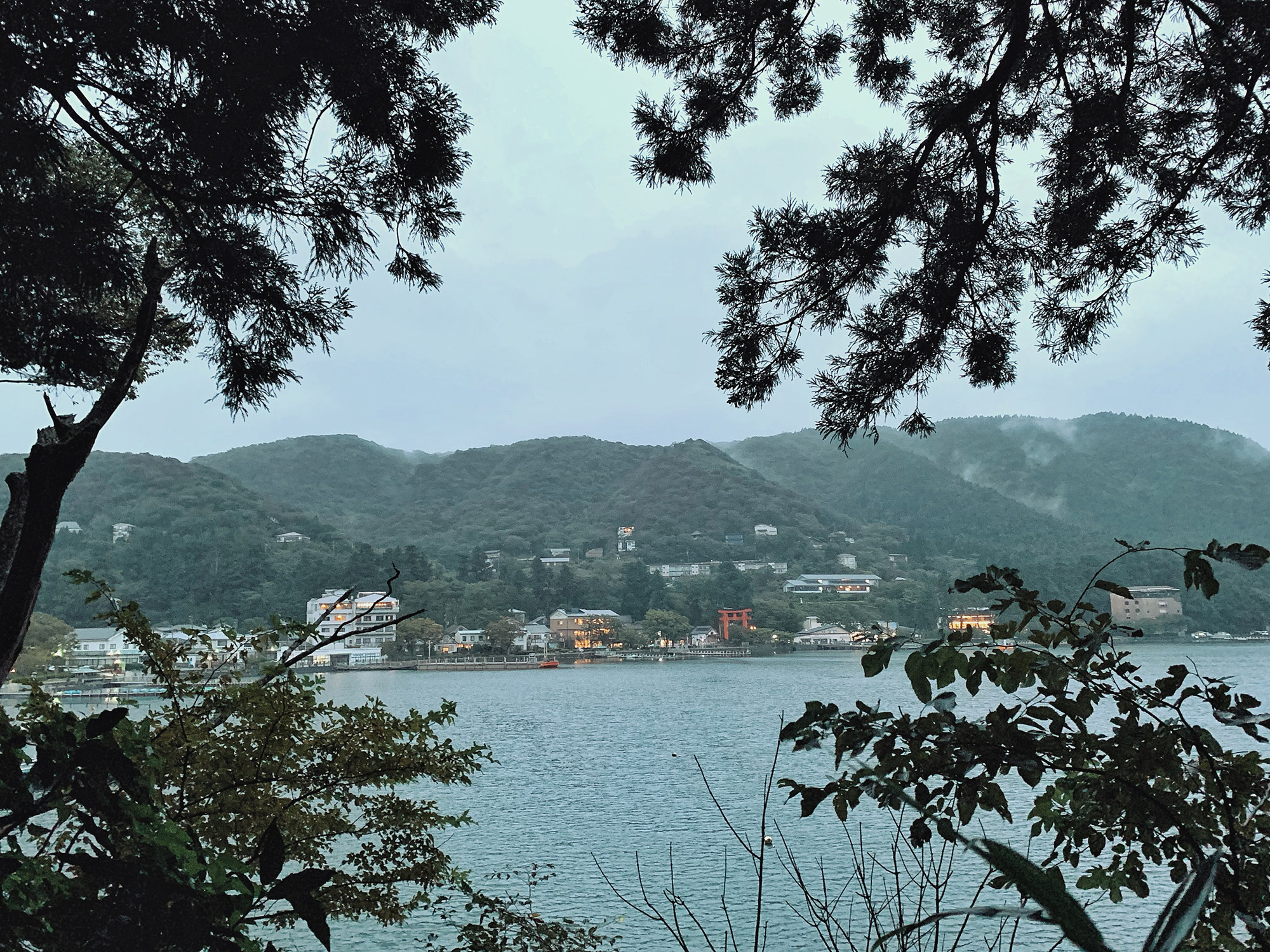
View of Hakone, a popular onsen town to escape from Tokyo for a daytrip
- Kamakura (45 minutes from Tokyo) – Just this minute I realized that a print that I have in my room is of the Great Buddha in Kotoku-in Temple that this Japanese seaside city is famous for…what other reason do you need to hop of a day trip to Kamakura? You’ll also tour around majestic Buddhist zen temples and impressive Shinto shrines as well as the idyllic Enoshima Island.
- Hakone (1.5 hours from Tokyo) – Part of the Fuji-Hakone-Izu National Park in the Kanagawa Prefecture of Japan, join a full-day tour from Tokyo to Hakone. Take in all the local sights, including a cruise across Lake Ashi where you may catch a glimpse of the iconic Mt. Fuji (on a clear day). Or stay for the weekend to relax at one of the many glorious onsen hot springs that the area is known for.
-
Nikko (2 hours from Tokyo) – A worthy addition to tack on to your 5-day Tokyo itinerary, this ancient city is 100km north of Tokyo in the Tochigi Prefecture. Known for its stunning landscape scenery and austere shrines, Nikko is a serene escape into nature and spirituality. If you have the JR Pass (why wouldn’t you?), then Nikko is covered, otherwise purchasing the Nikko All Area Pass will be the easiest and most cost-efficient way for visitors to get there.
Are you still with me? If you follow this 5-day Tokyo itinerary to a “T” and don’t perish, I will be mightily impressed. I almost expired just from writing it! Just when I think I’m emotionally health, I embark on a masochistic endeavour like this…BUT now I’ve inspired myself to re-visit Japan once international travel is possible again.
If you want to keep this eating train going, check out this post about eating your way through the Tsukiji Market.
Keep your stalking game strong and follow me @teriaki if you aren’t already!

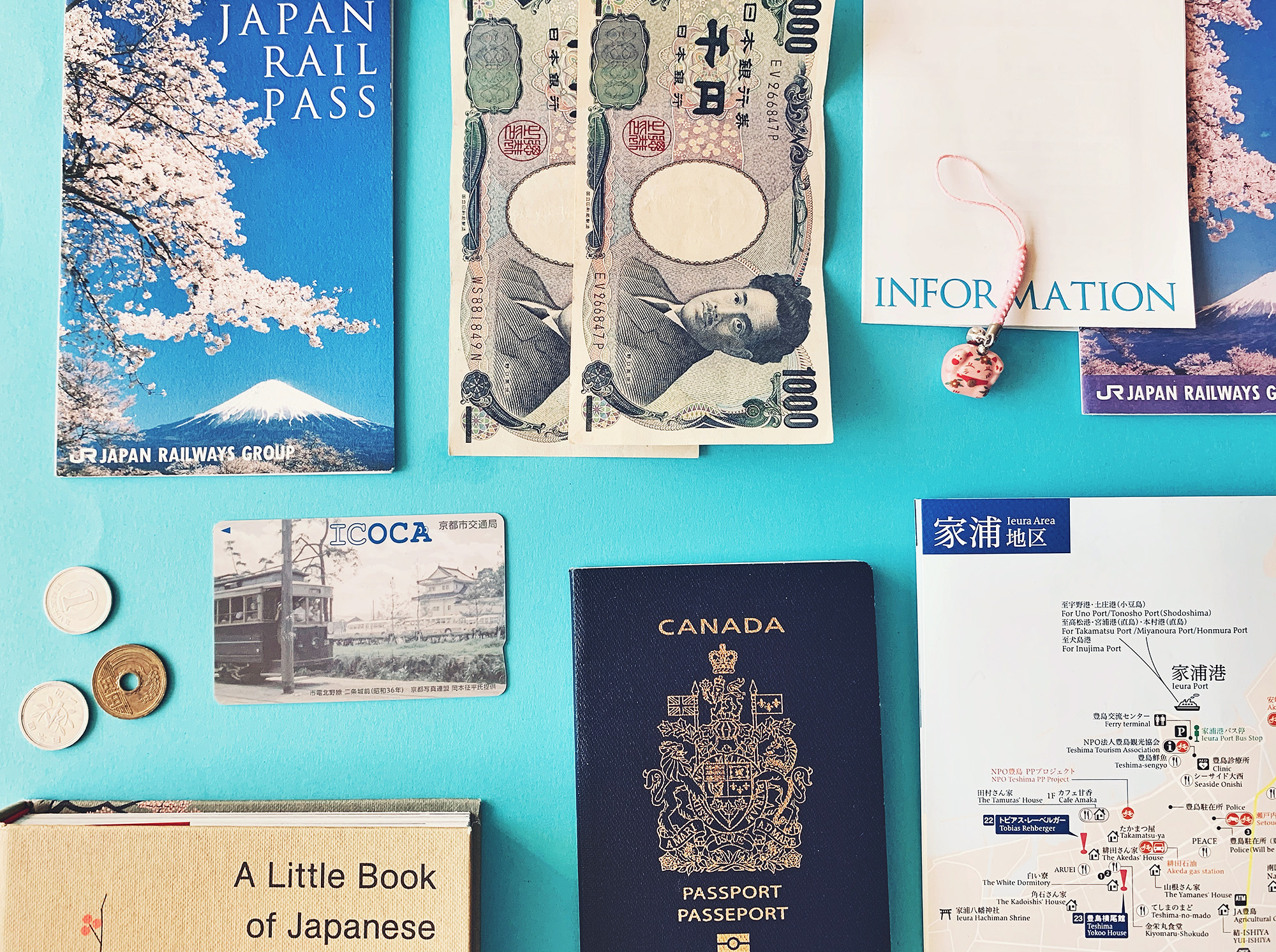



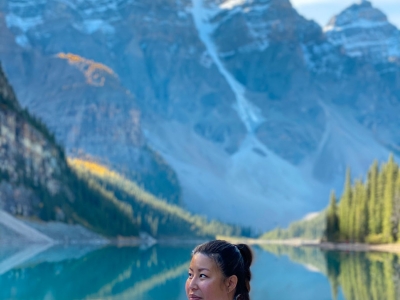



0 Comments